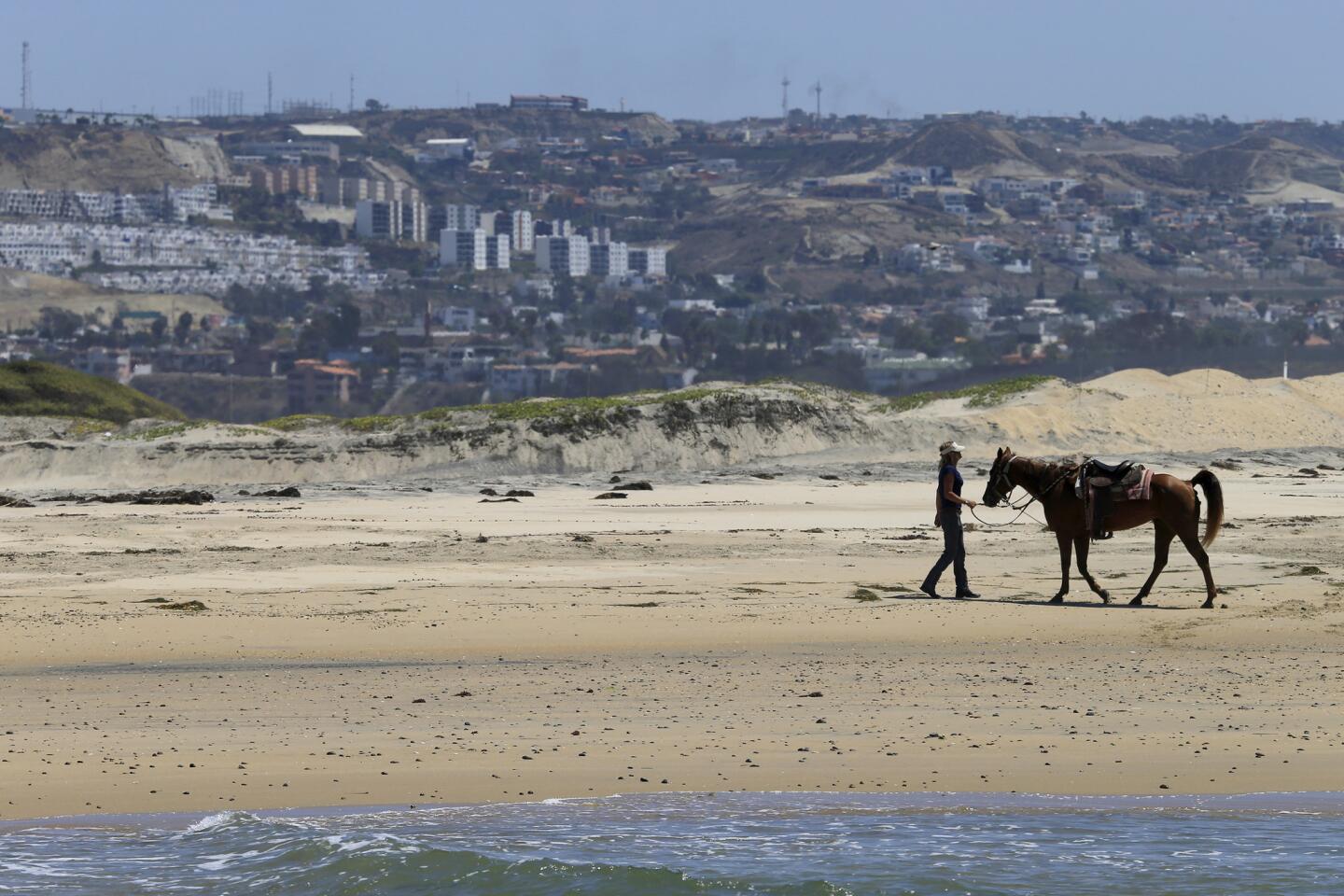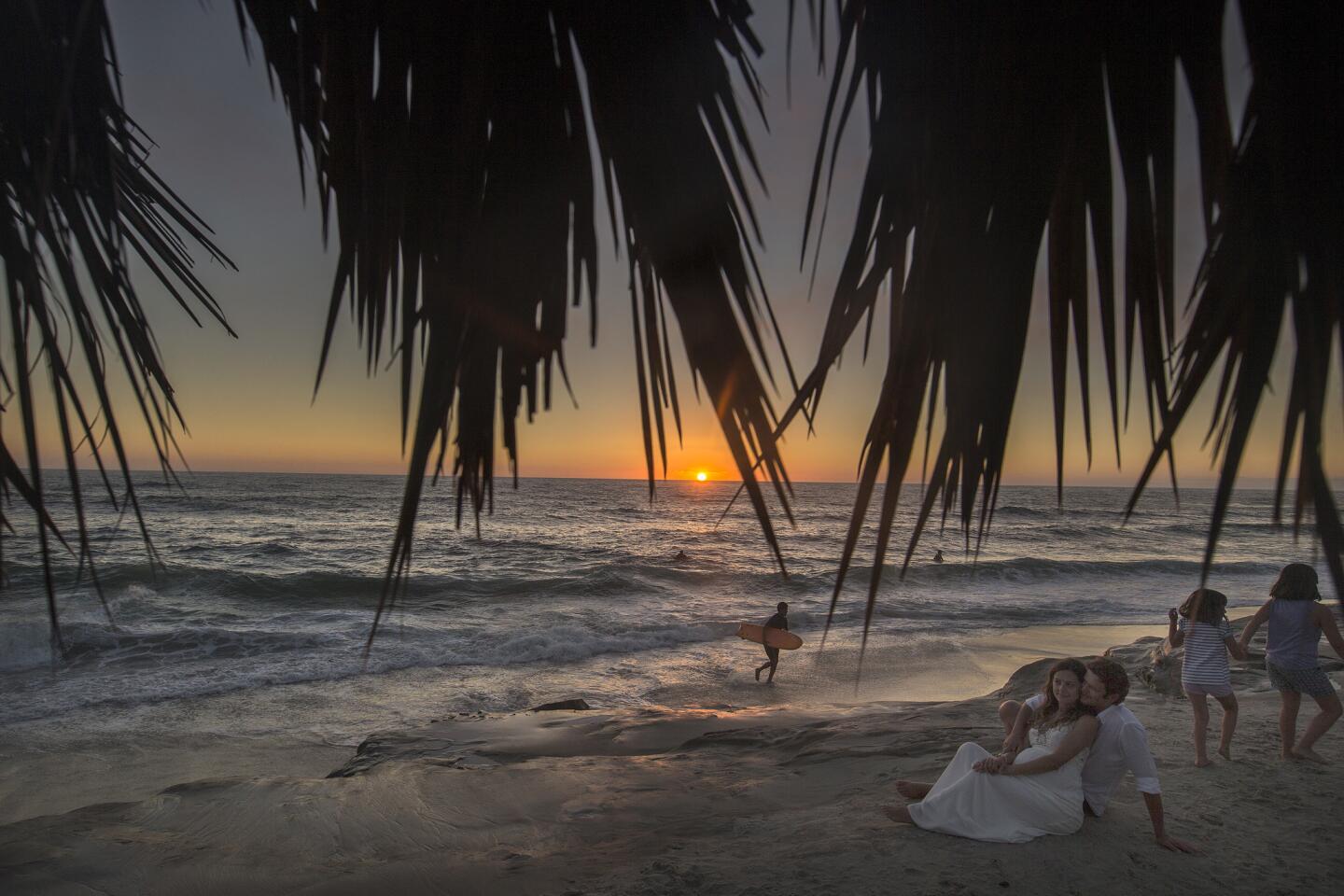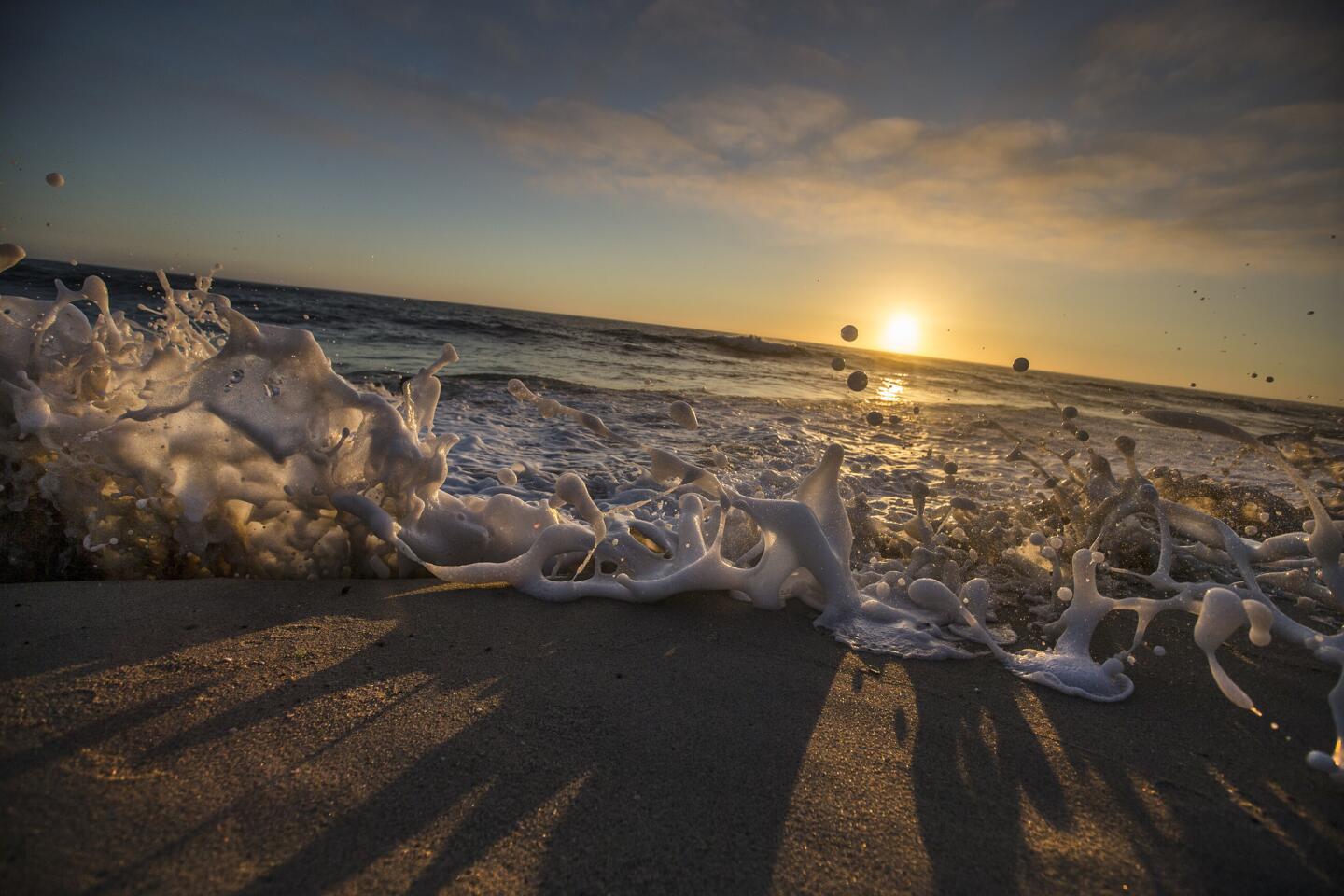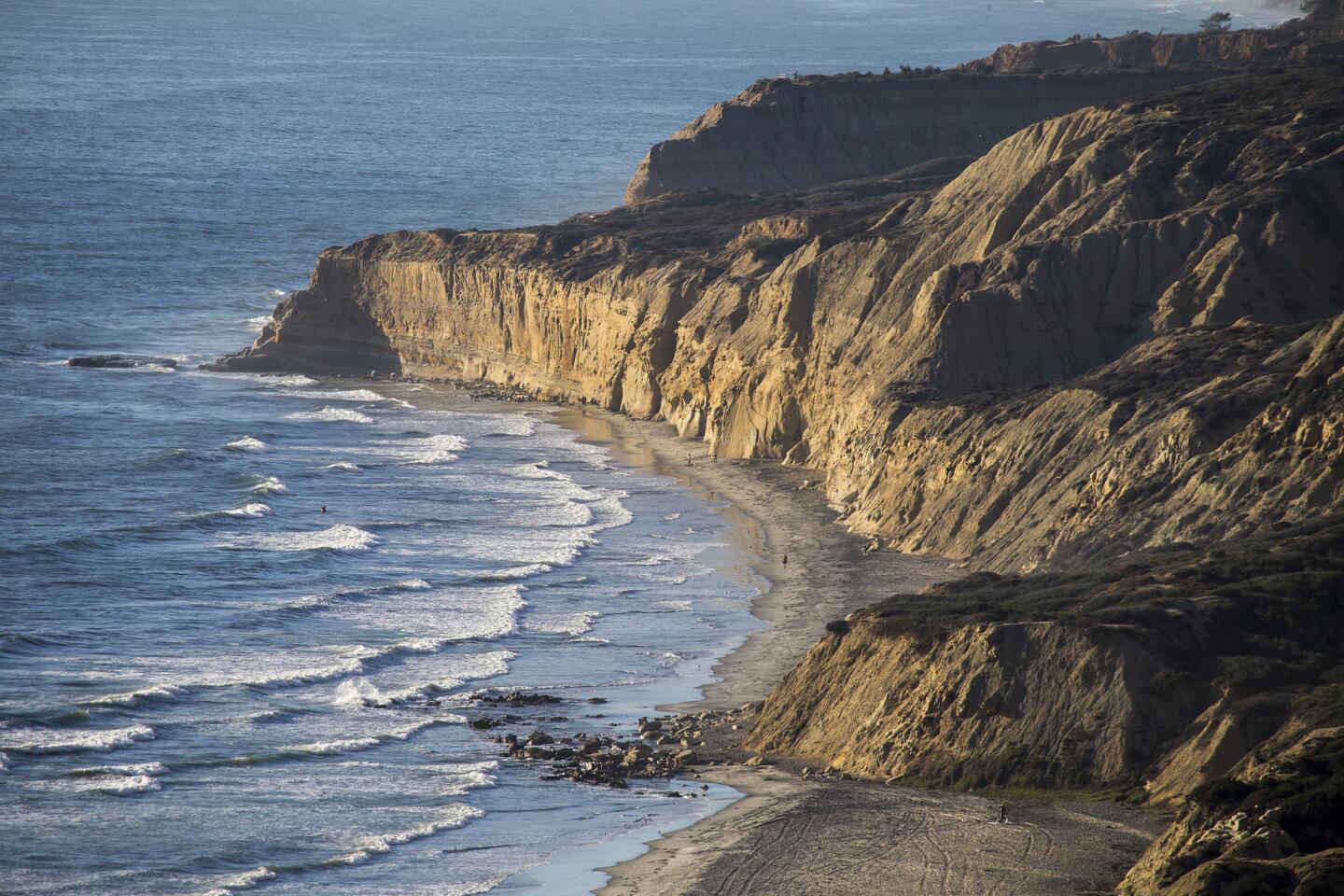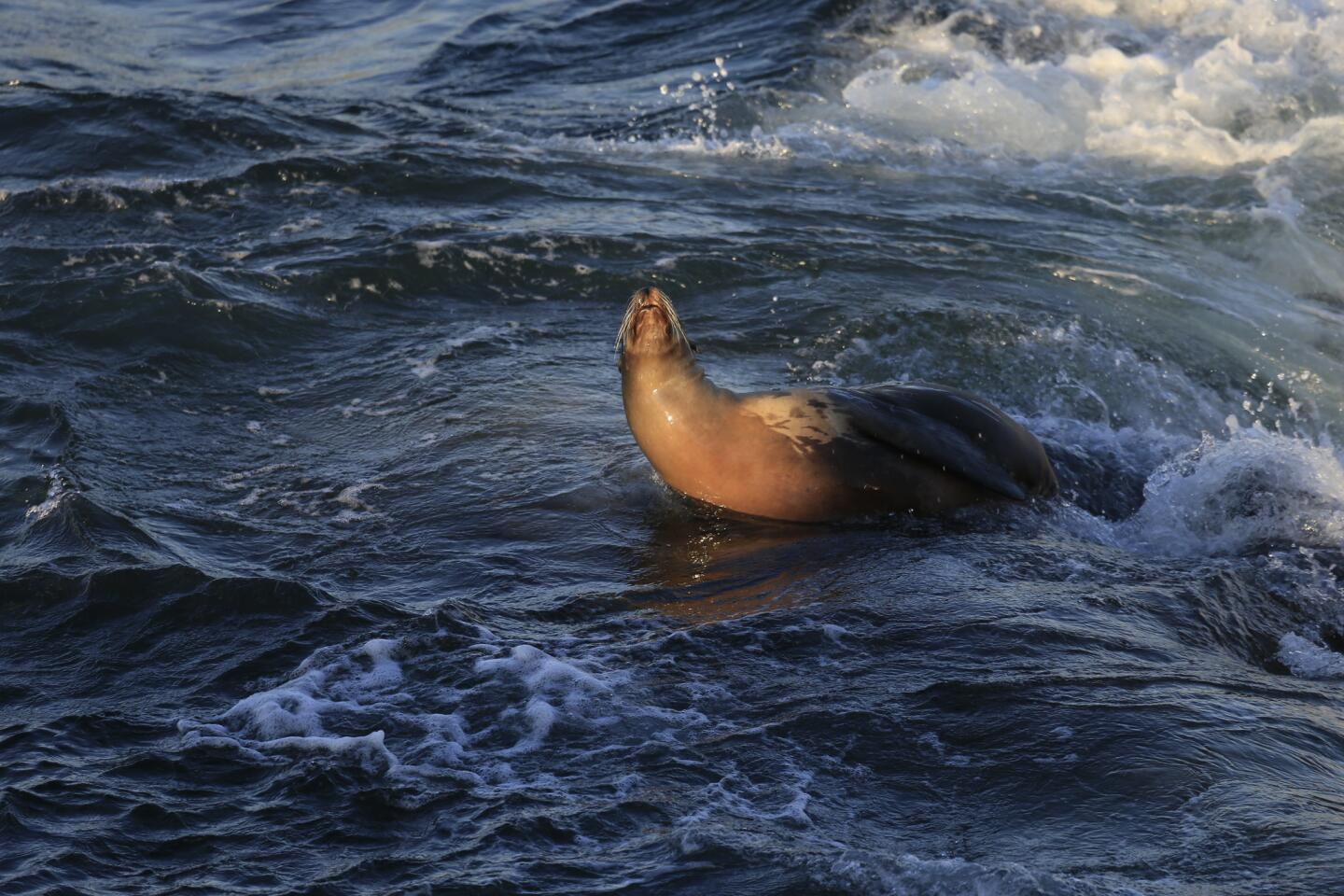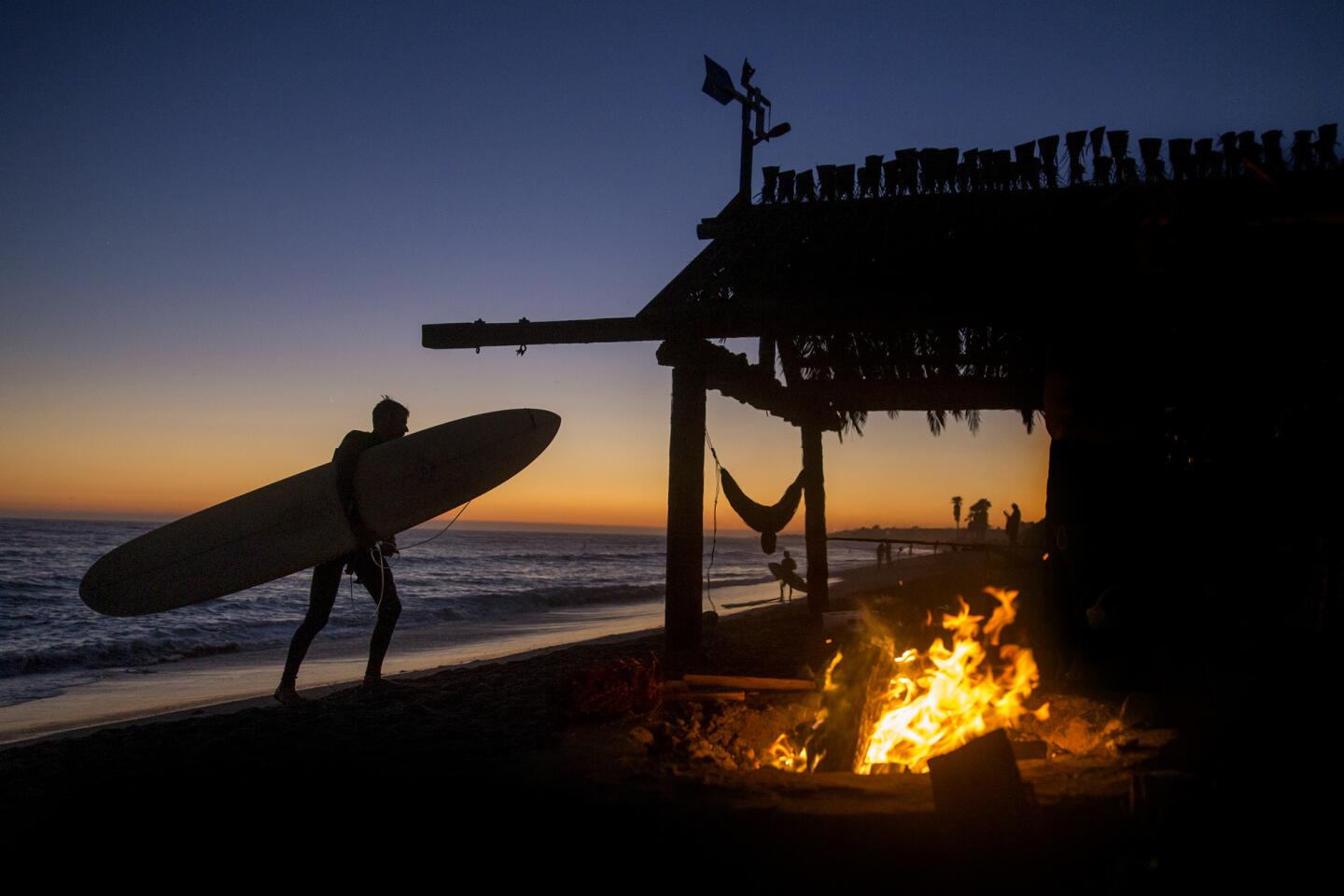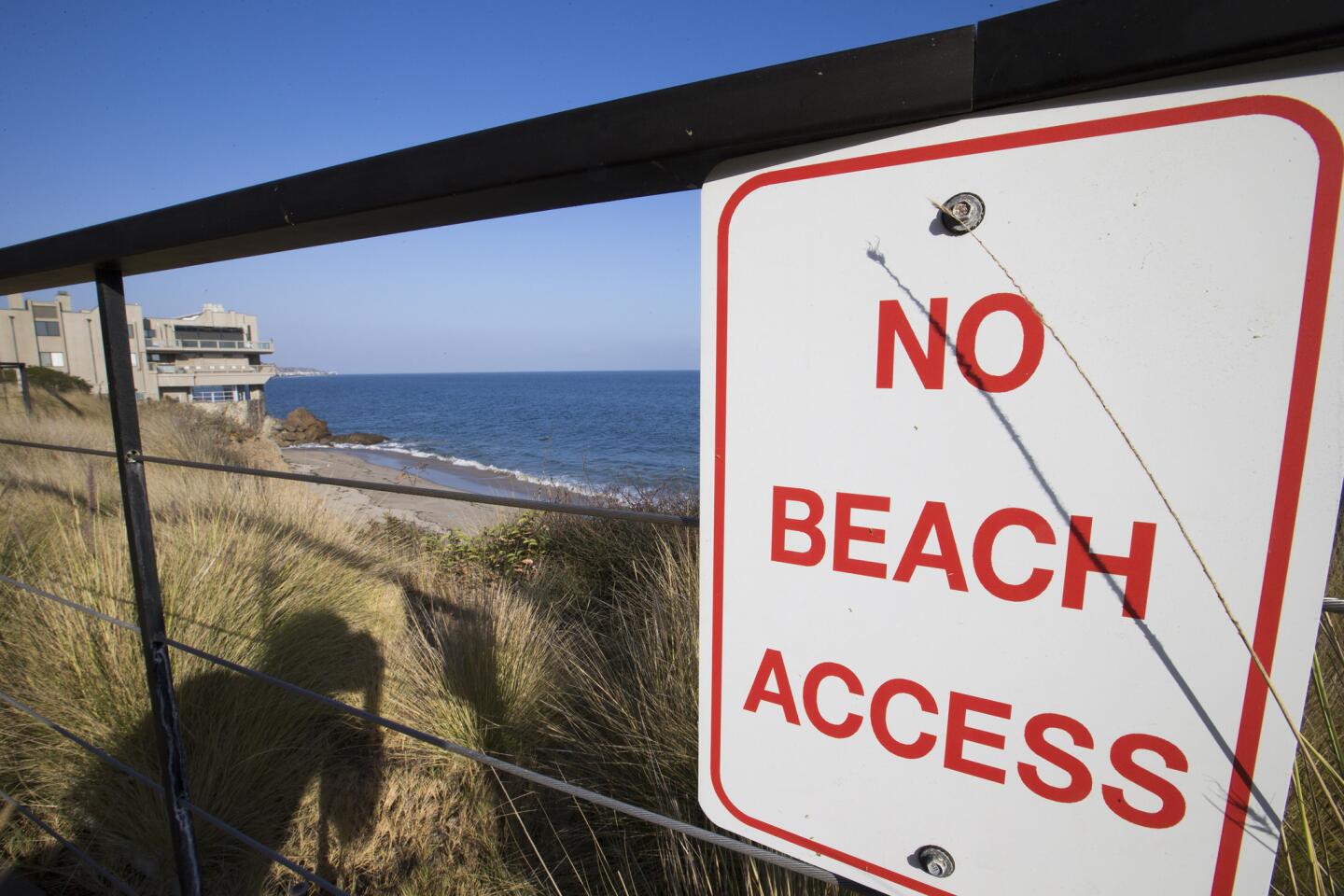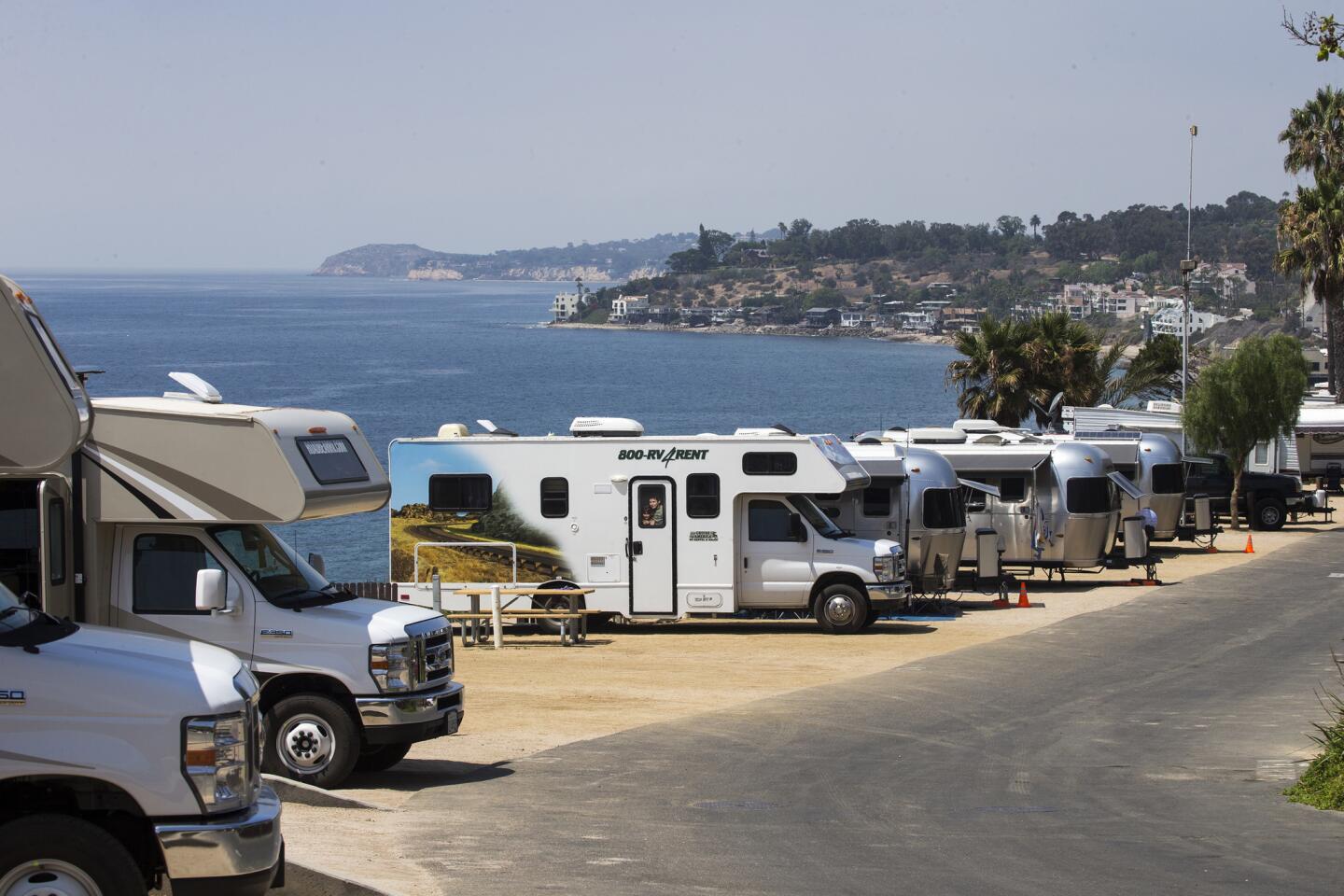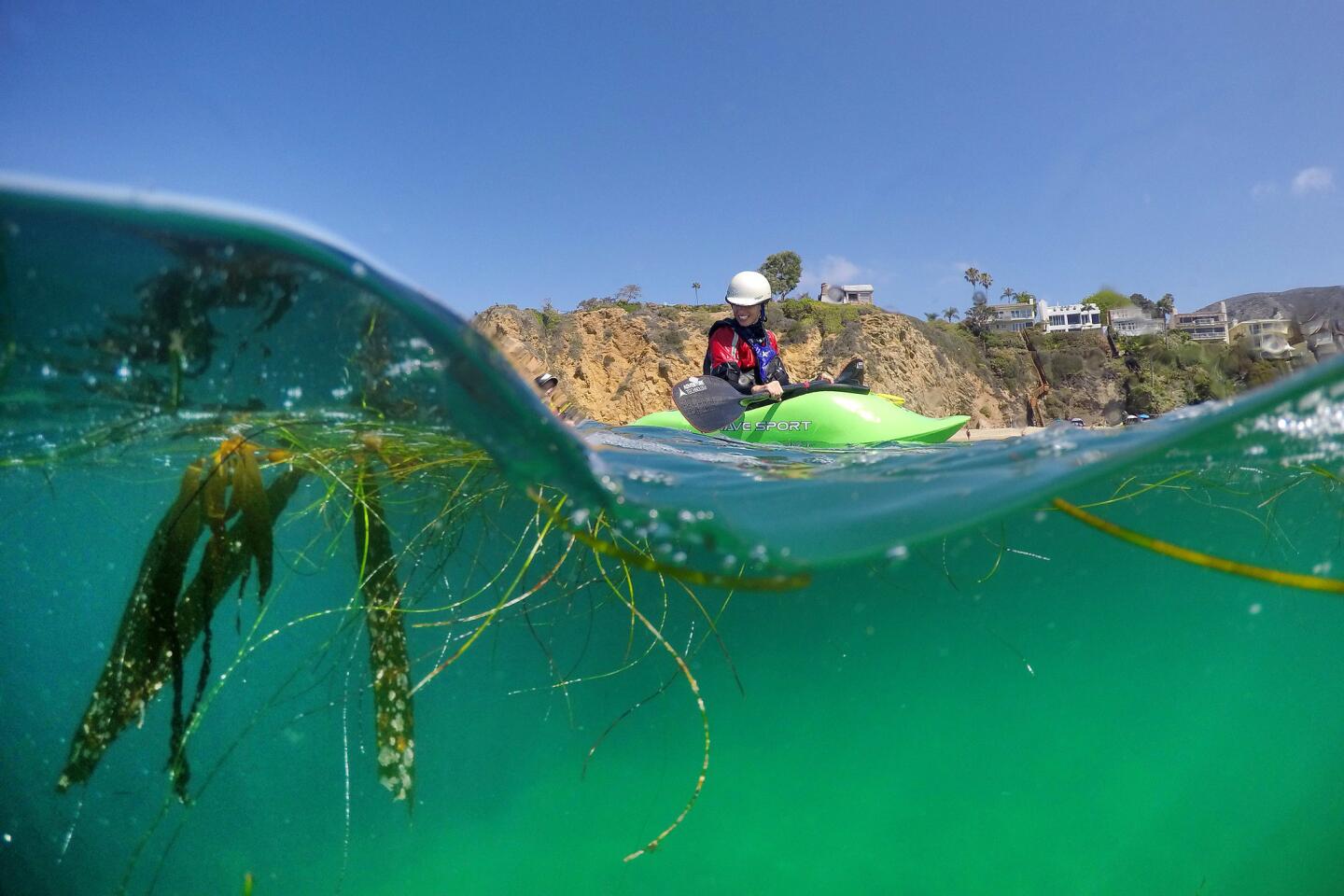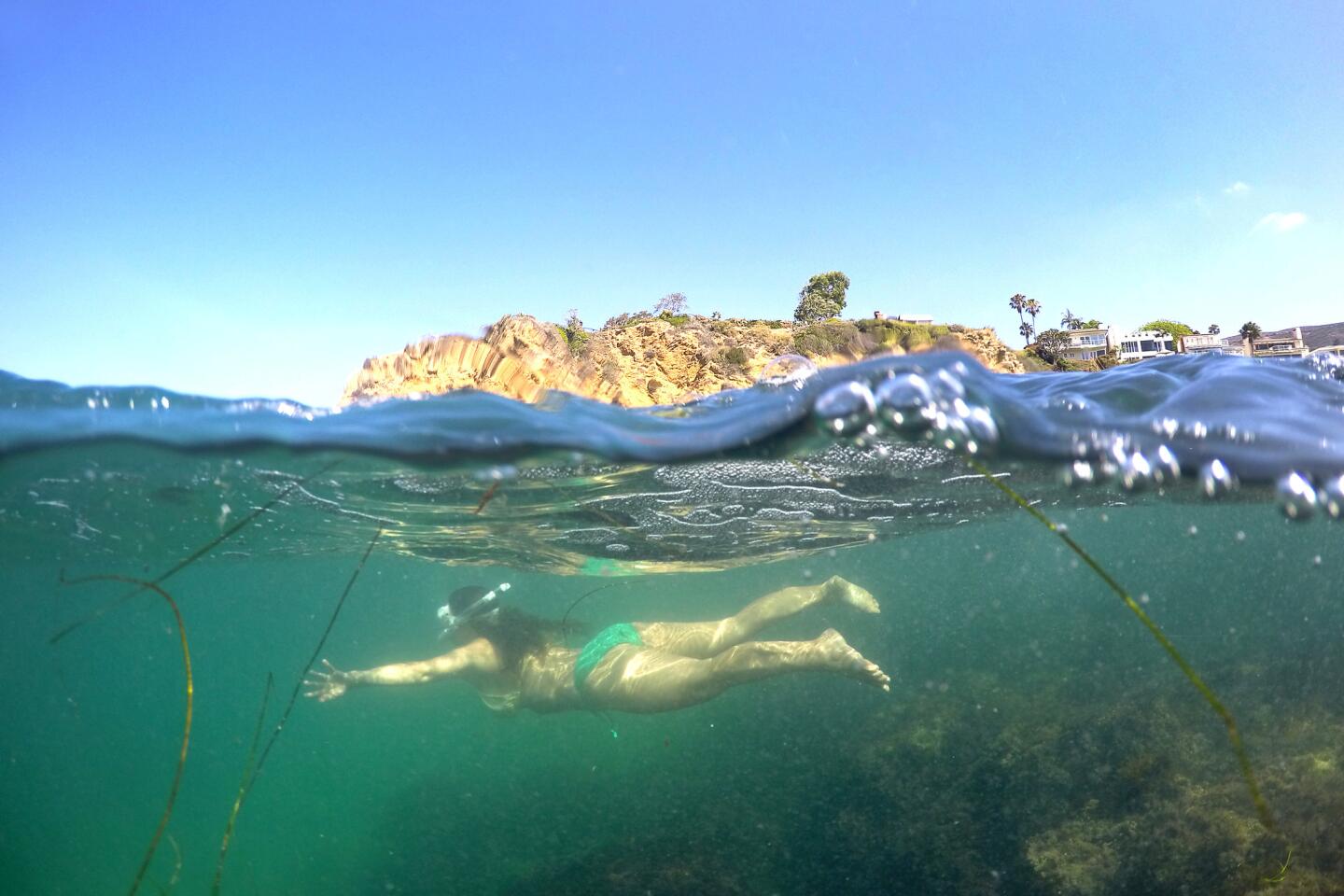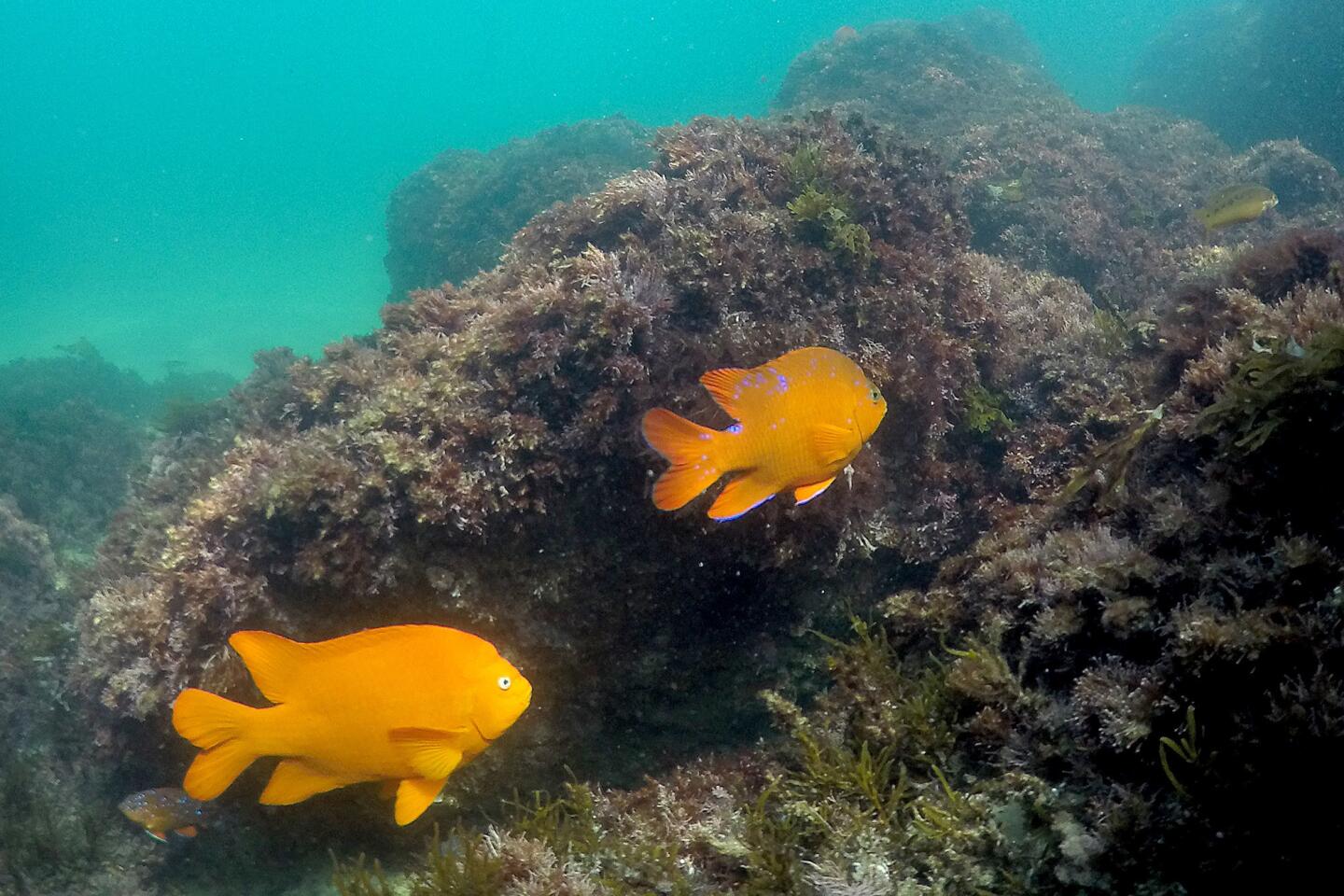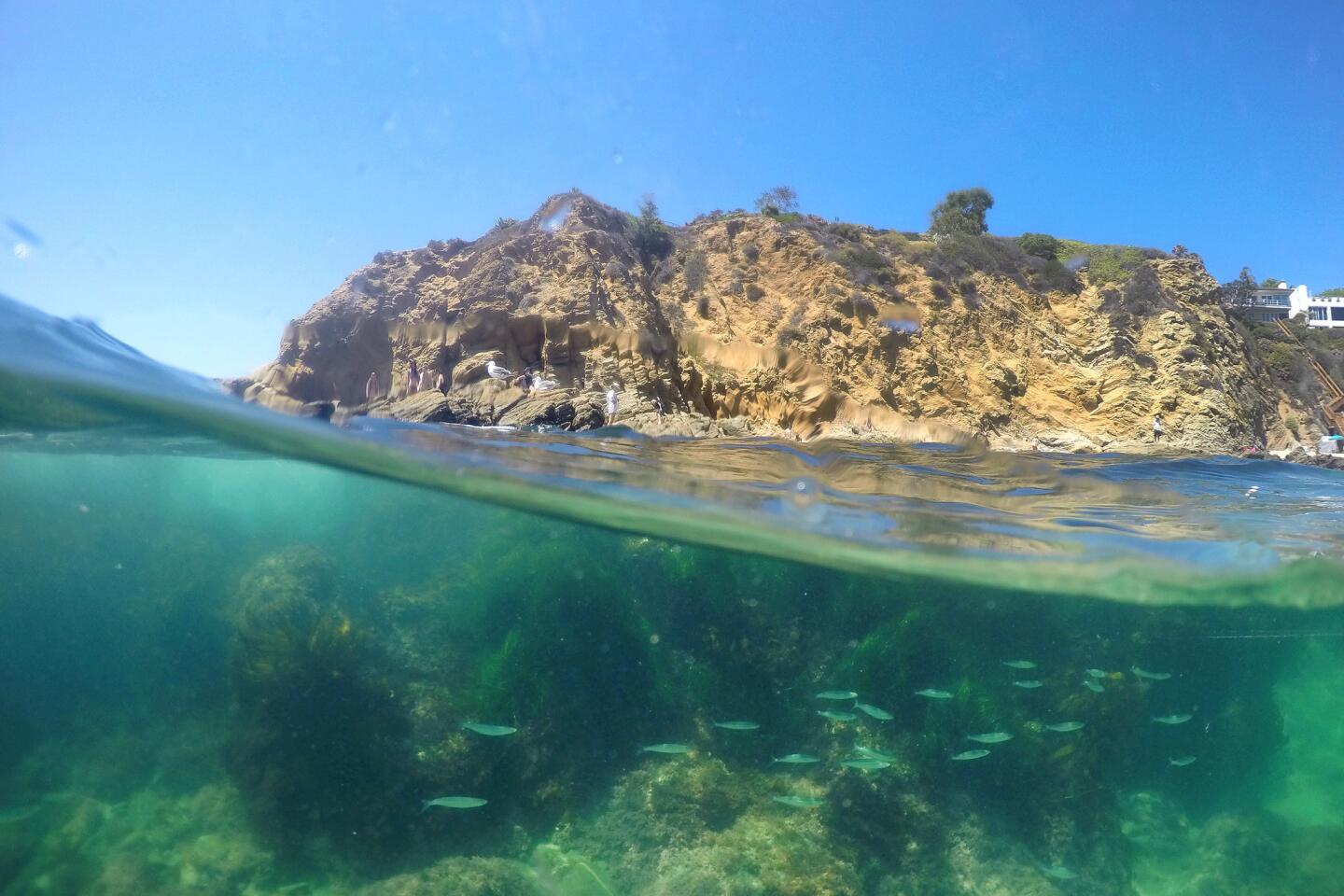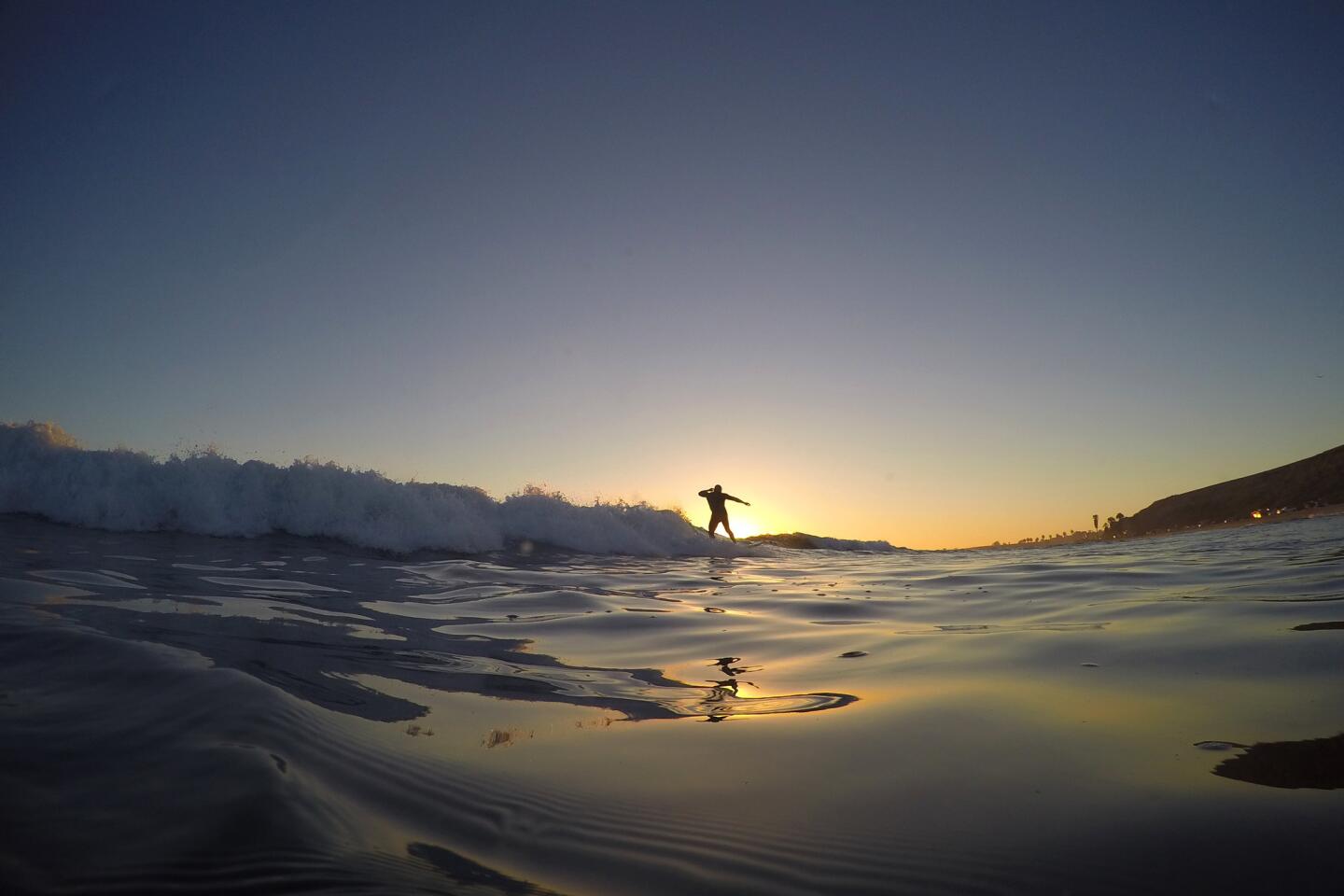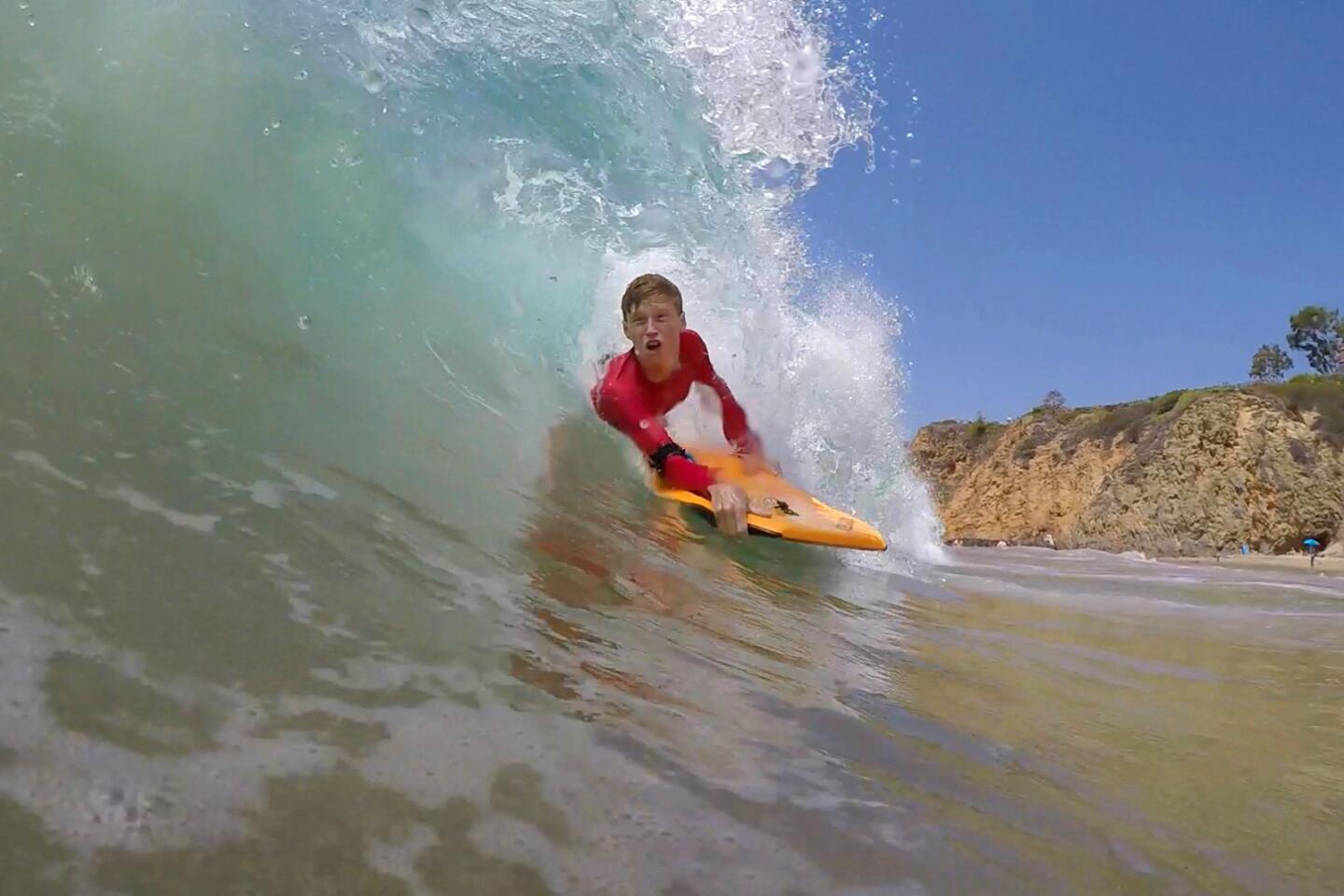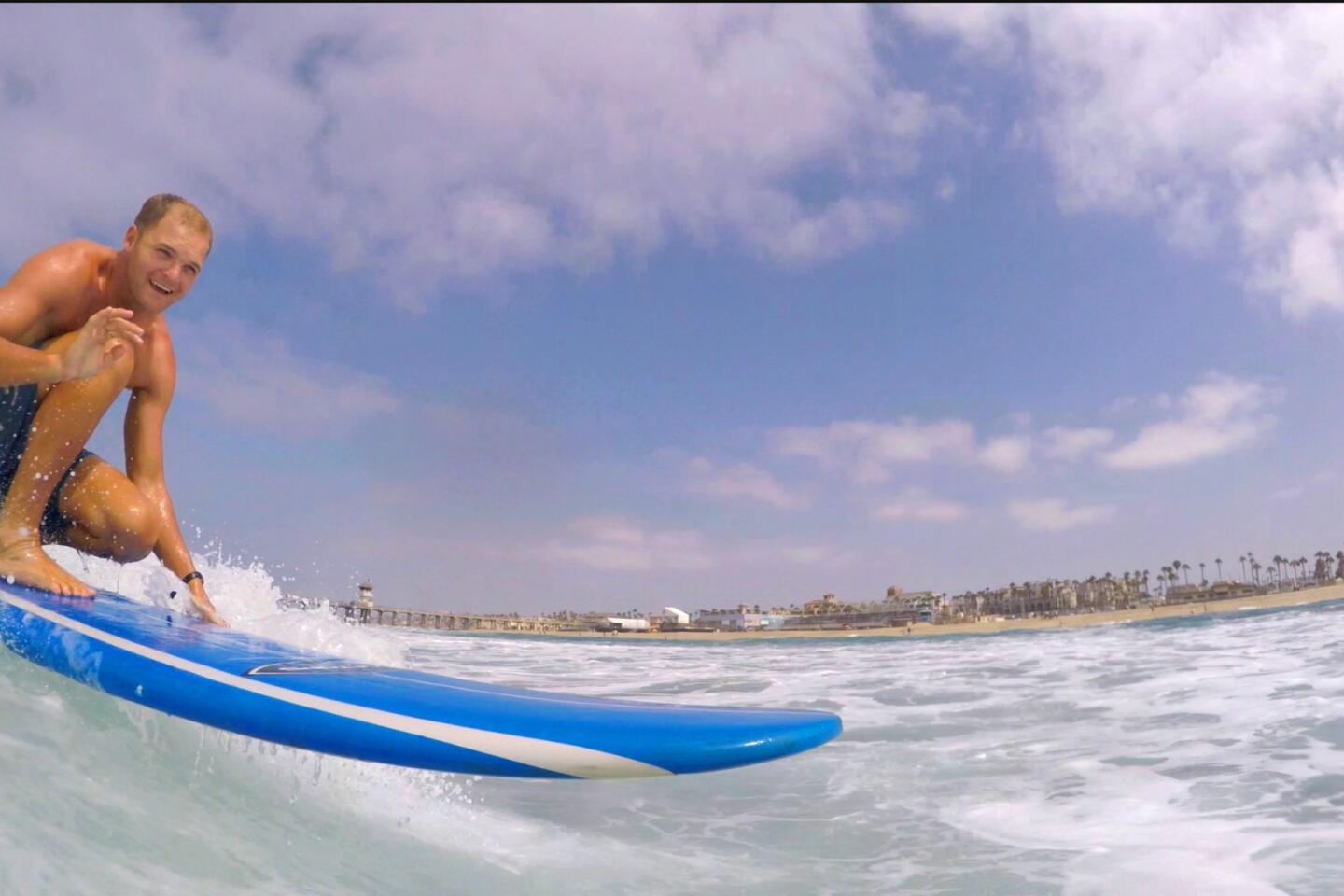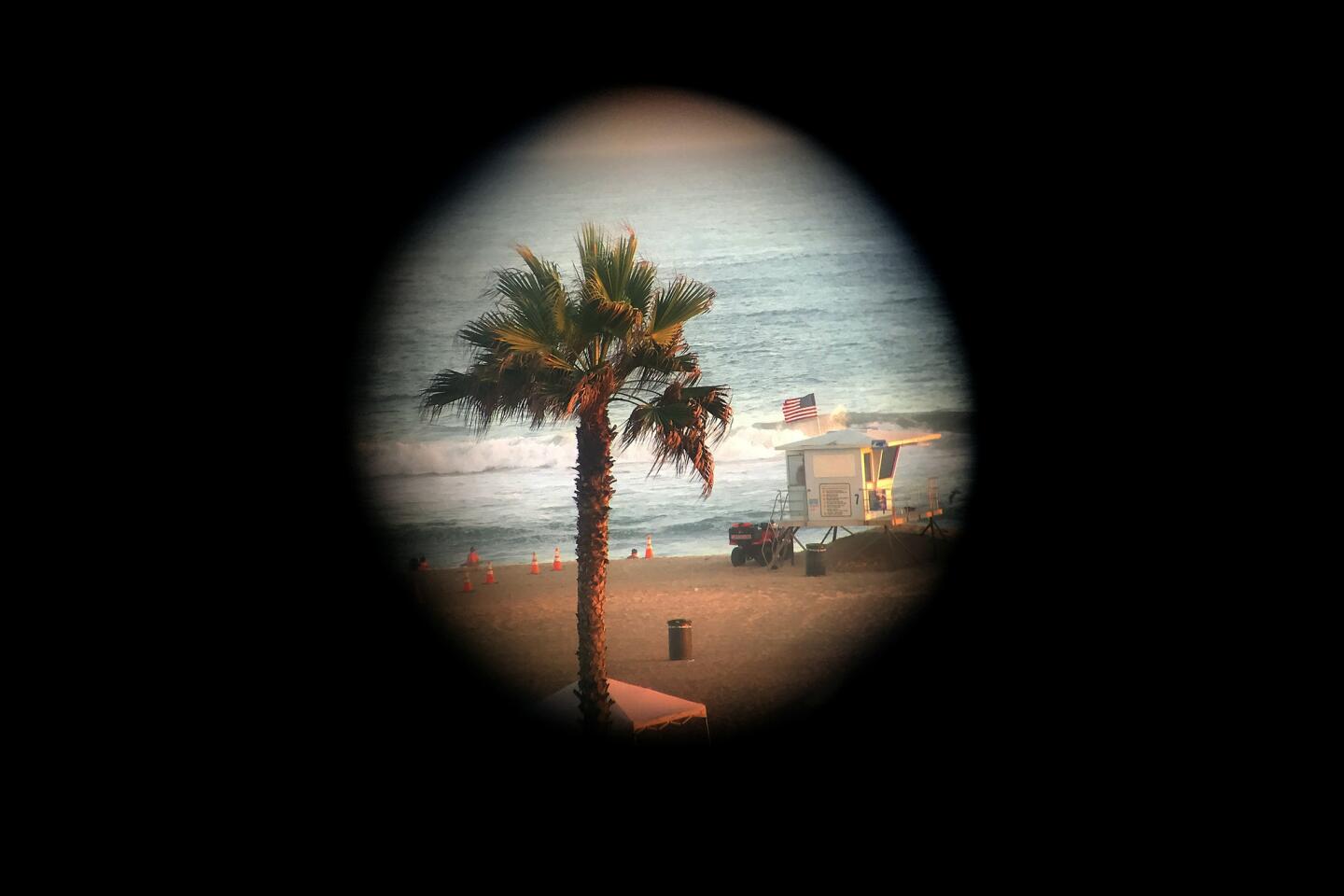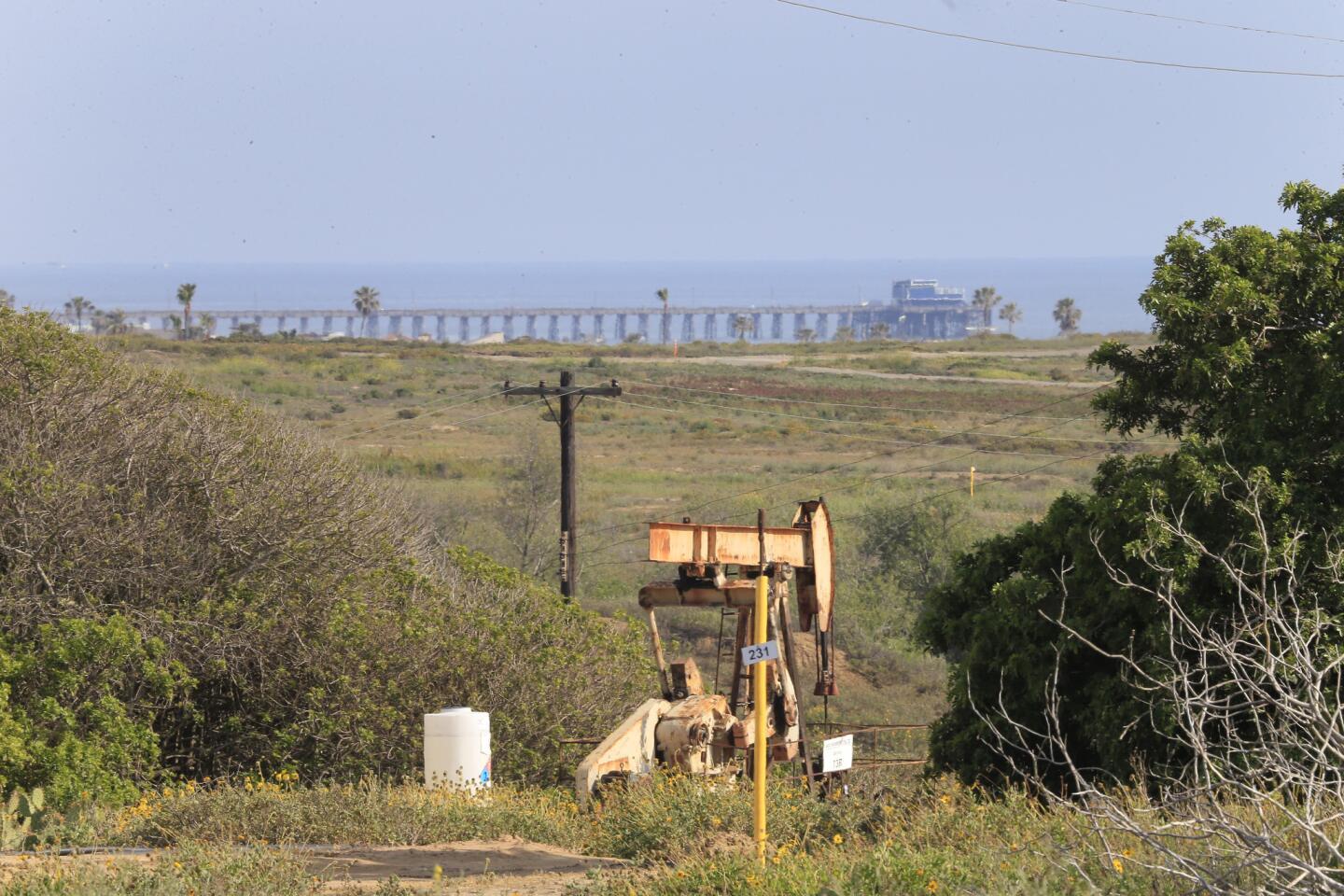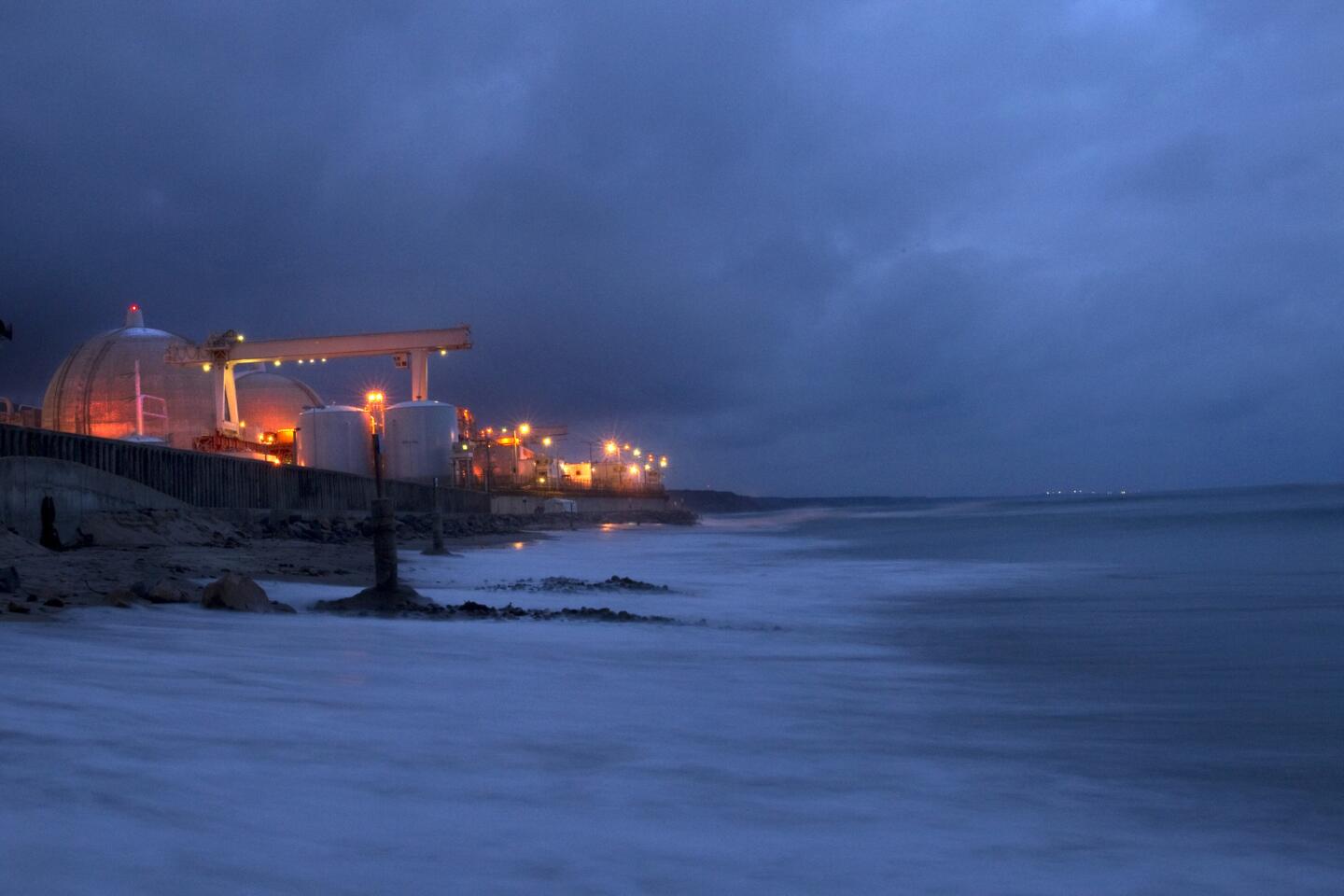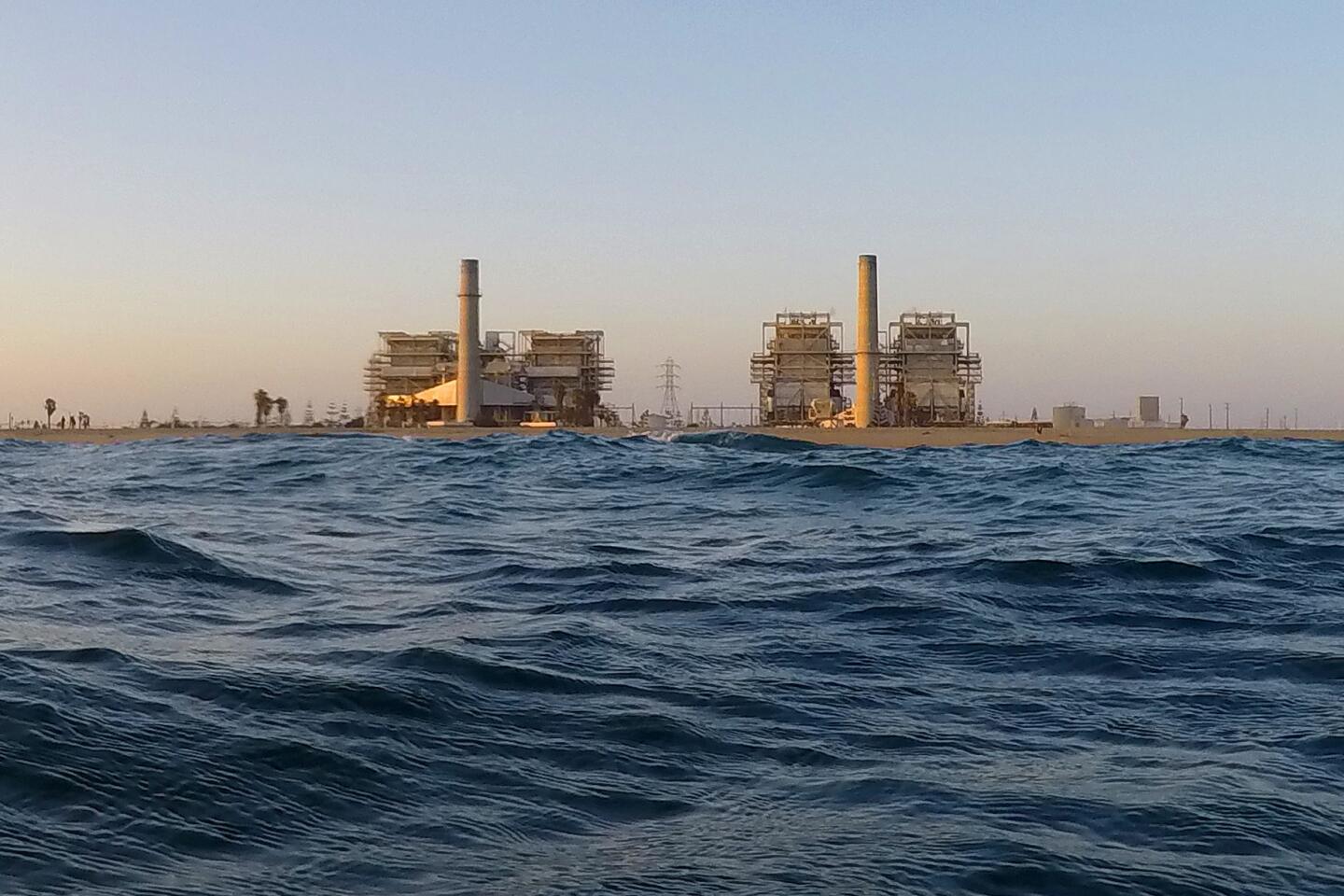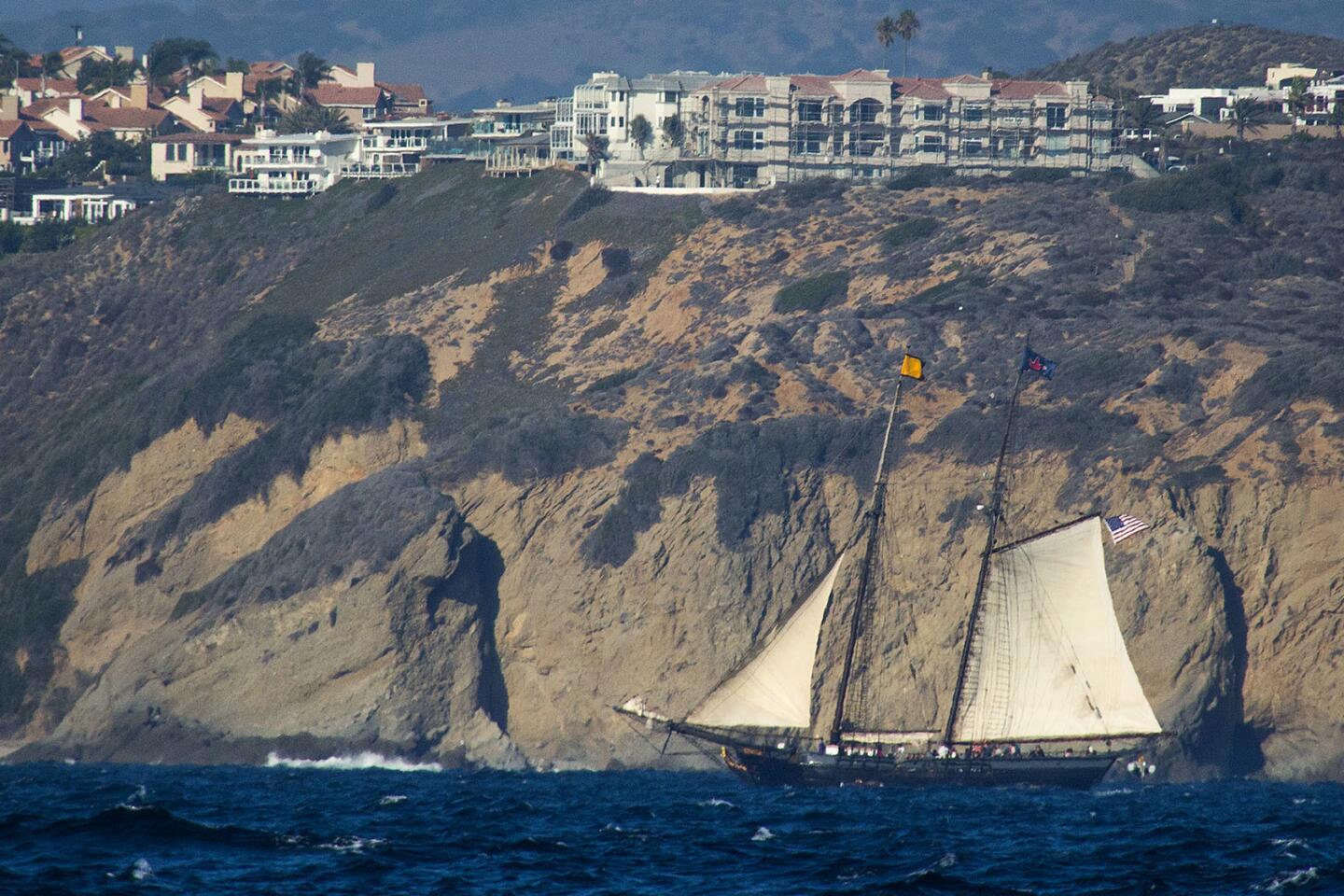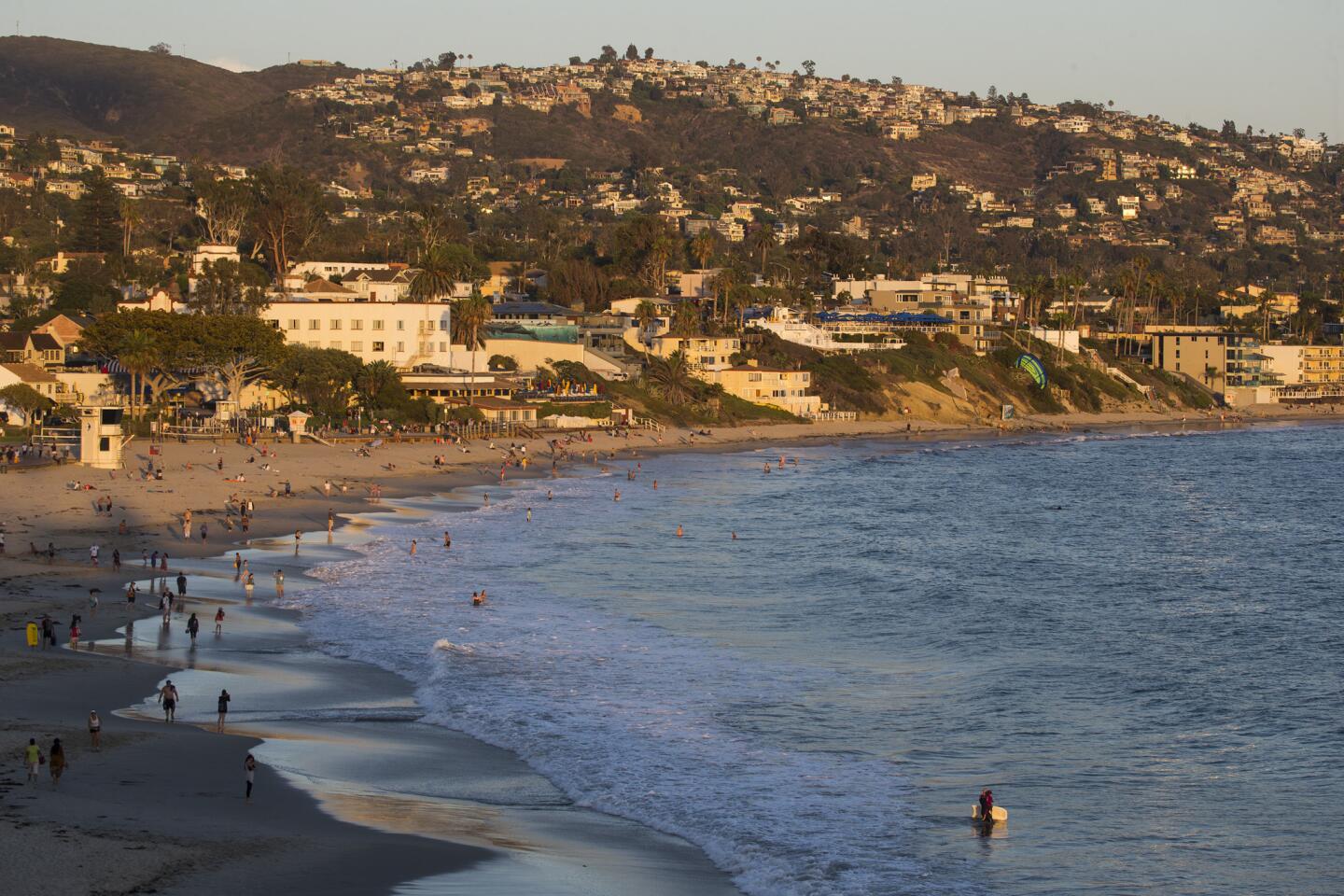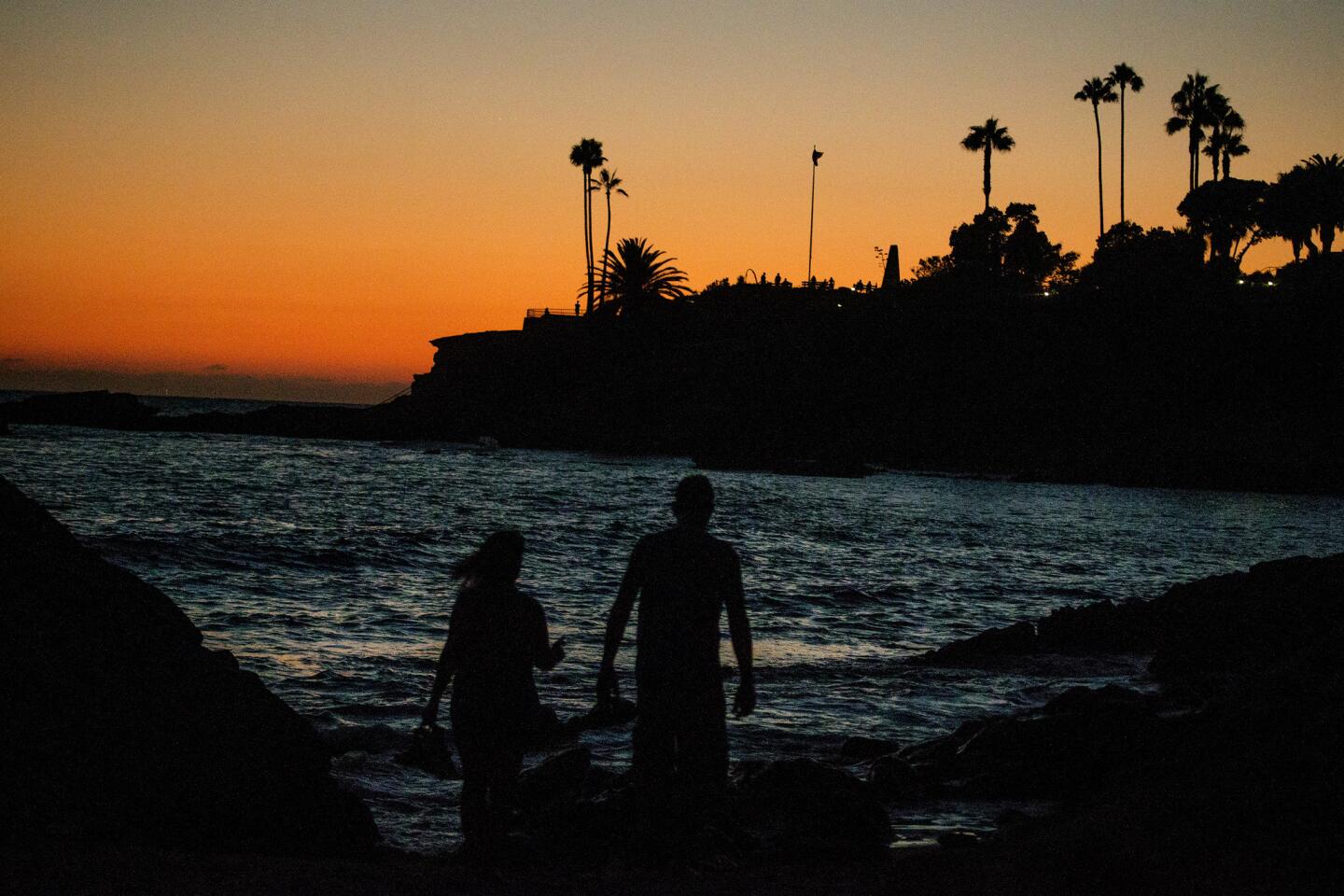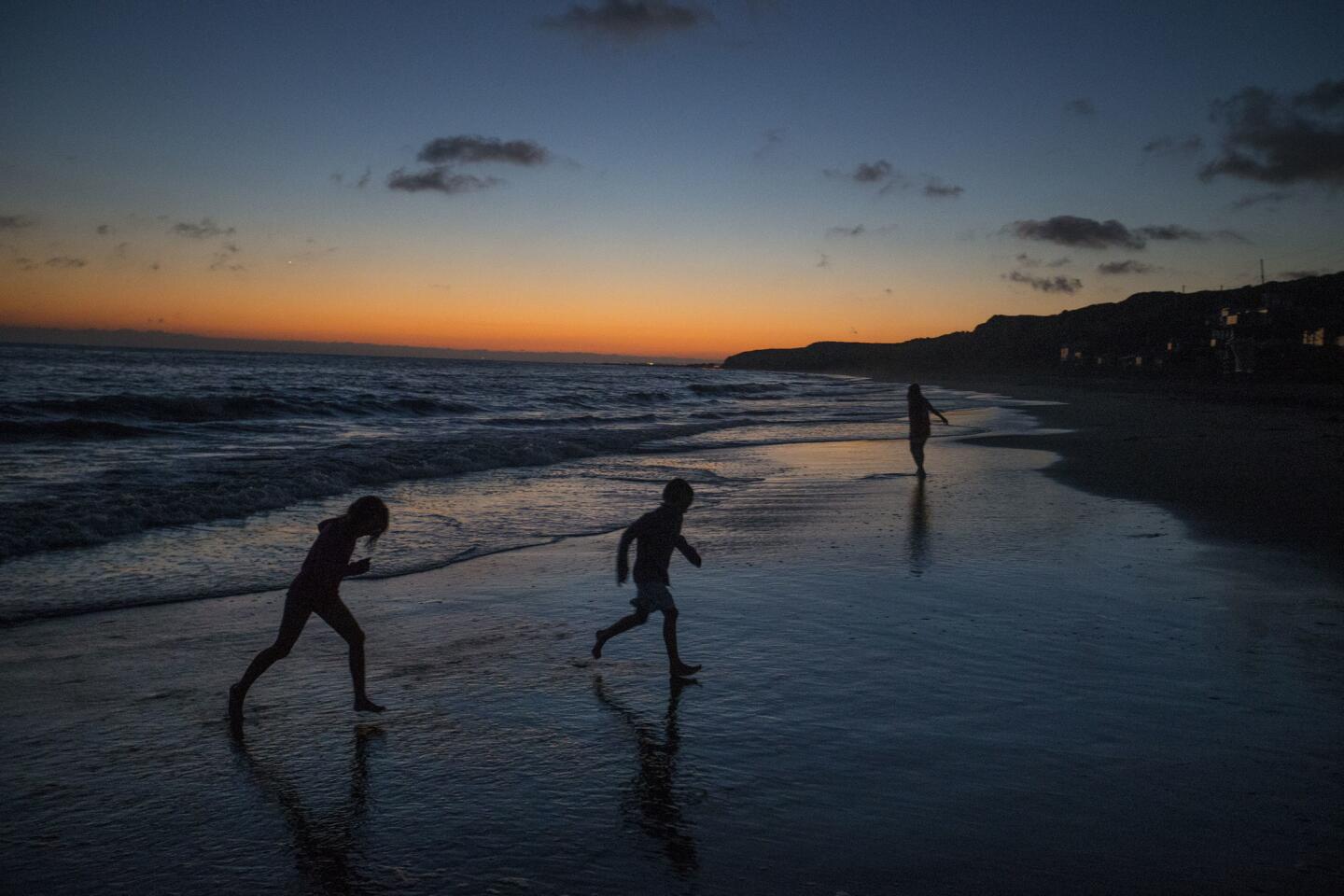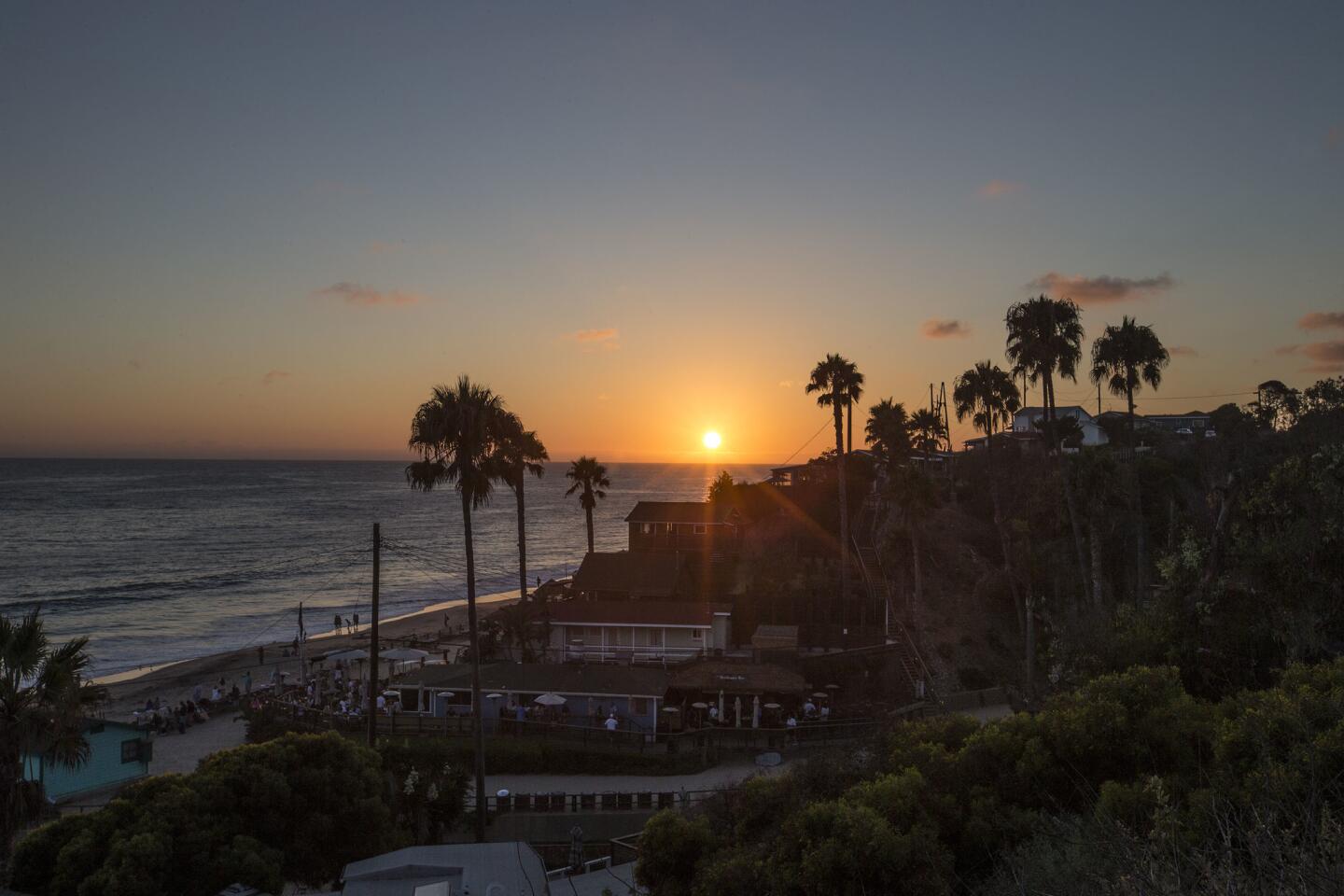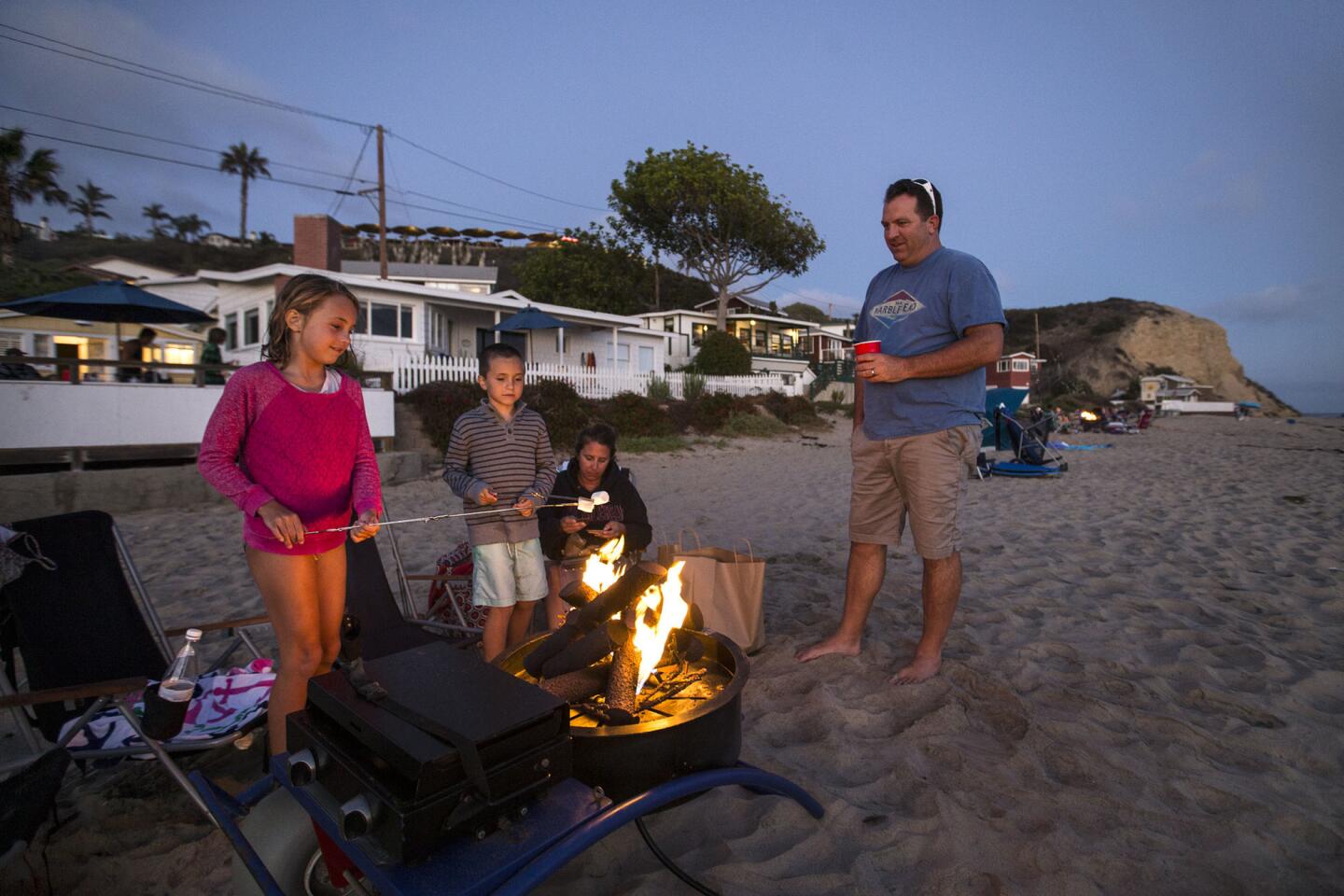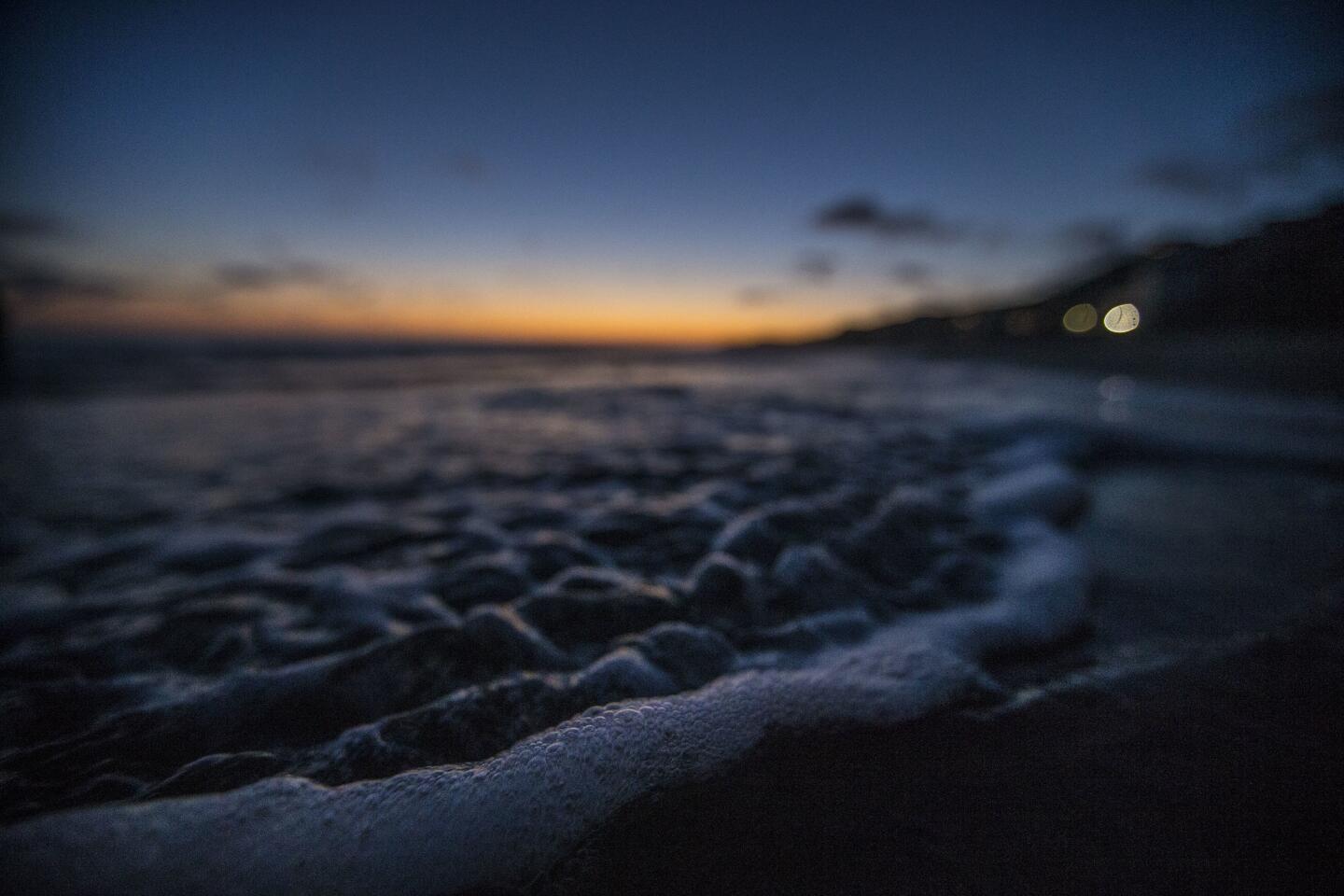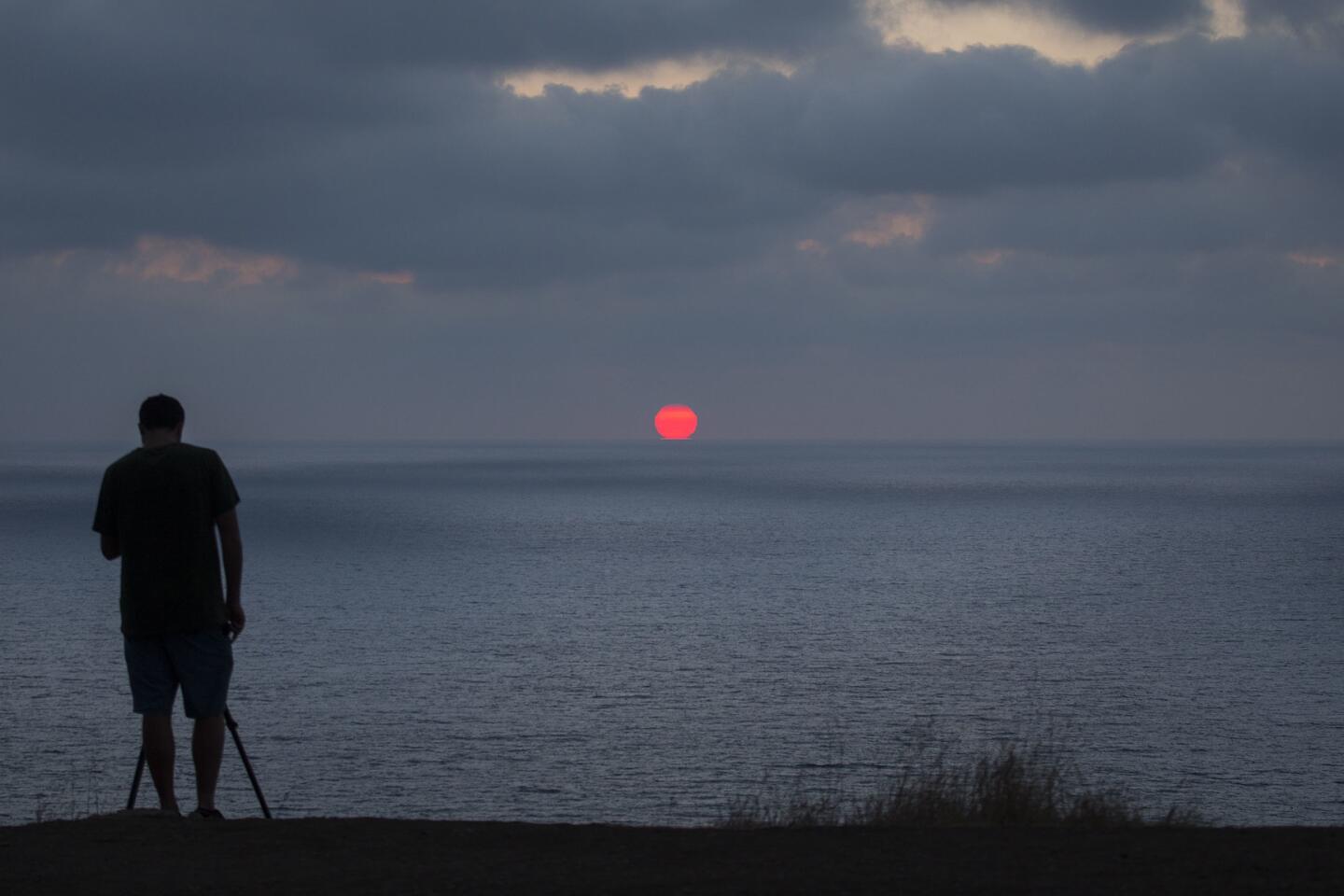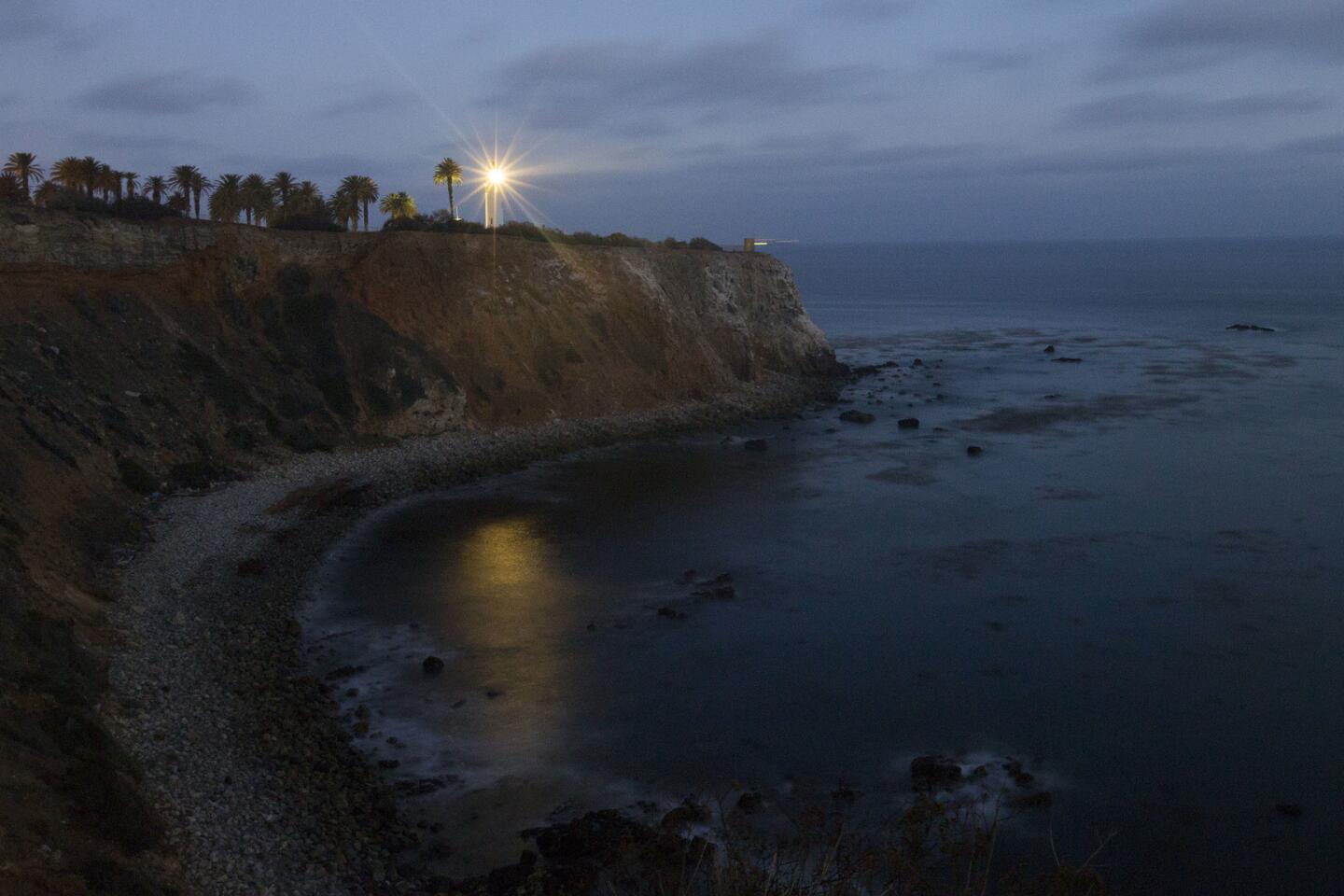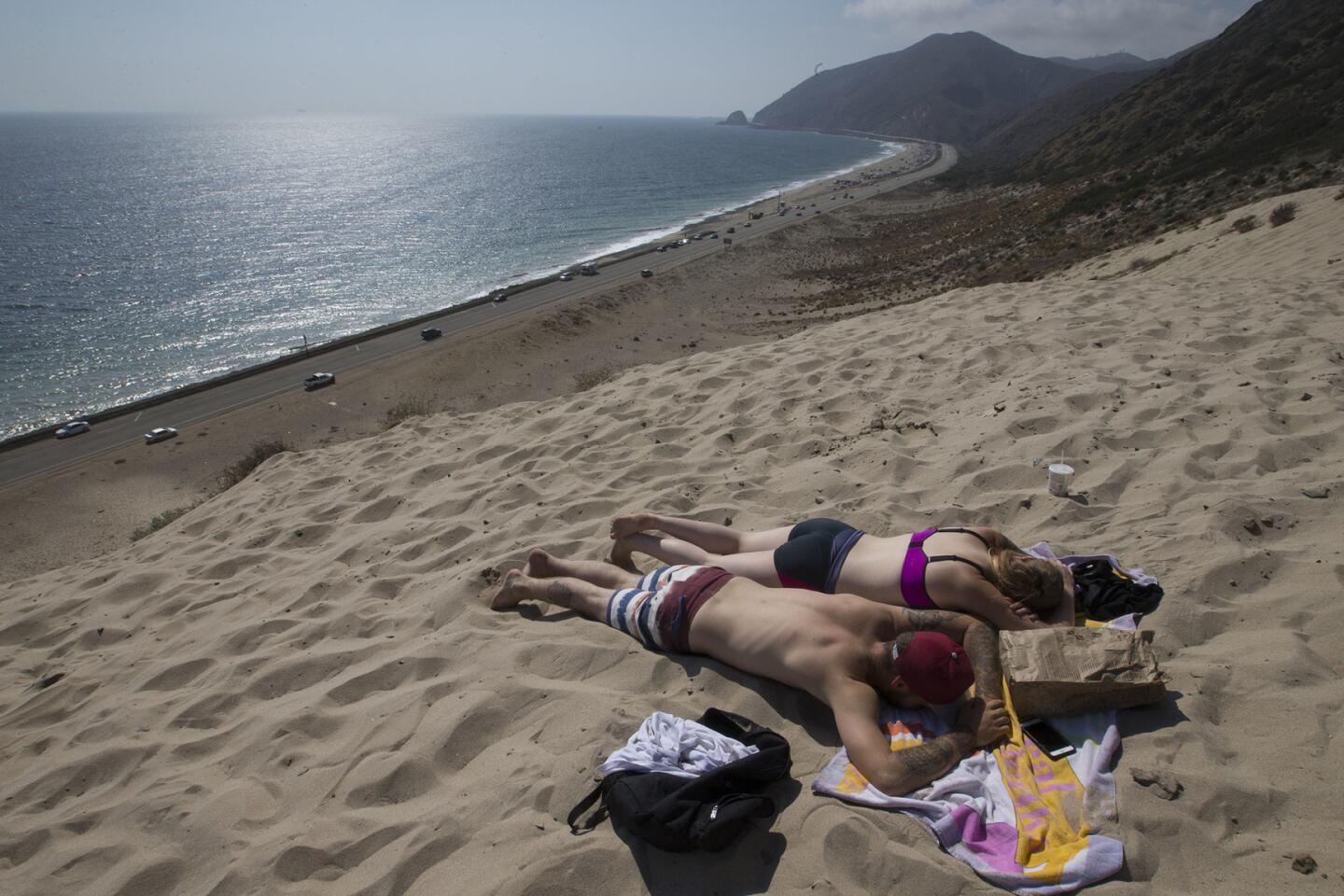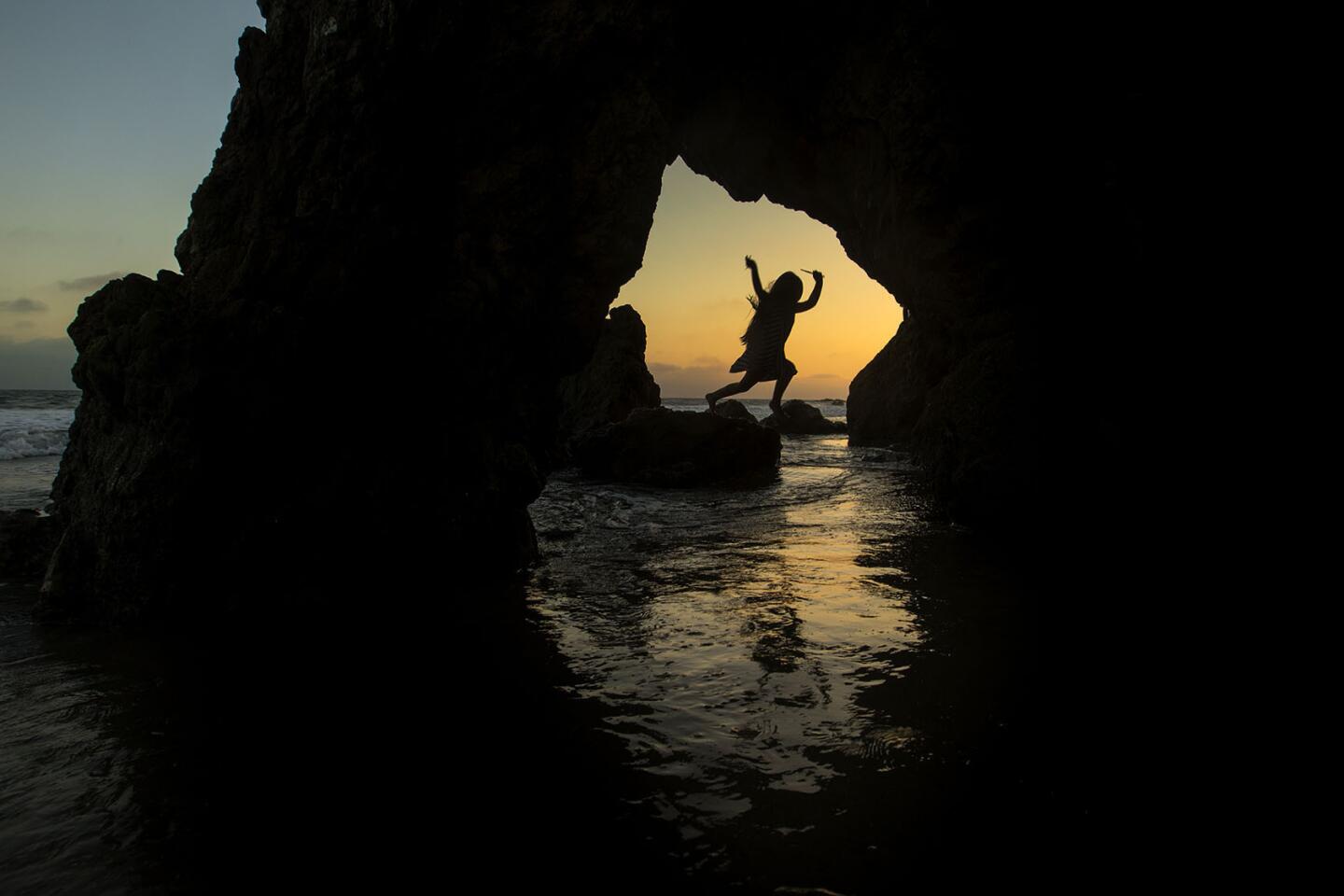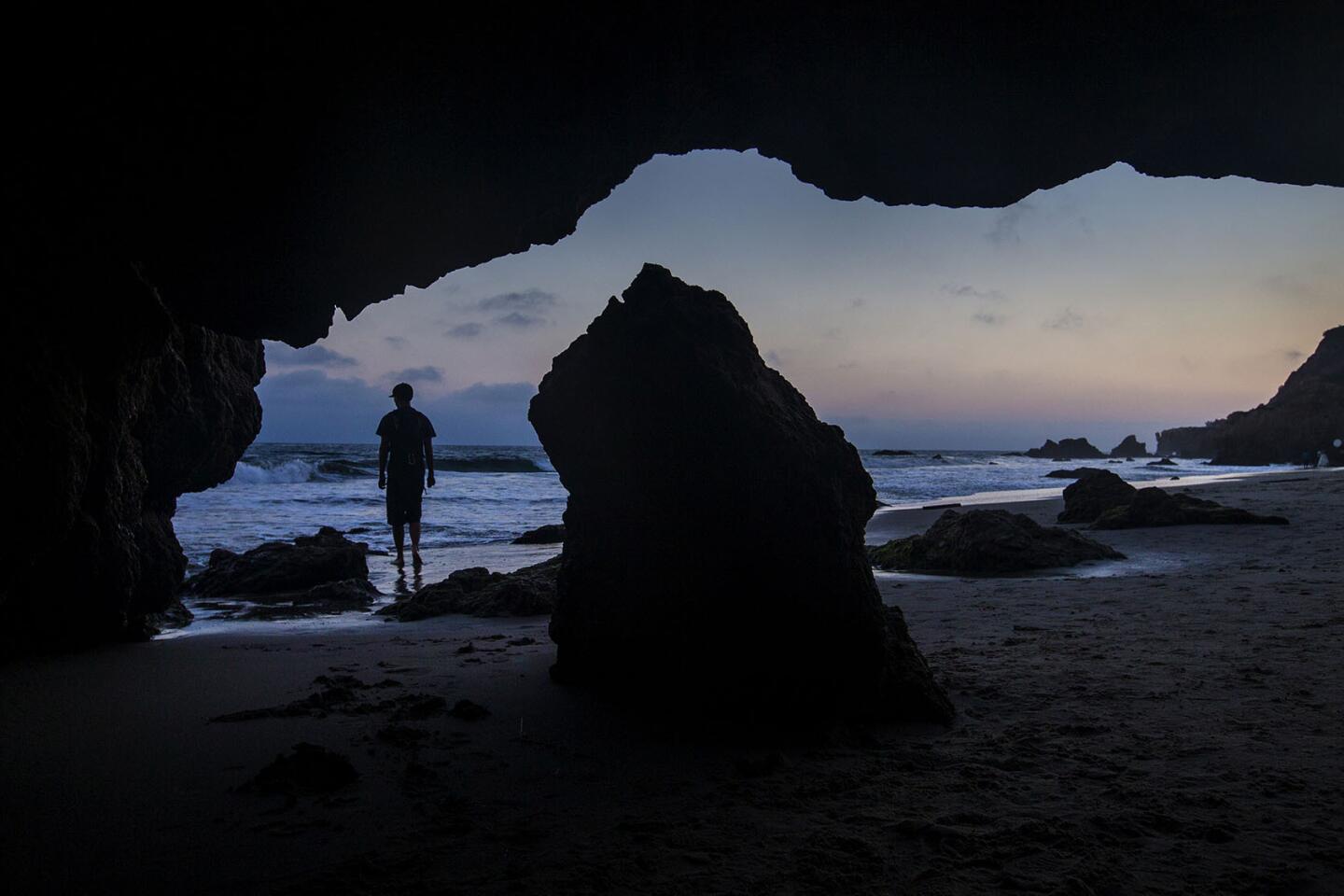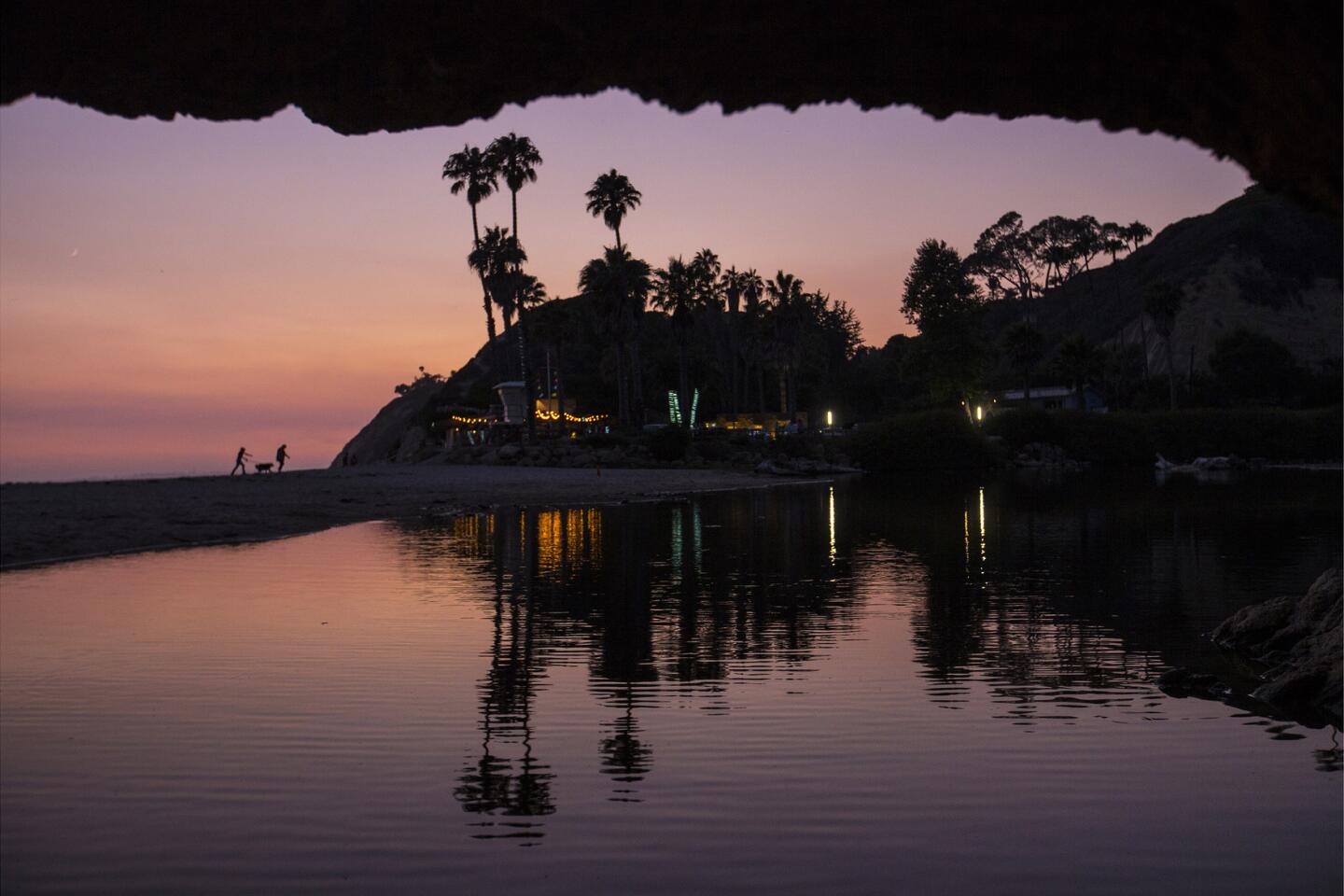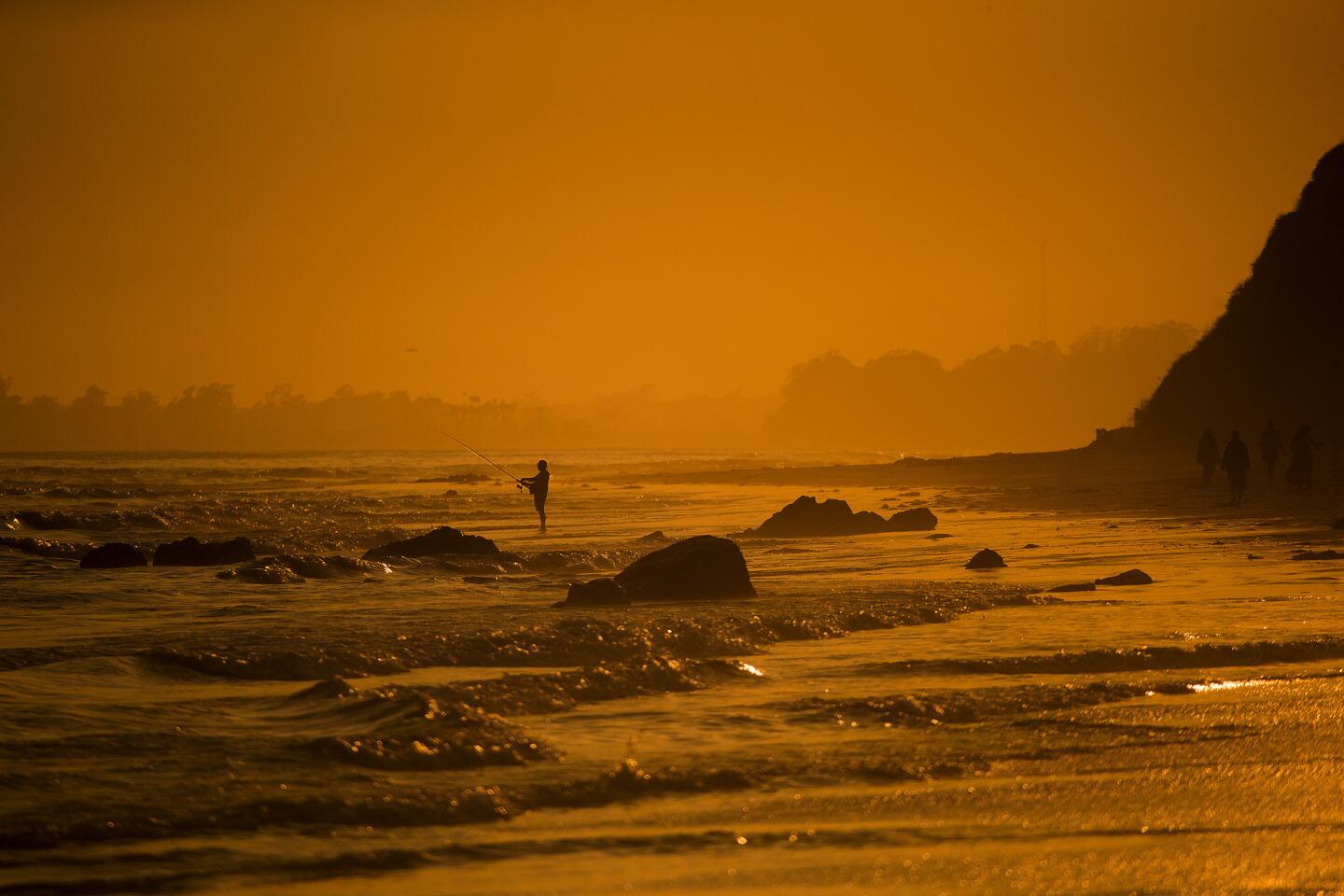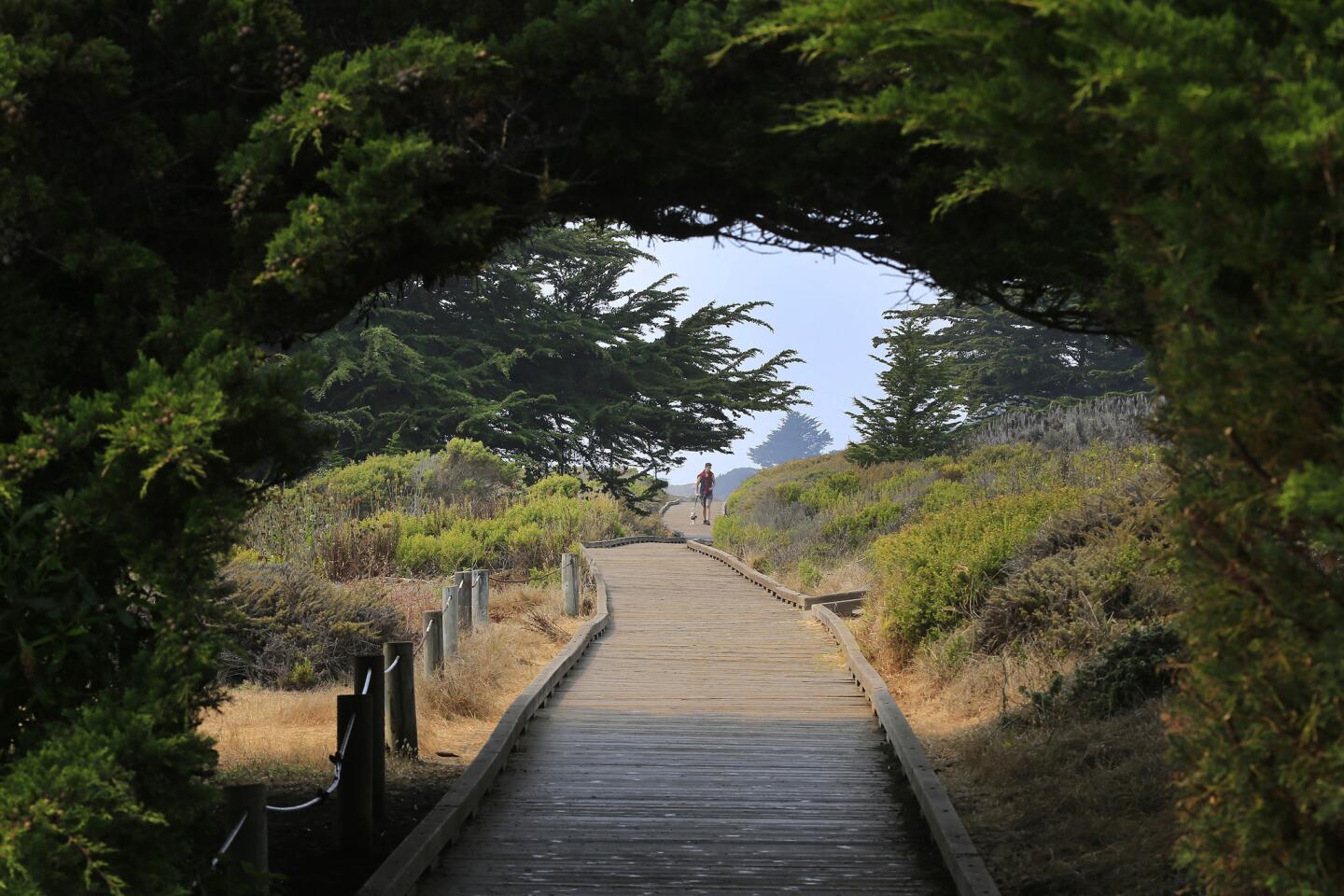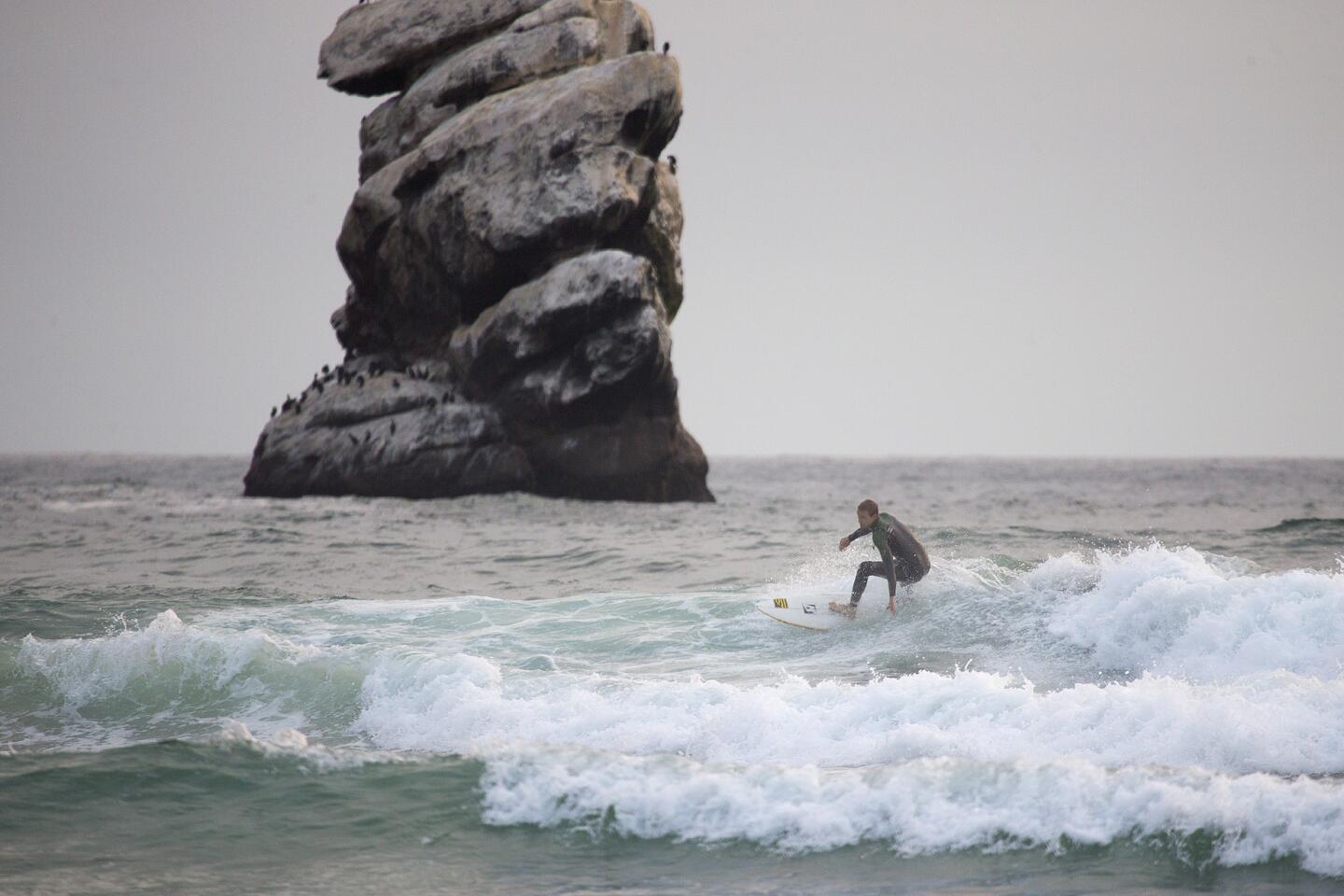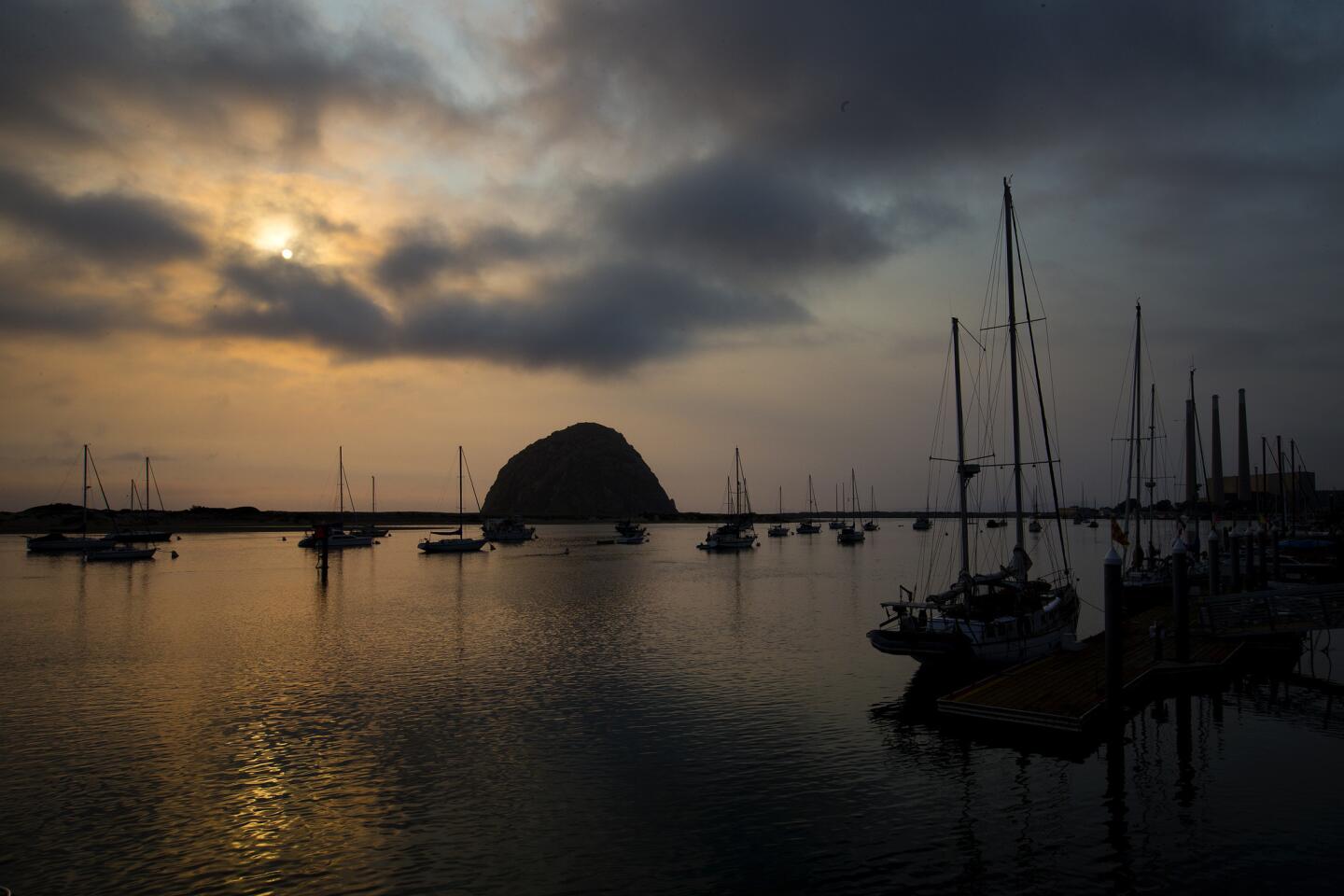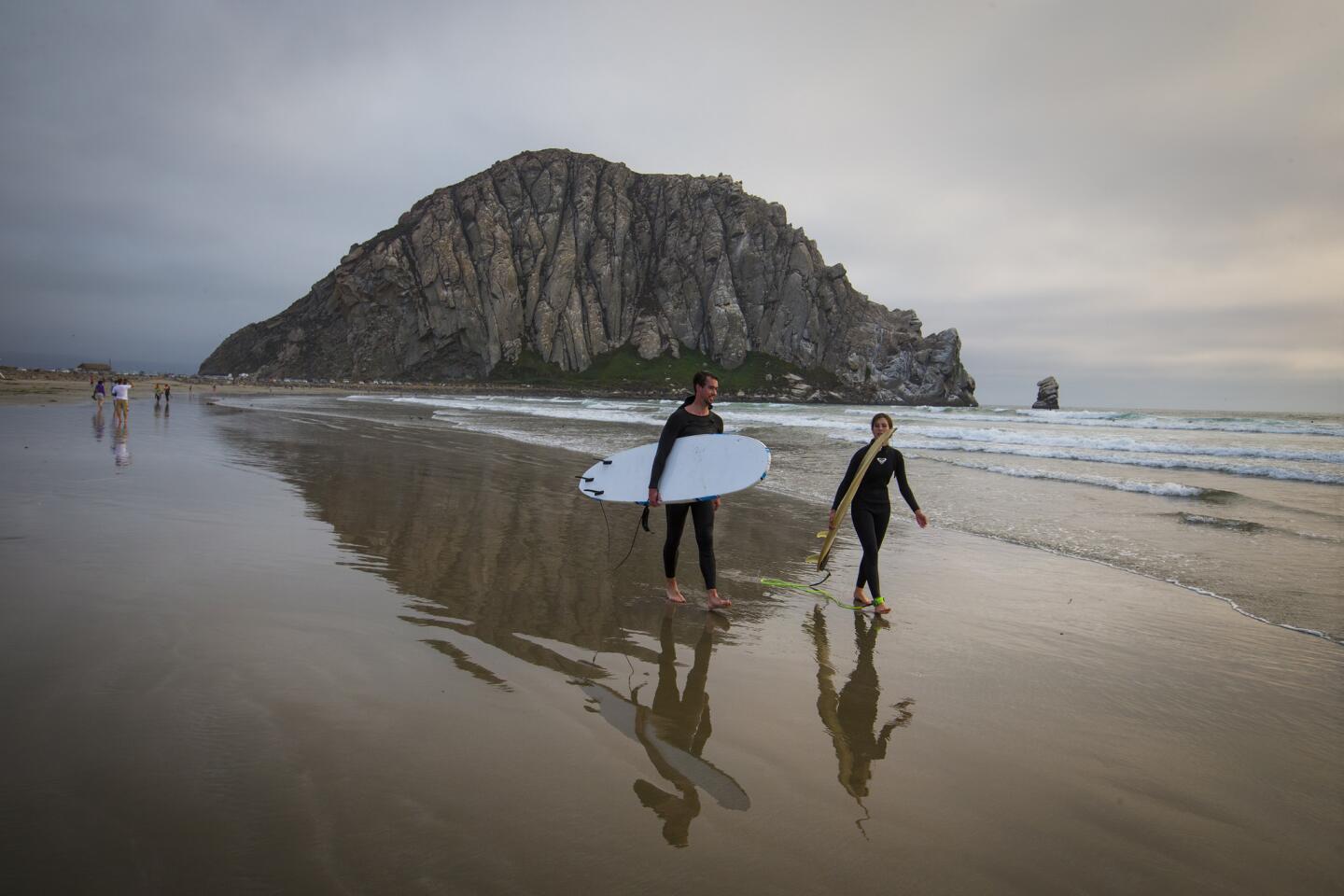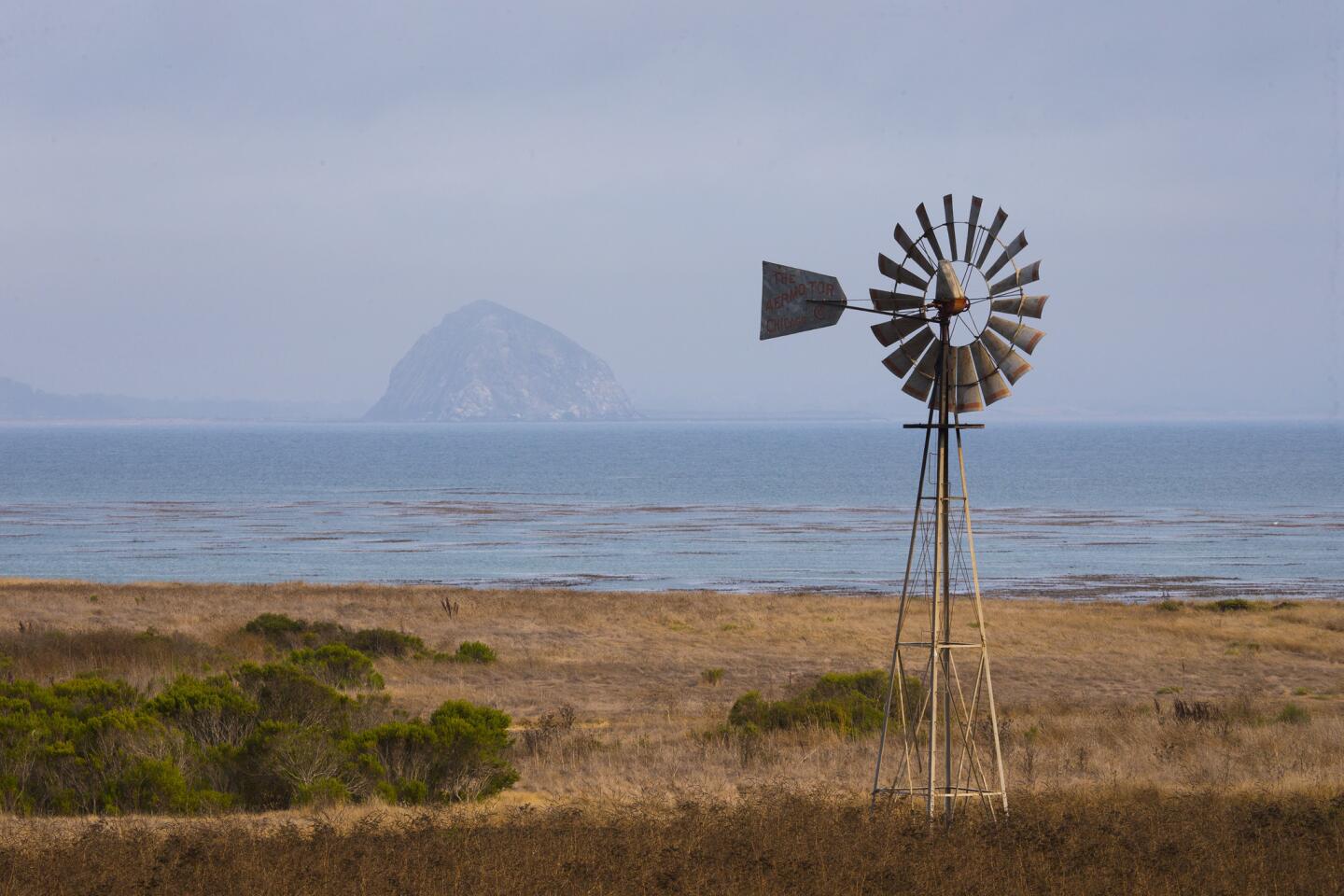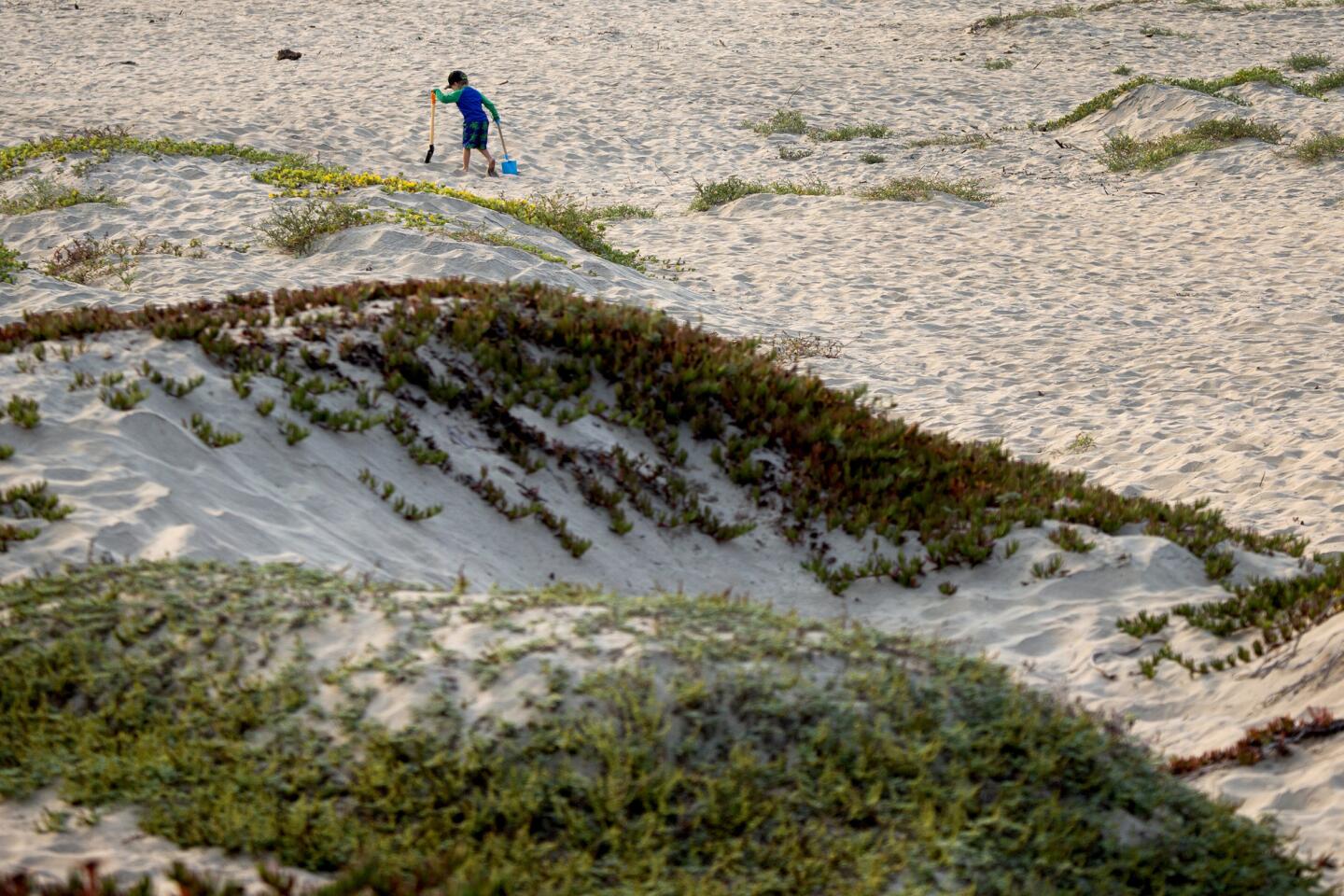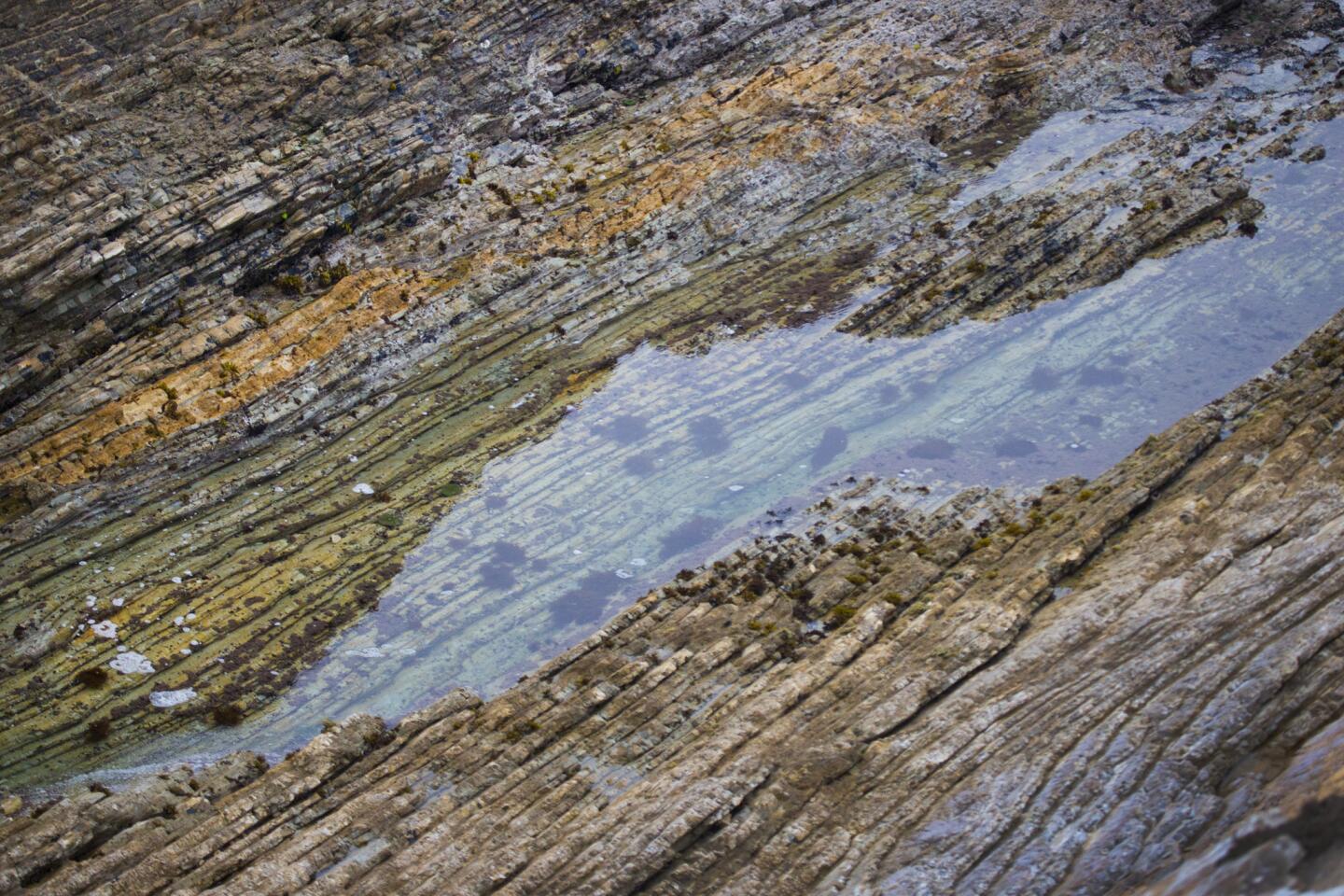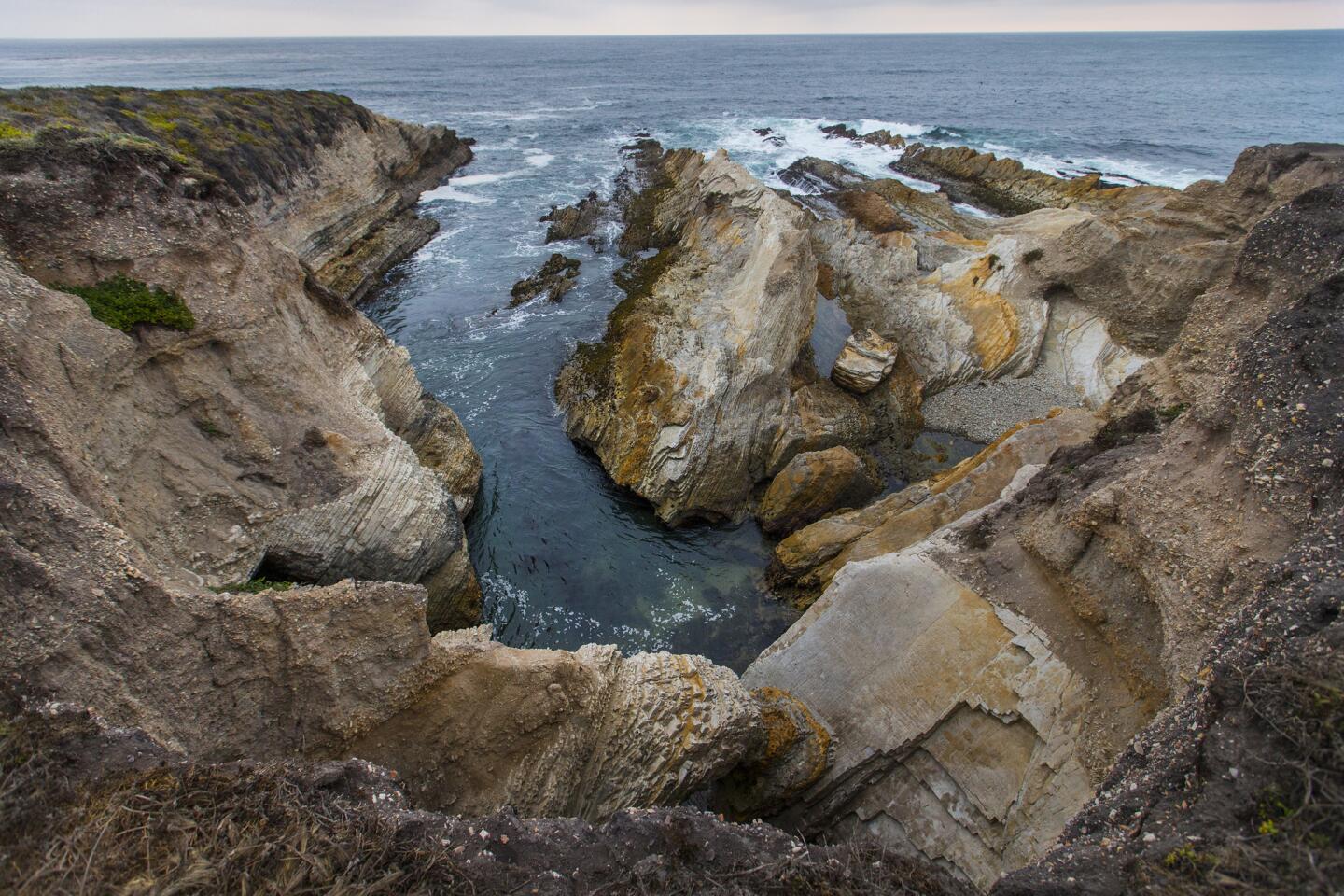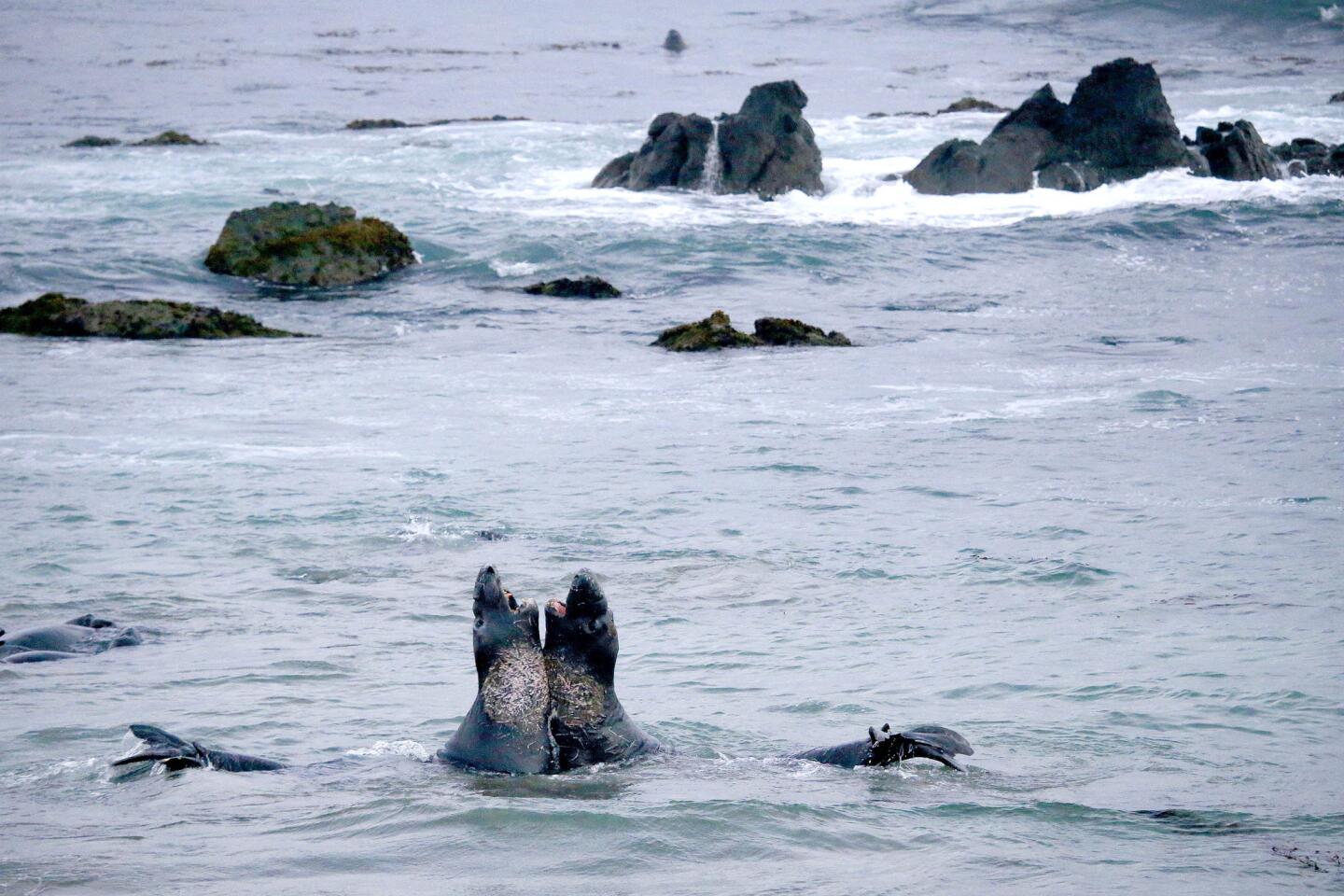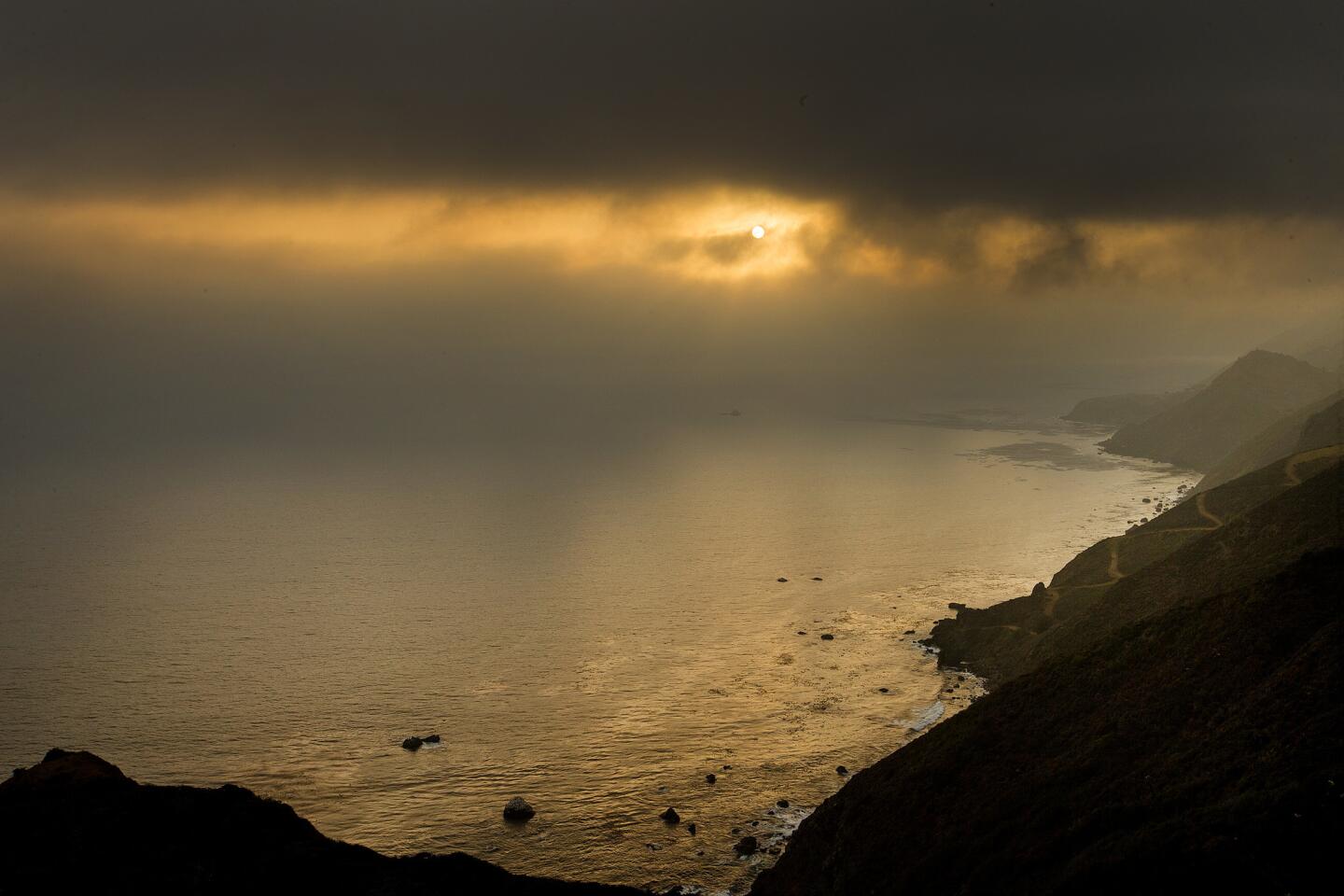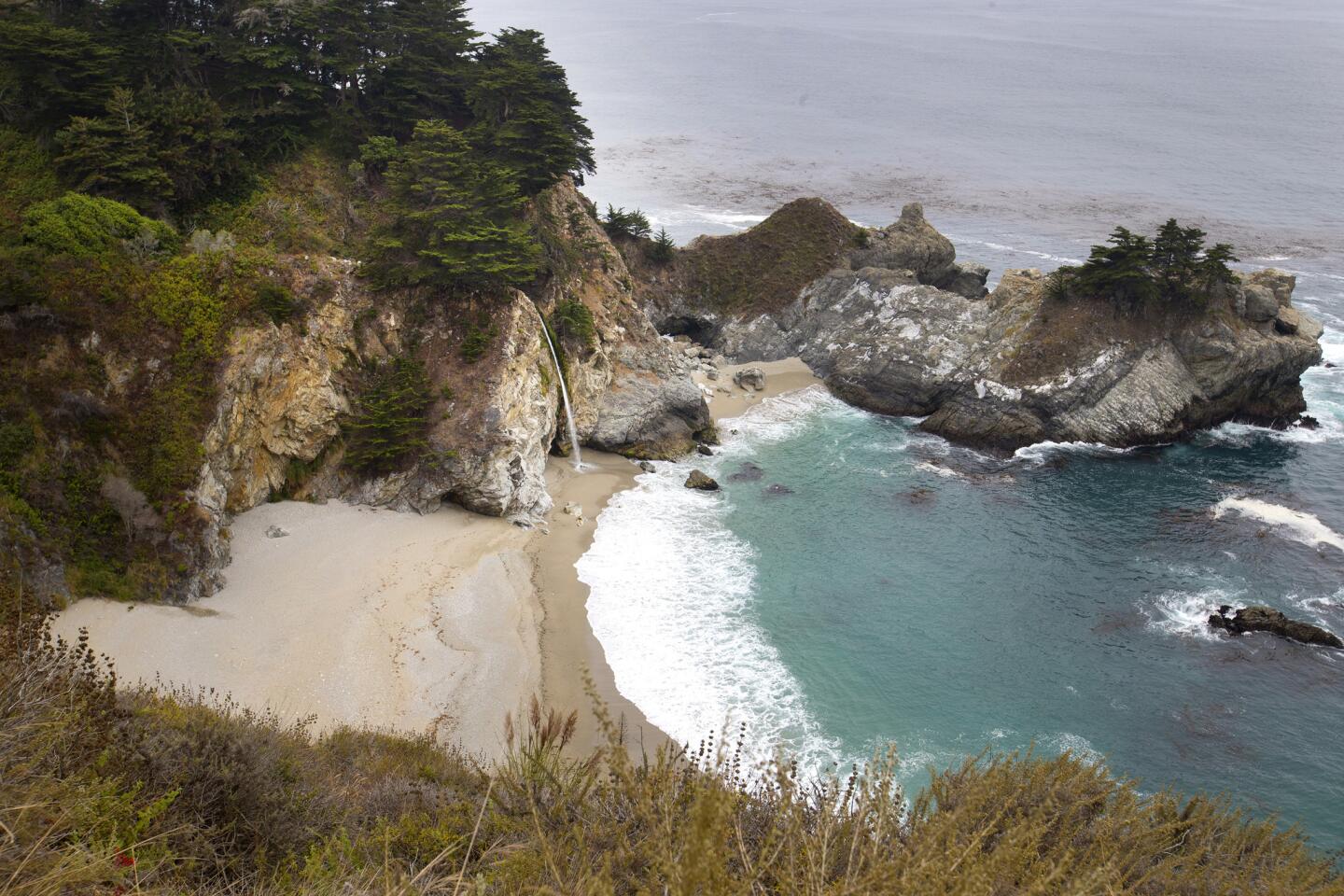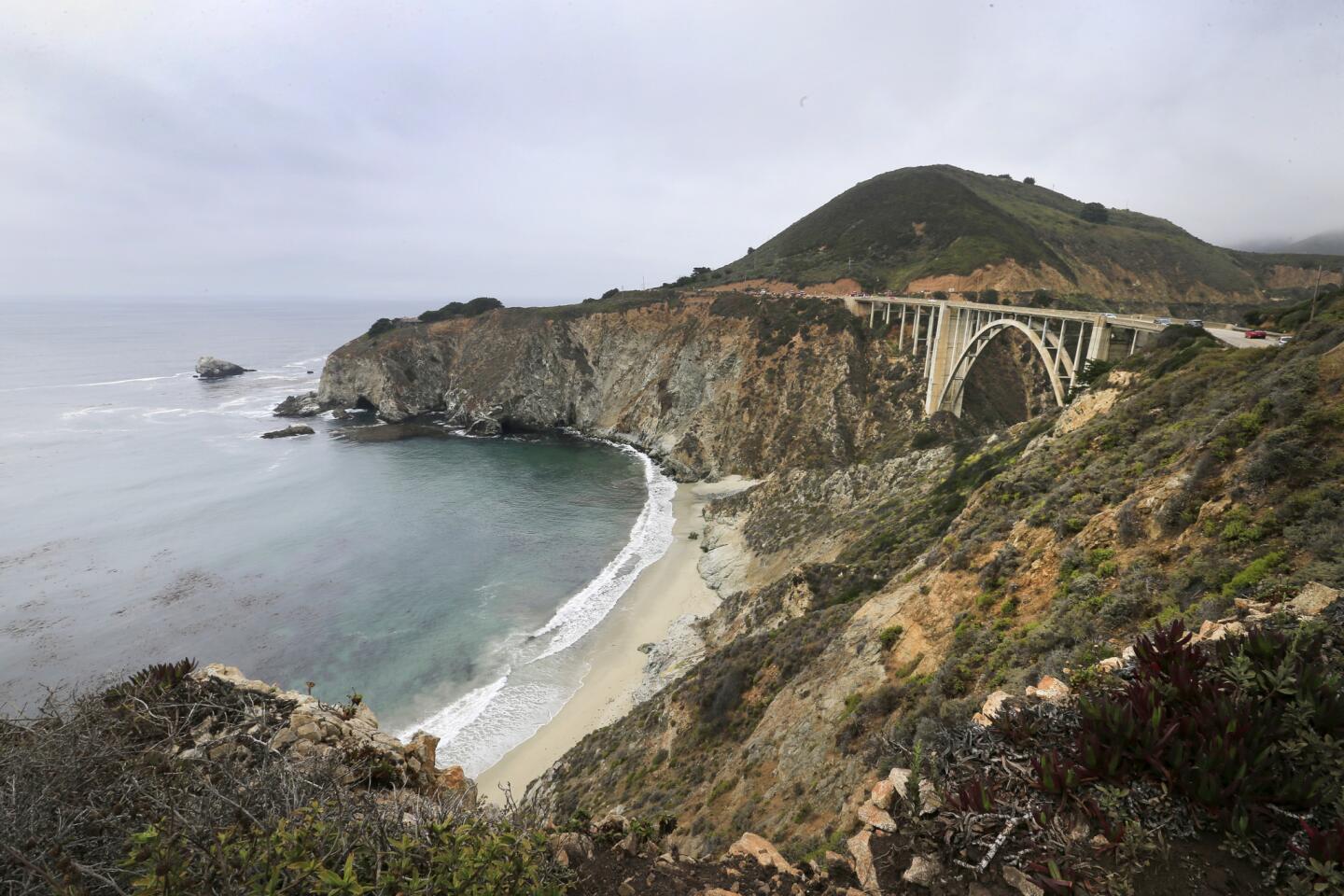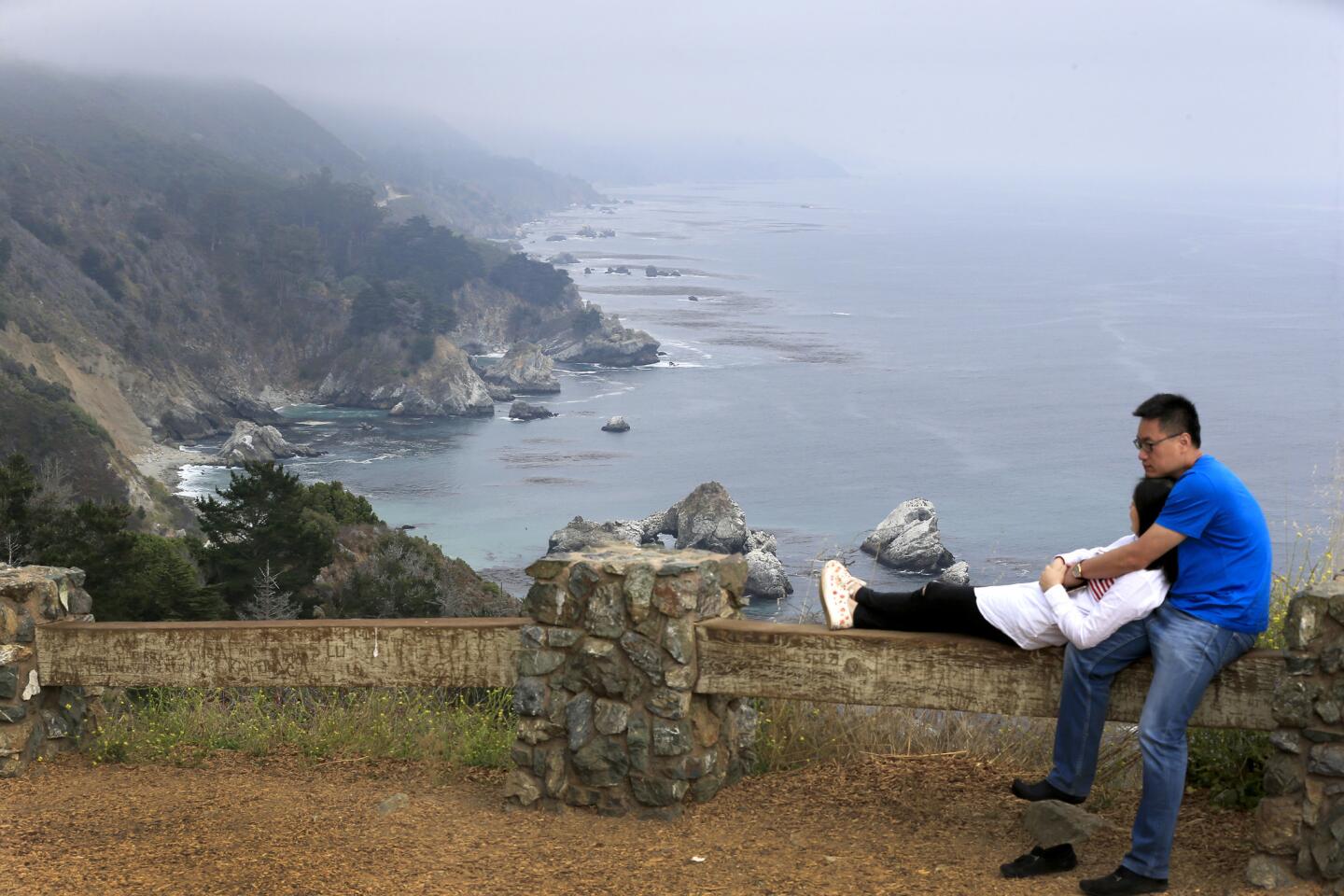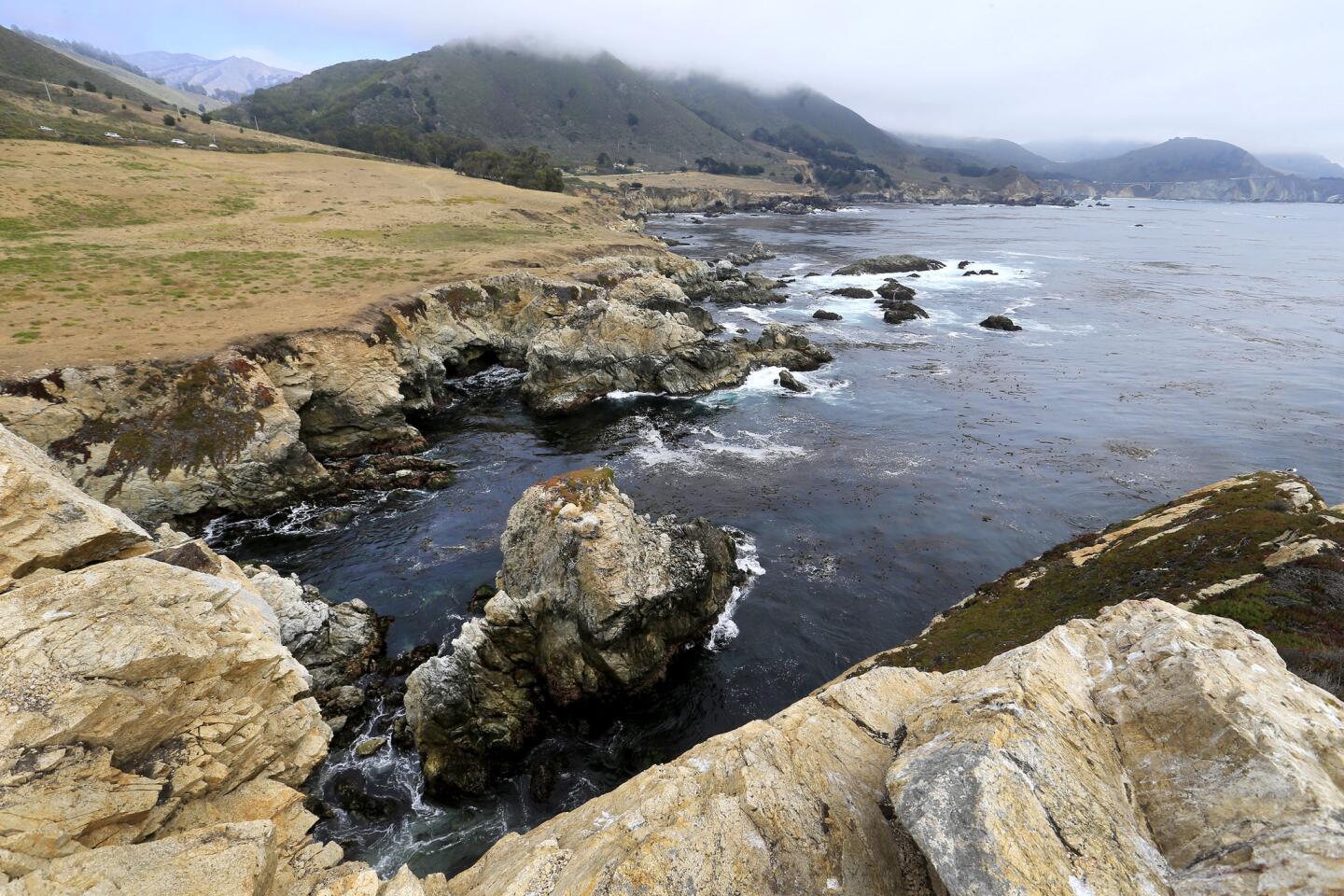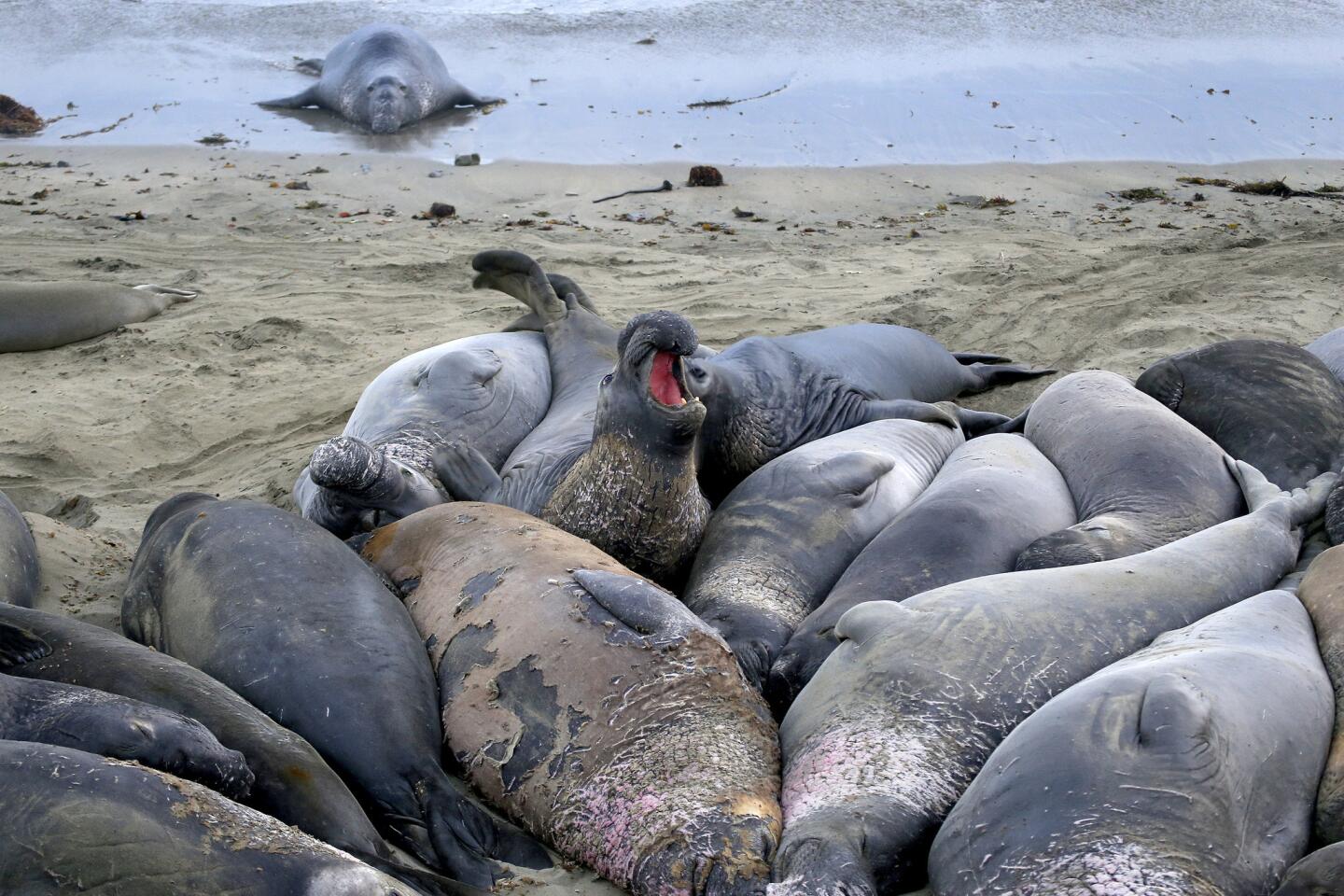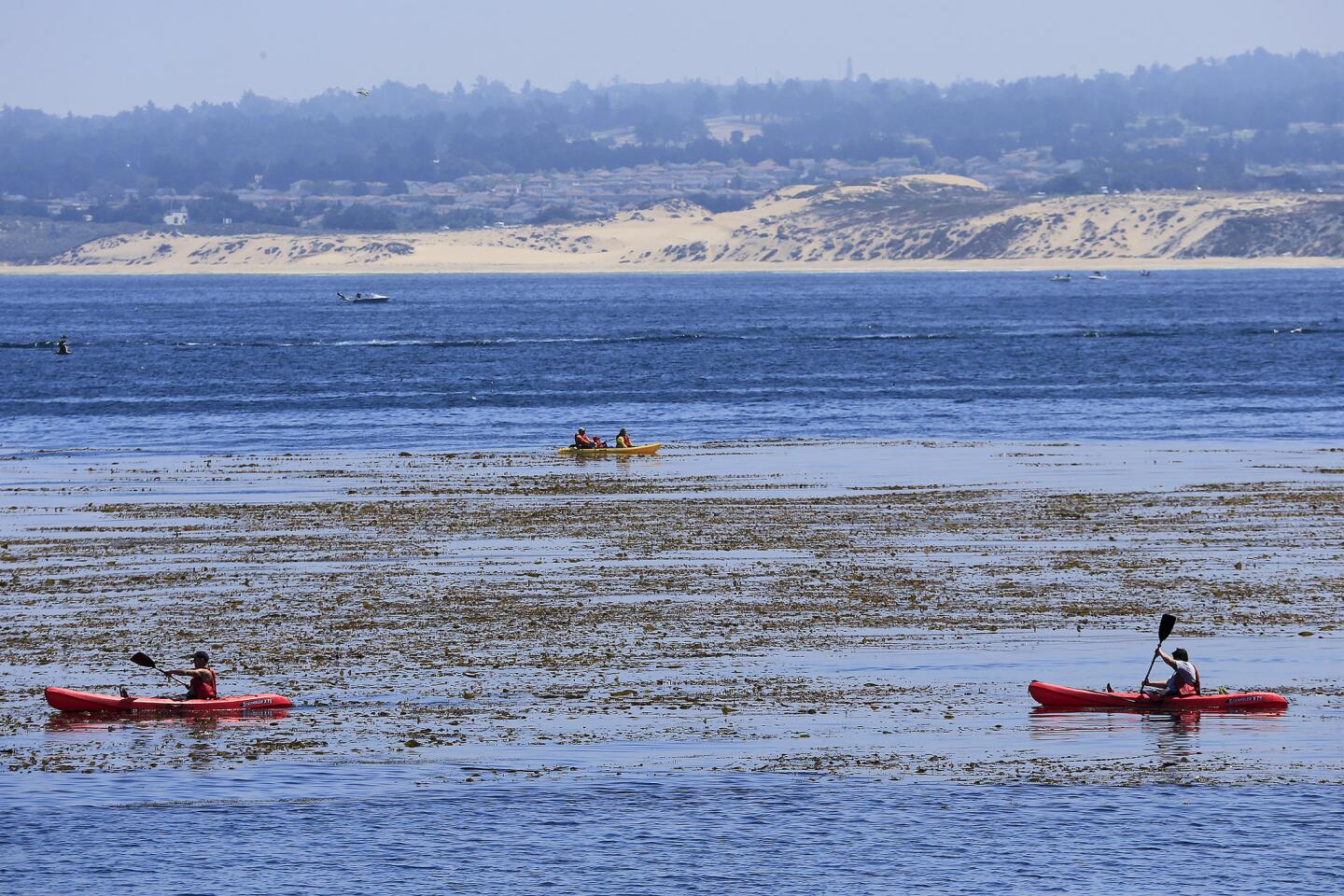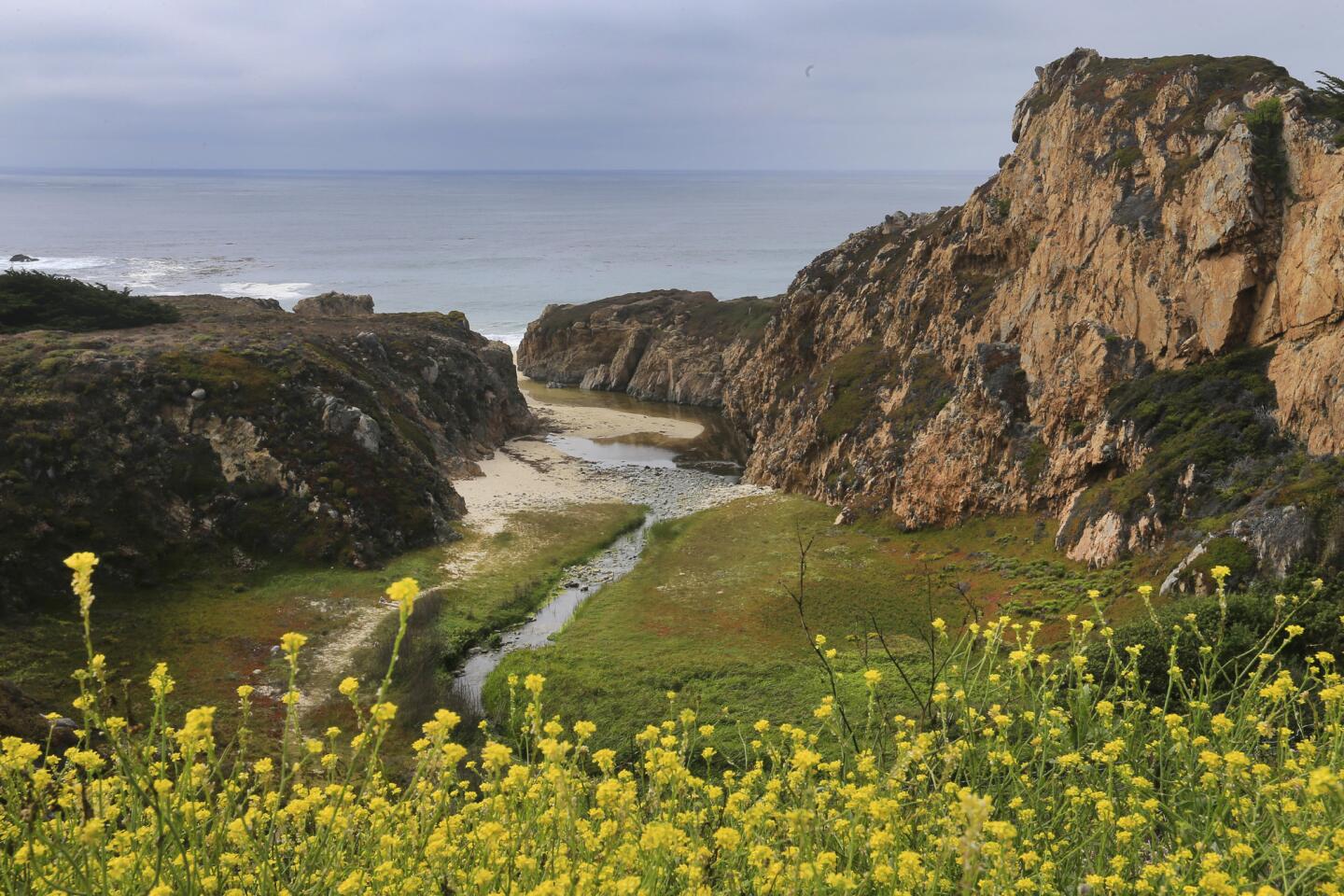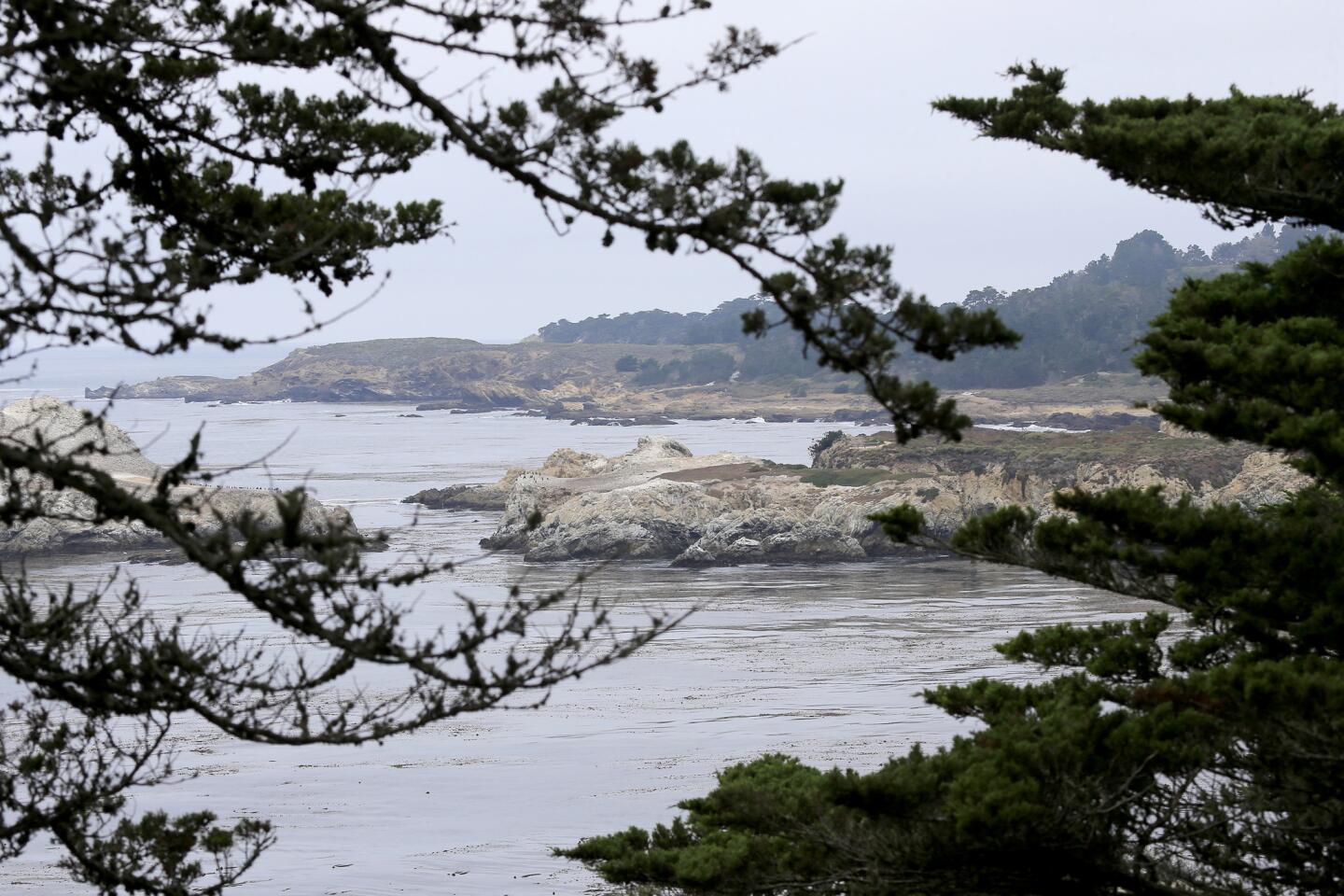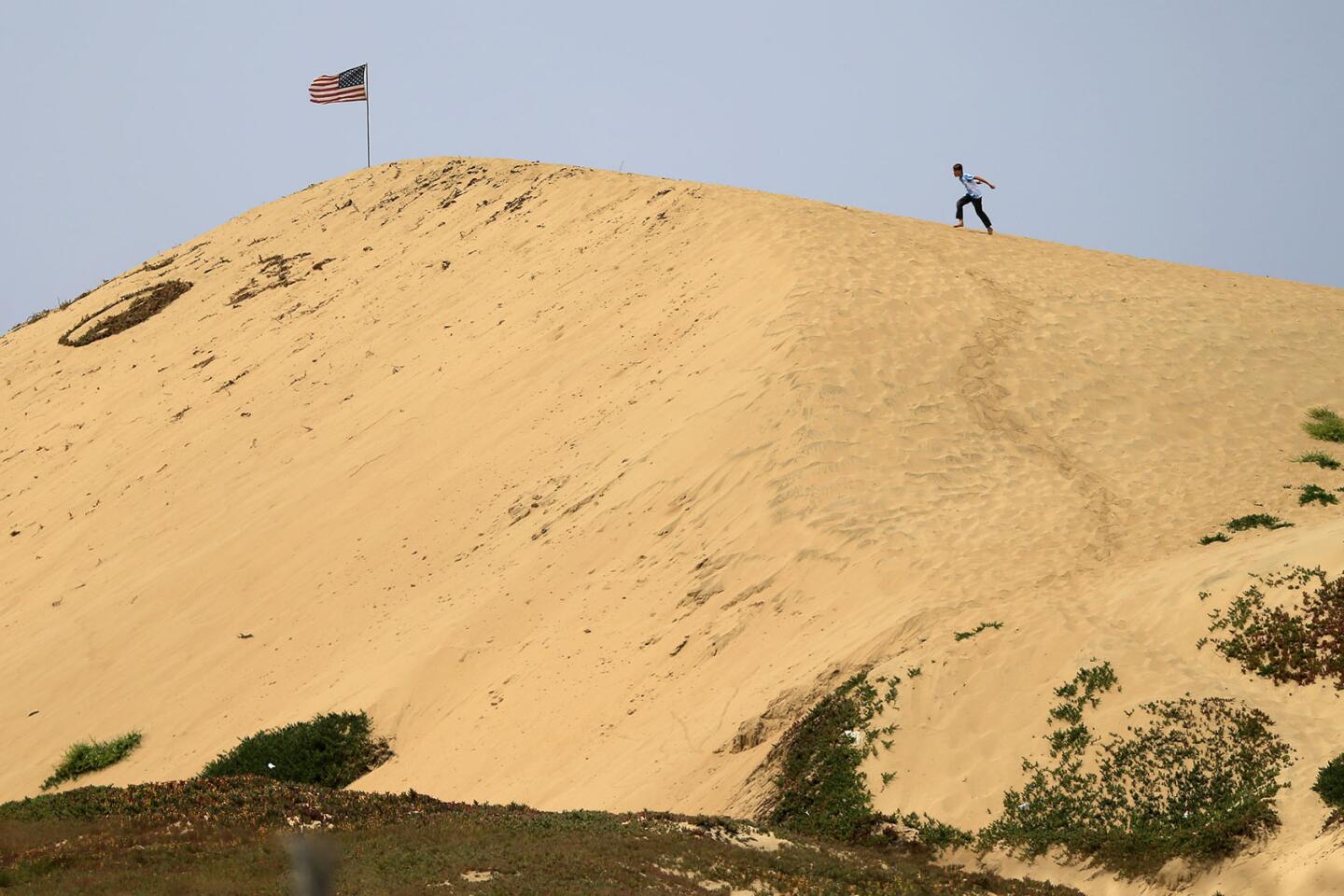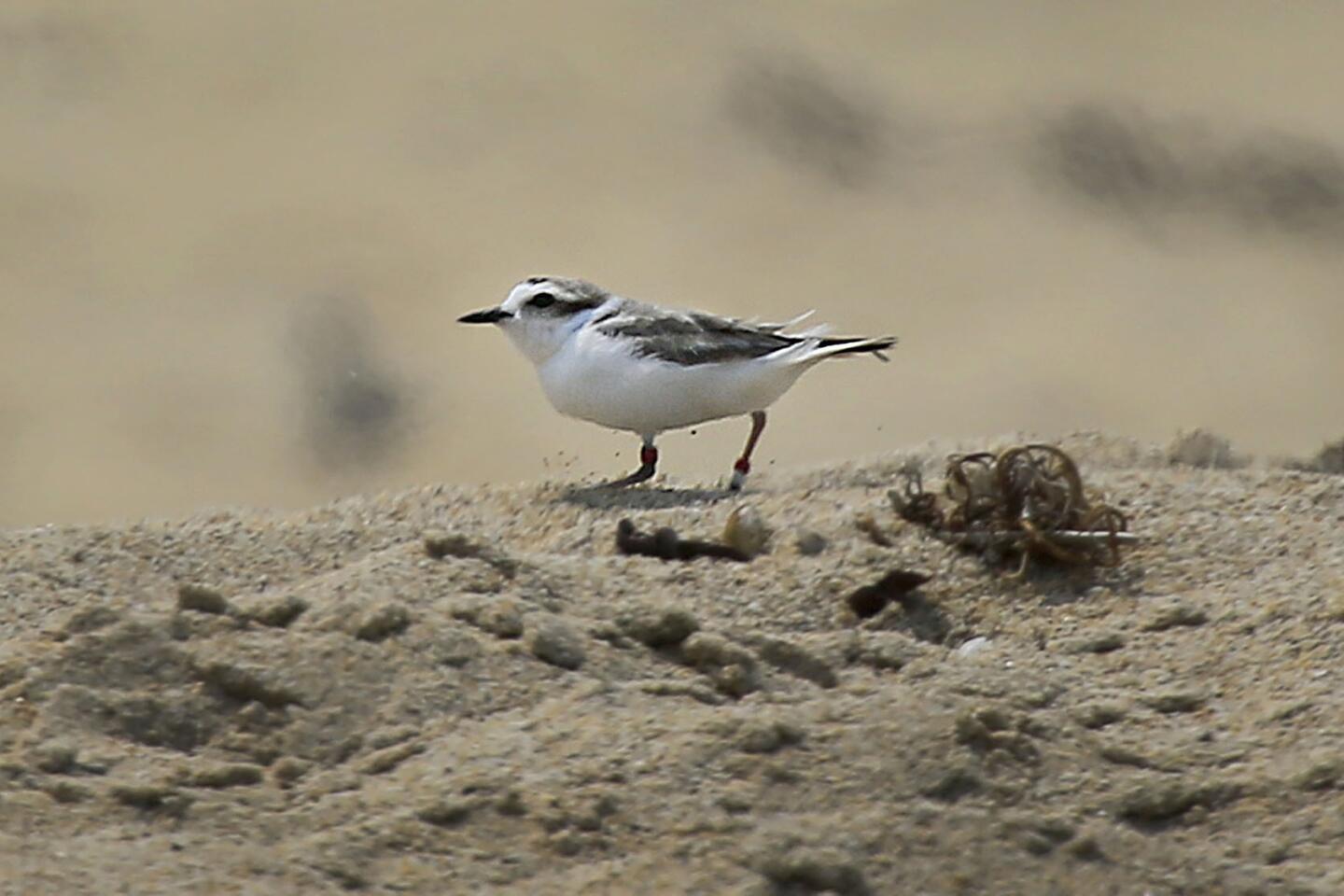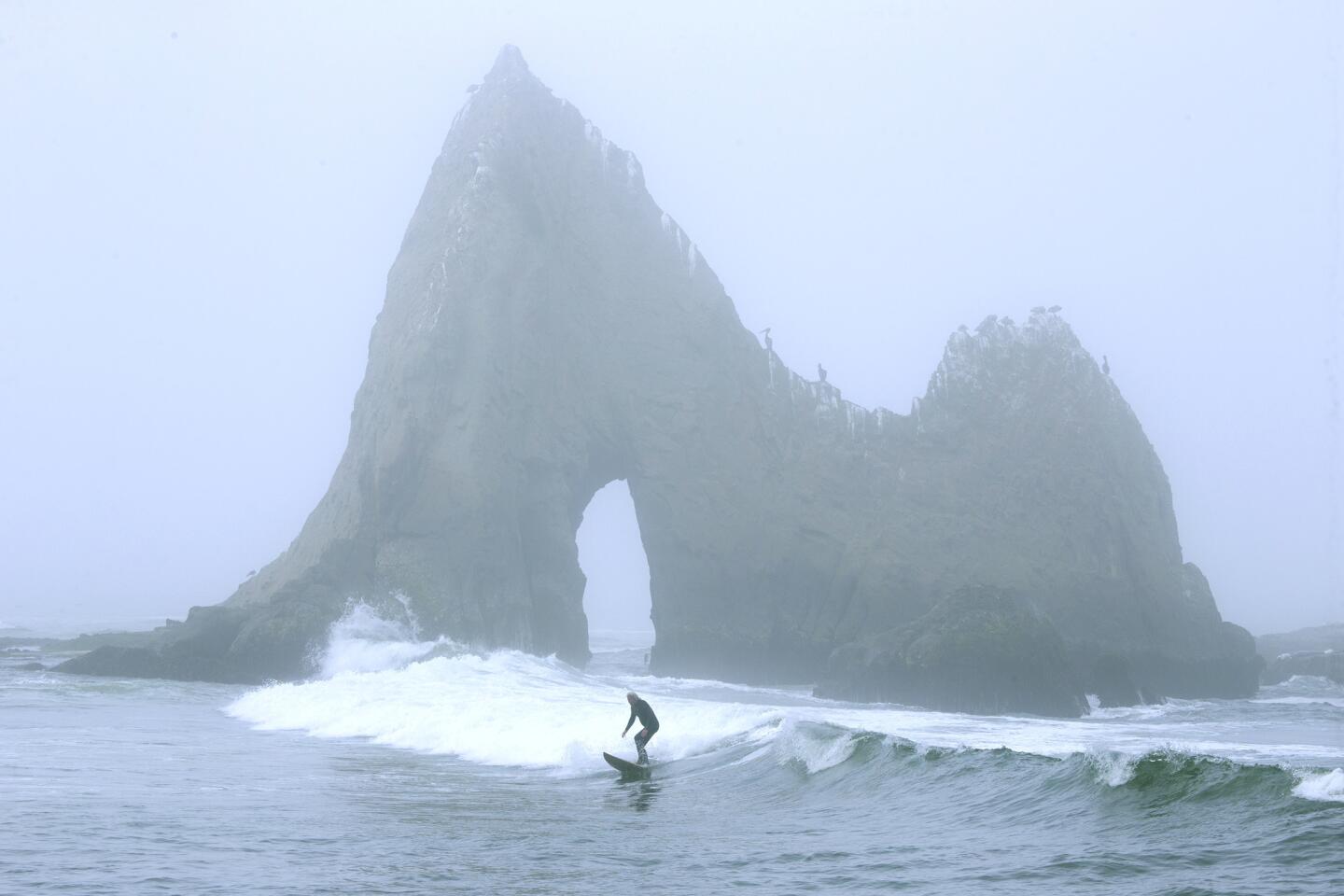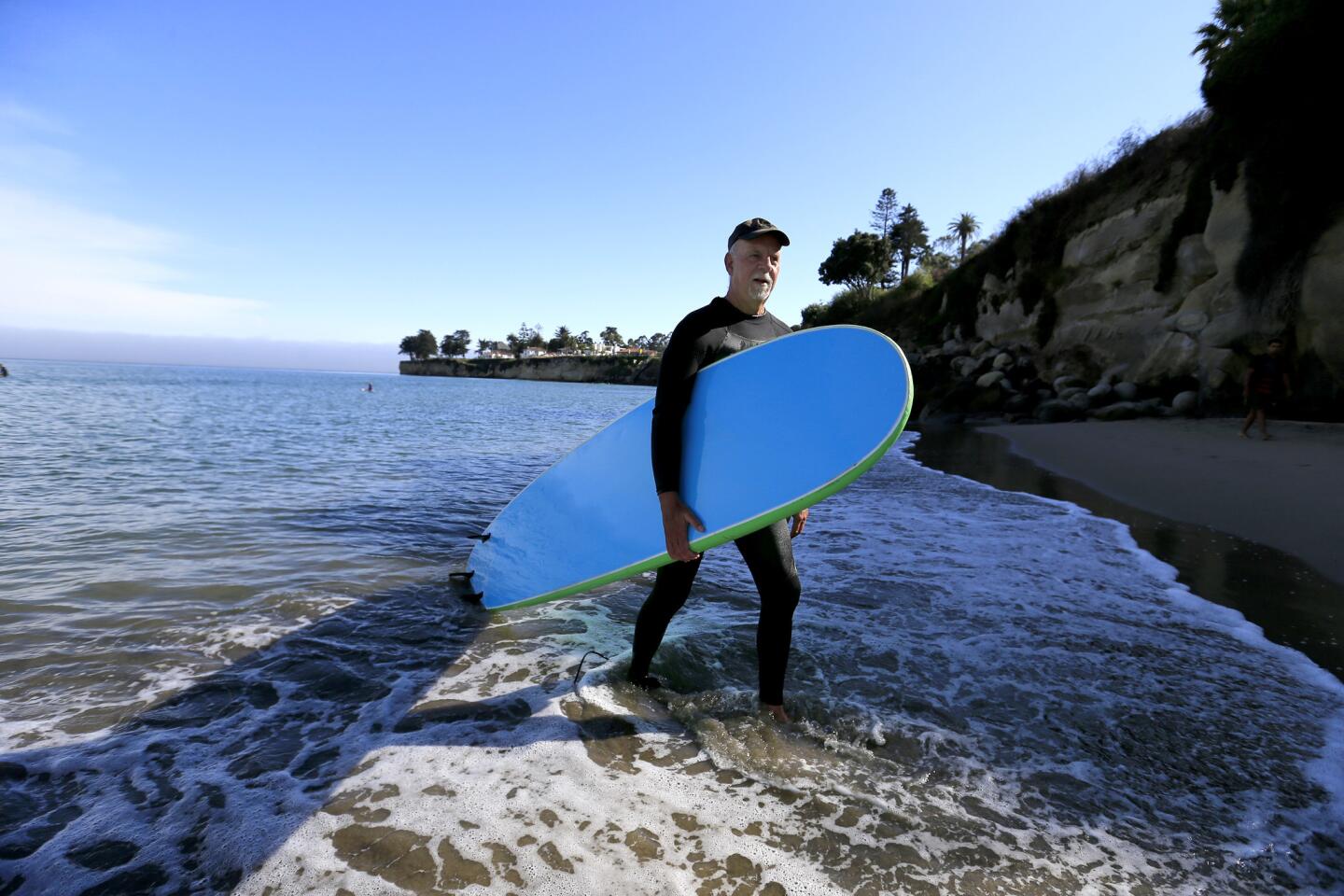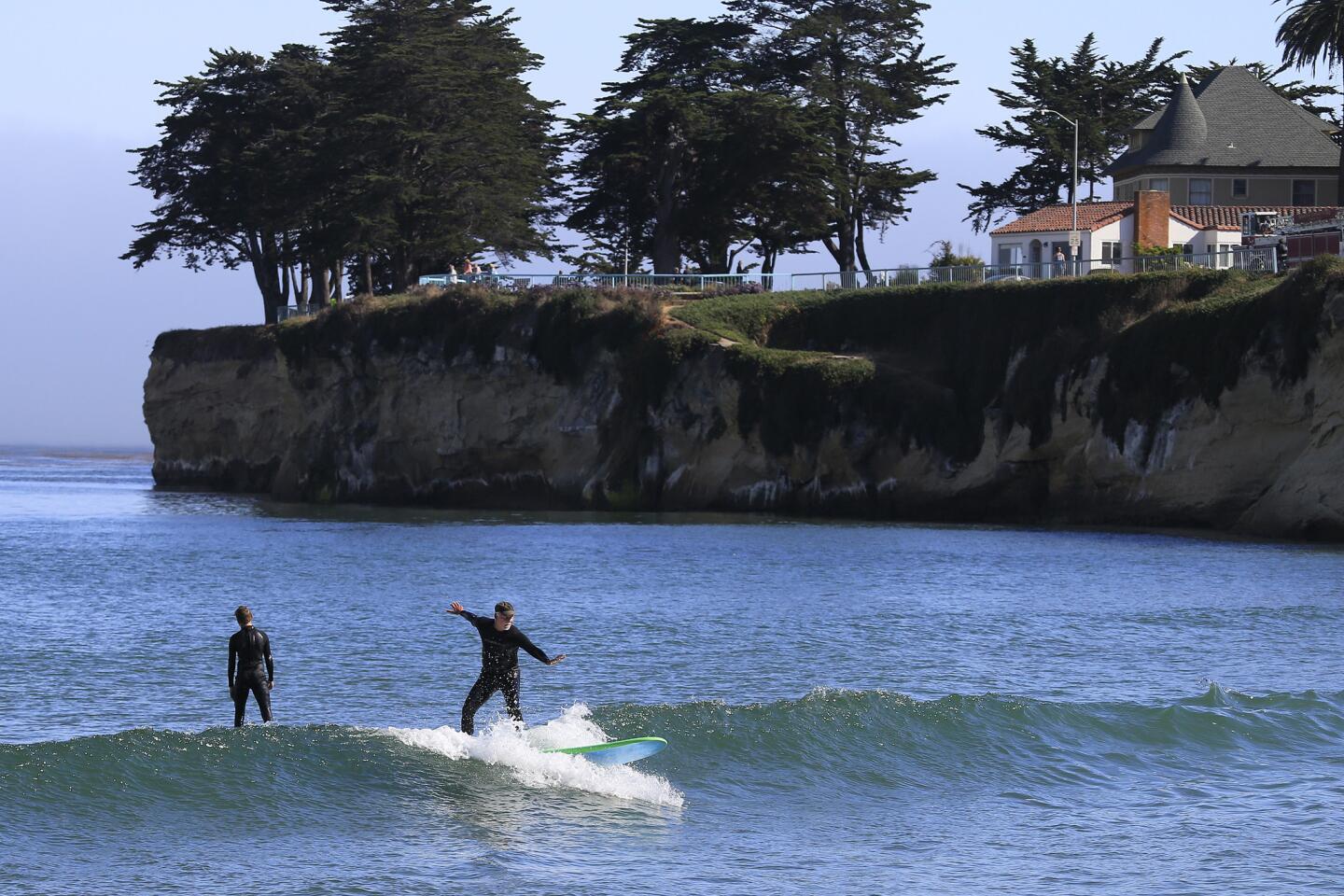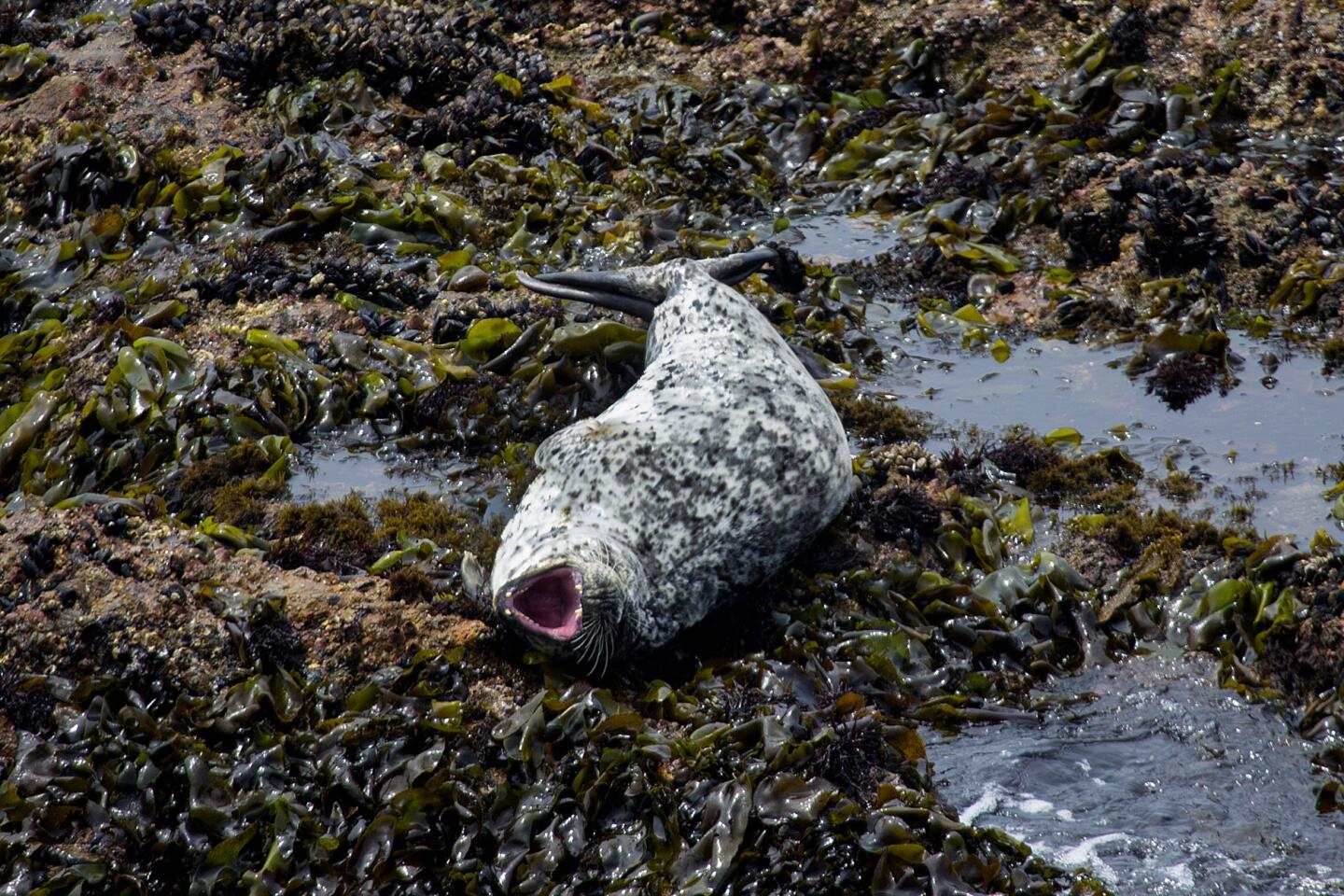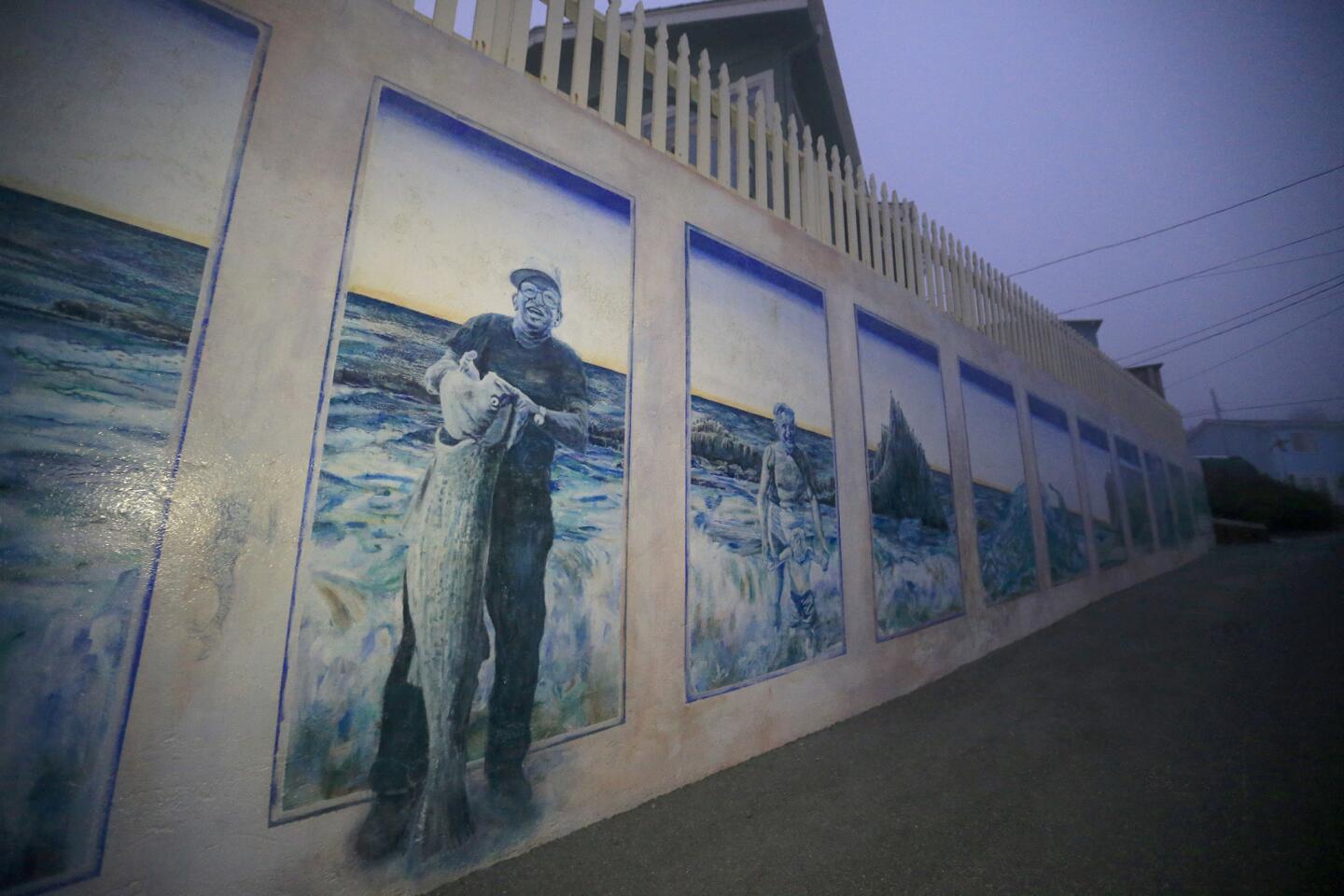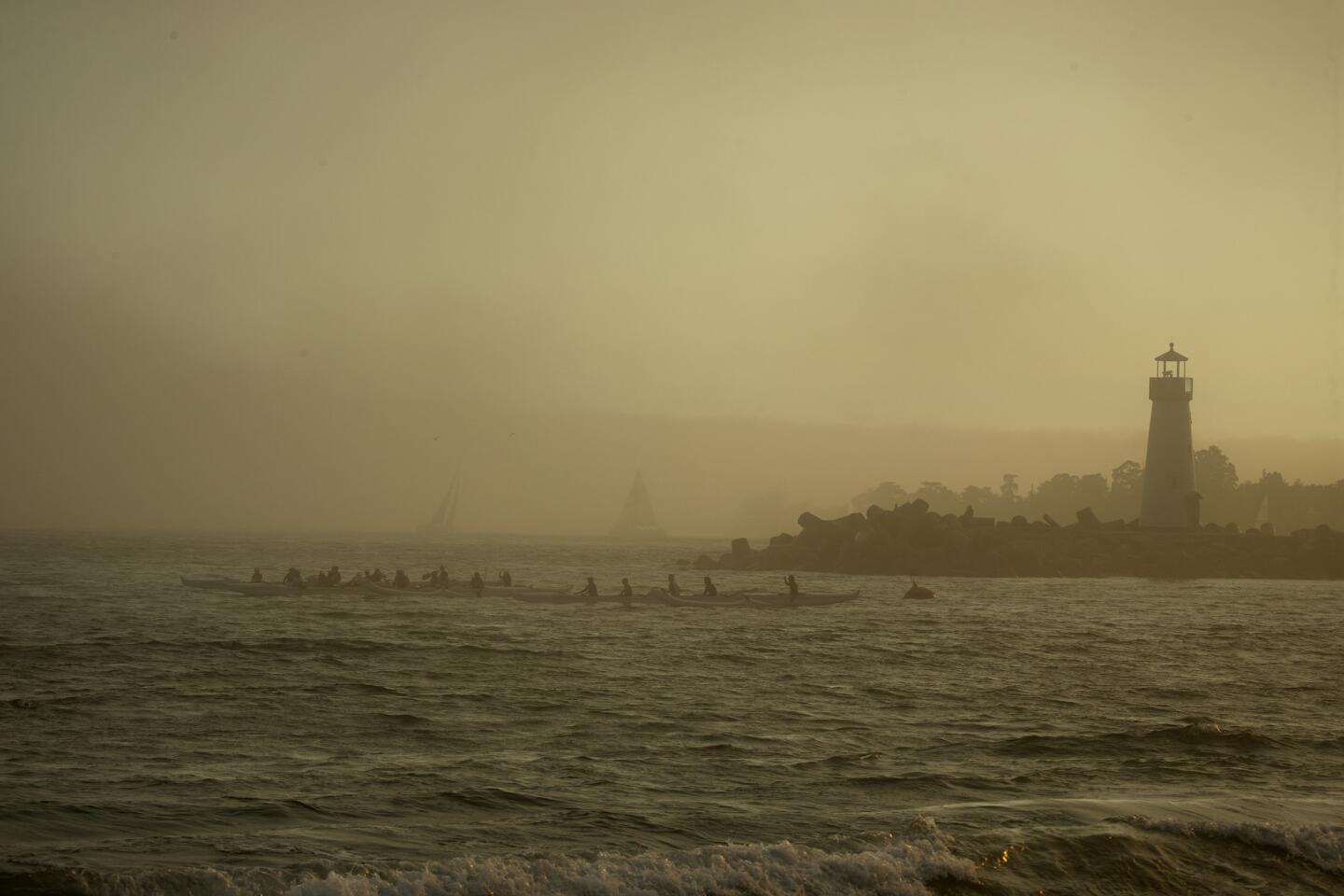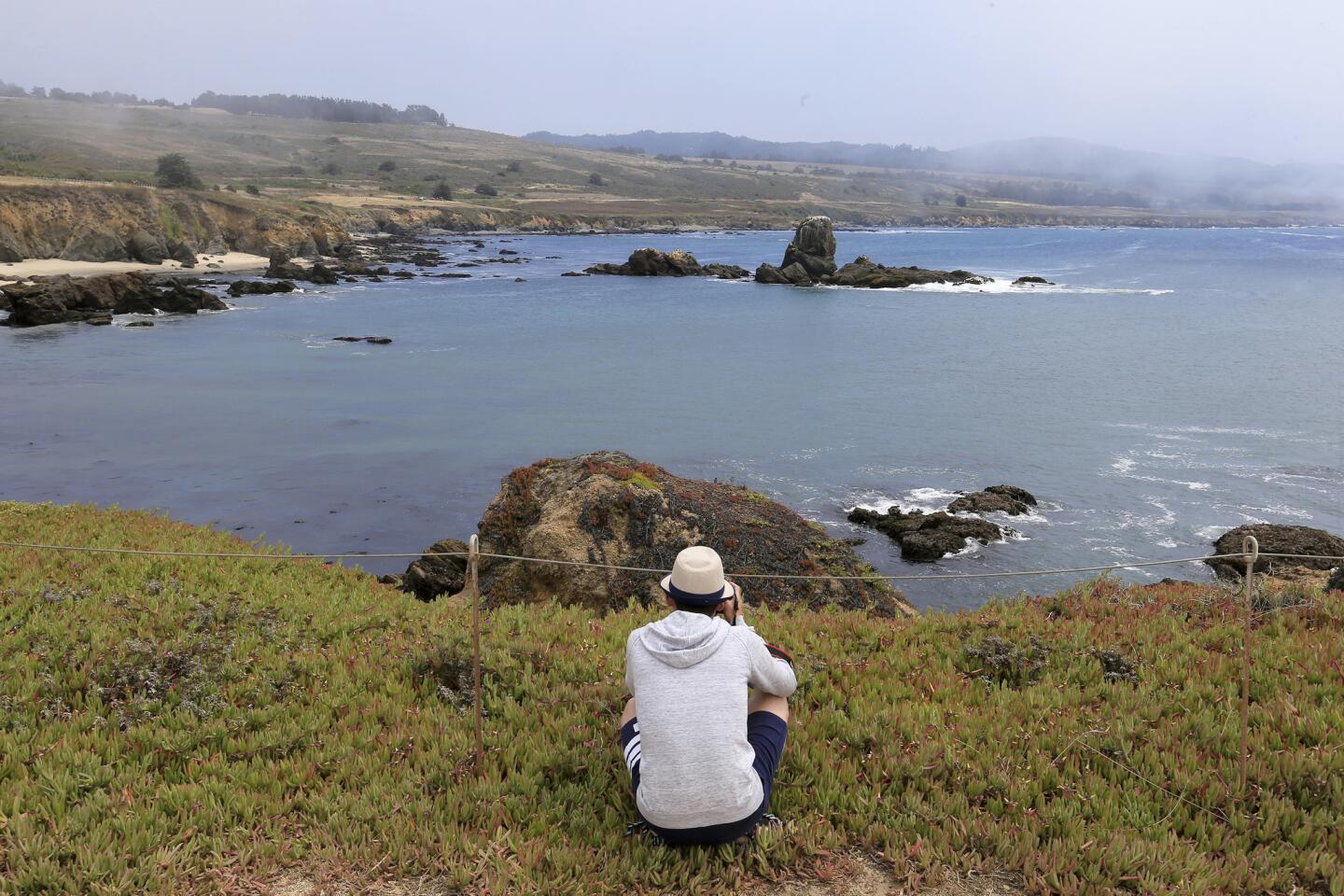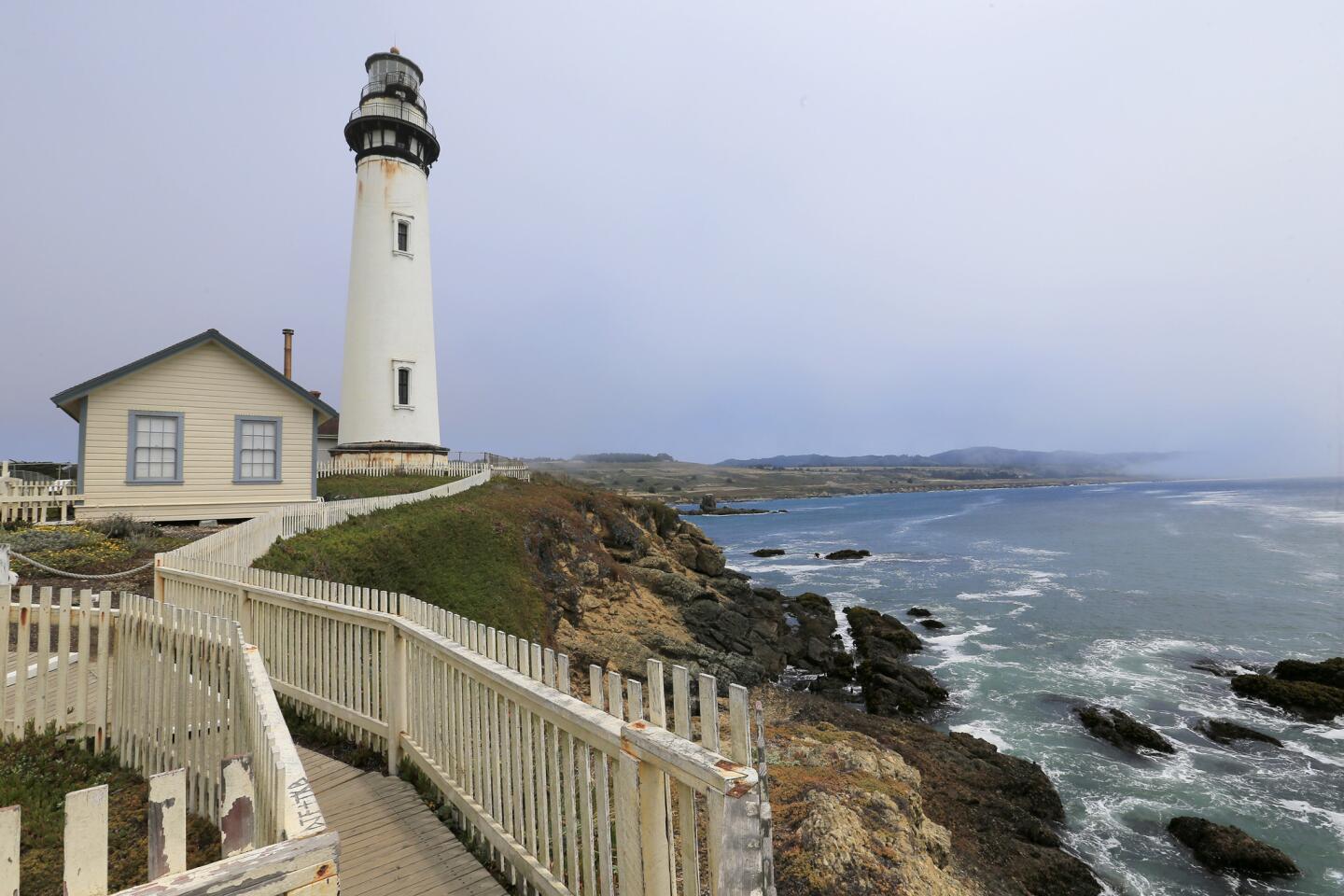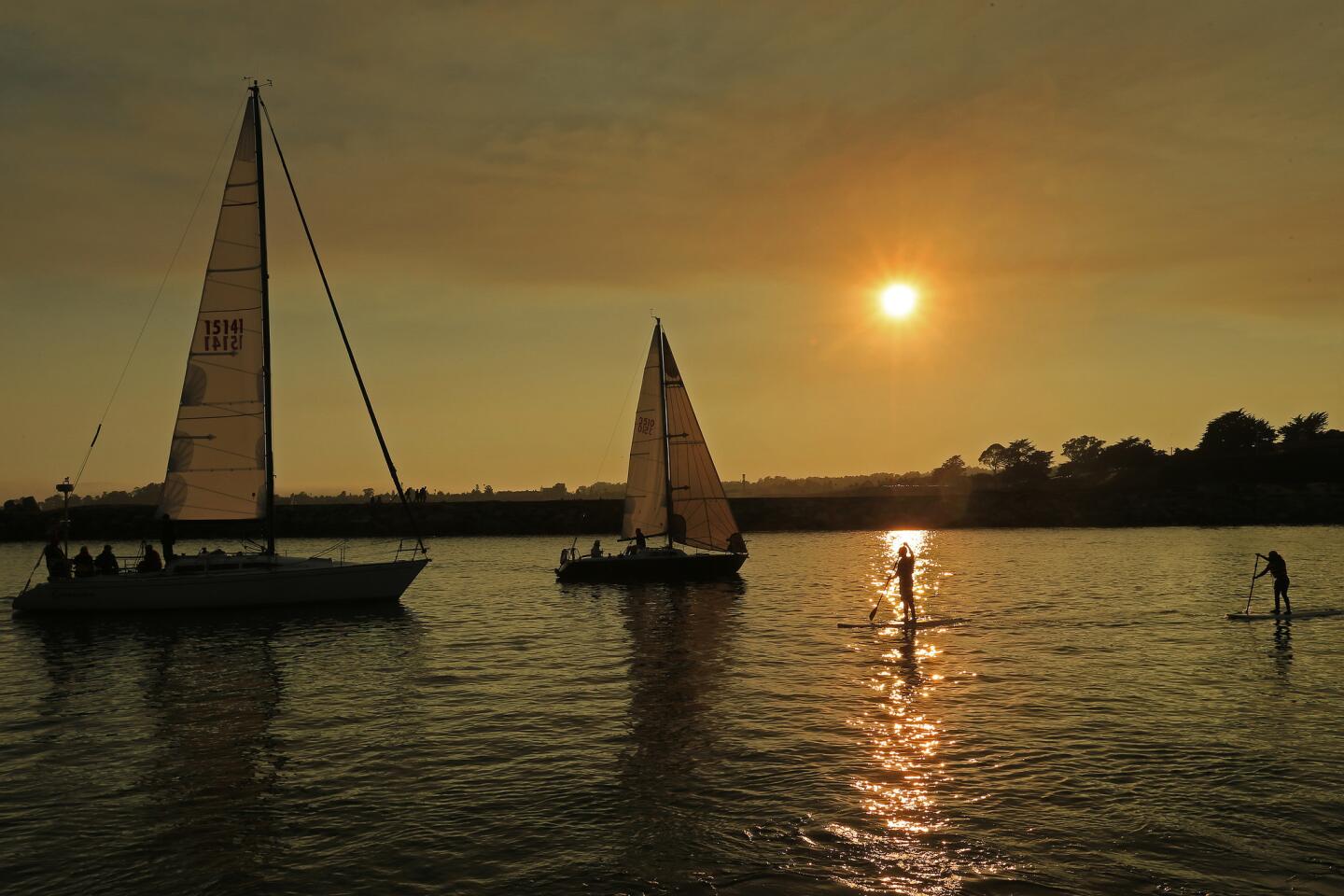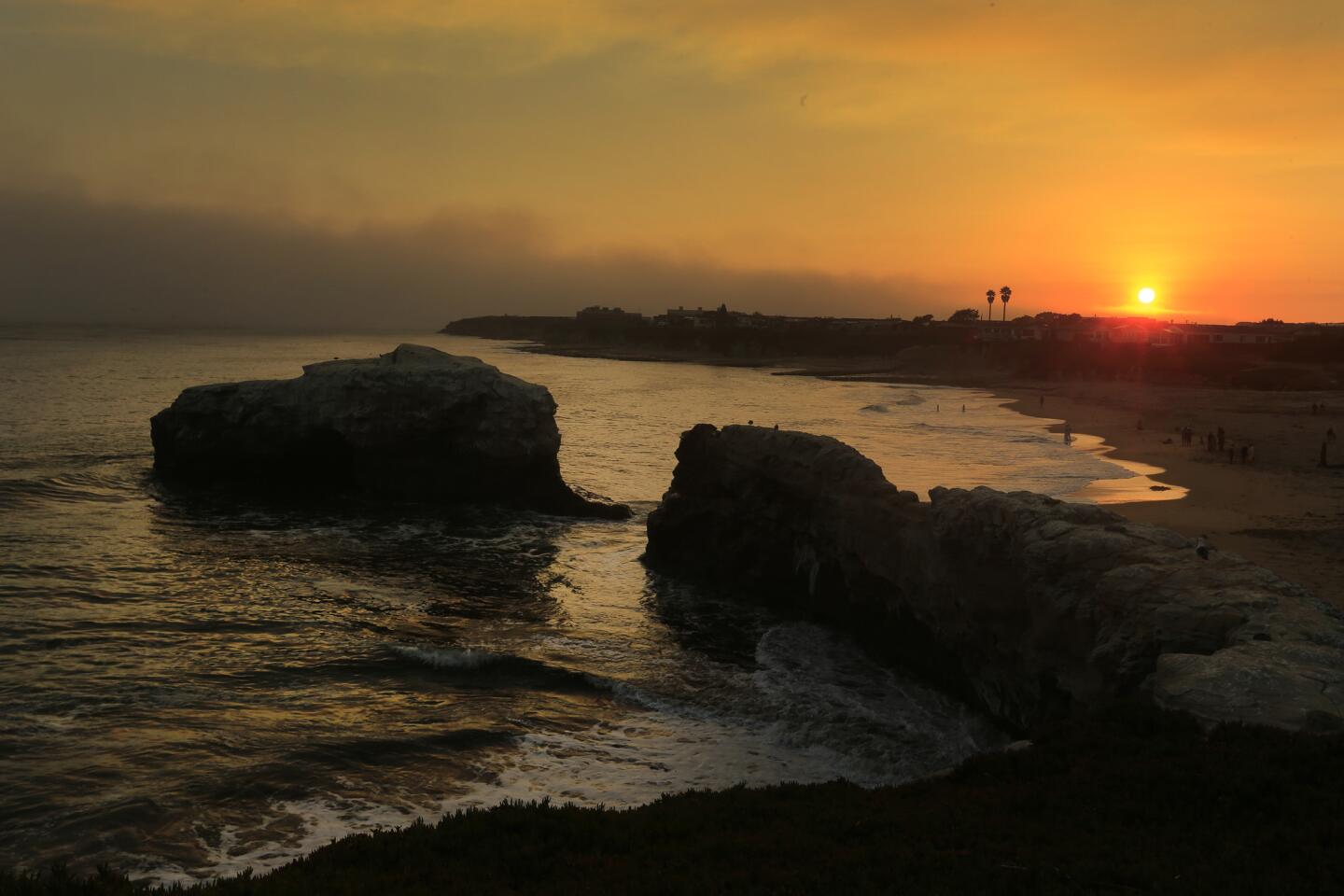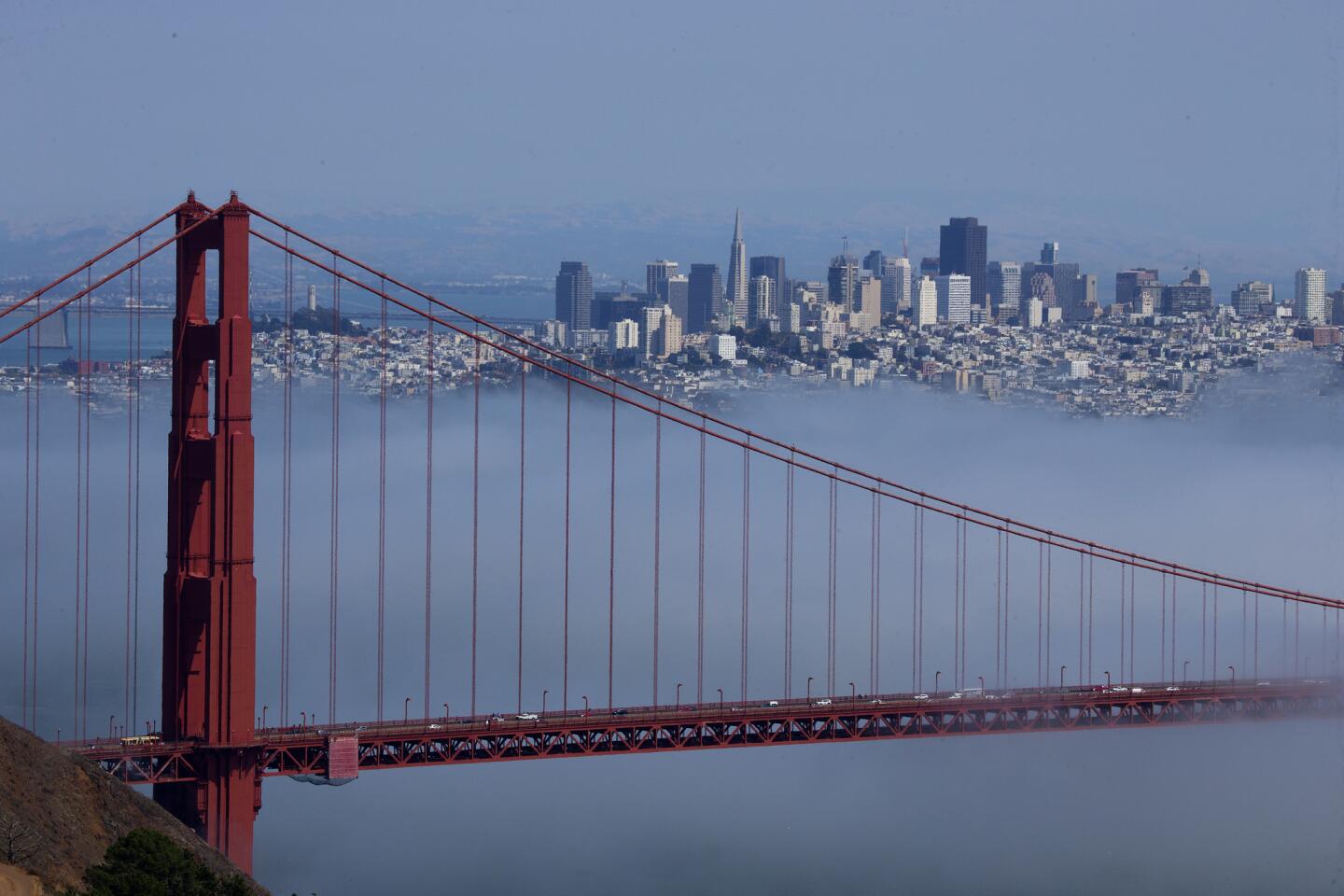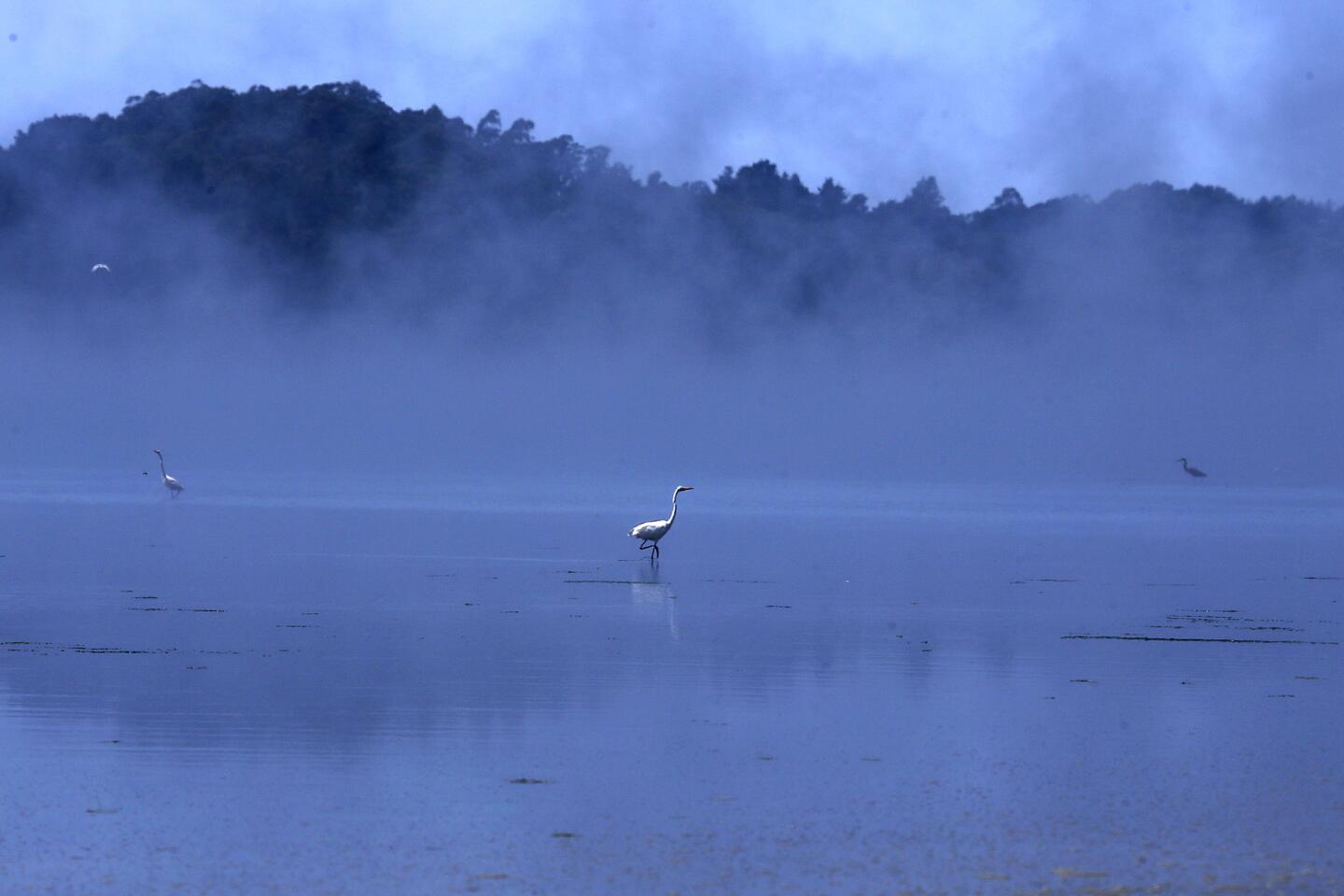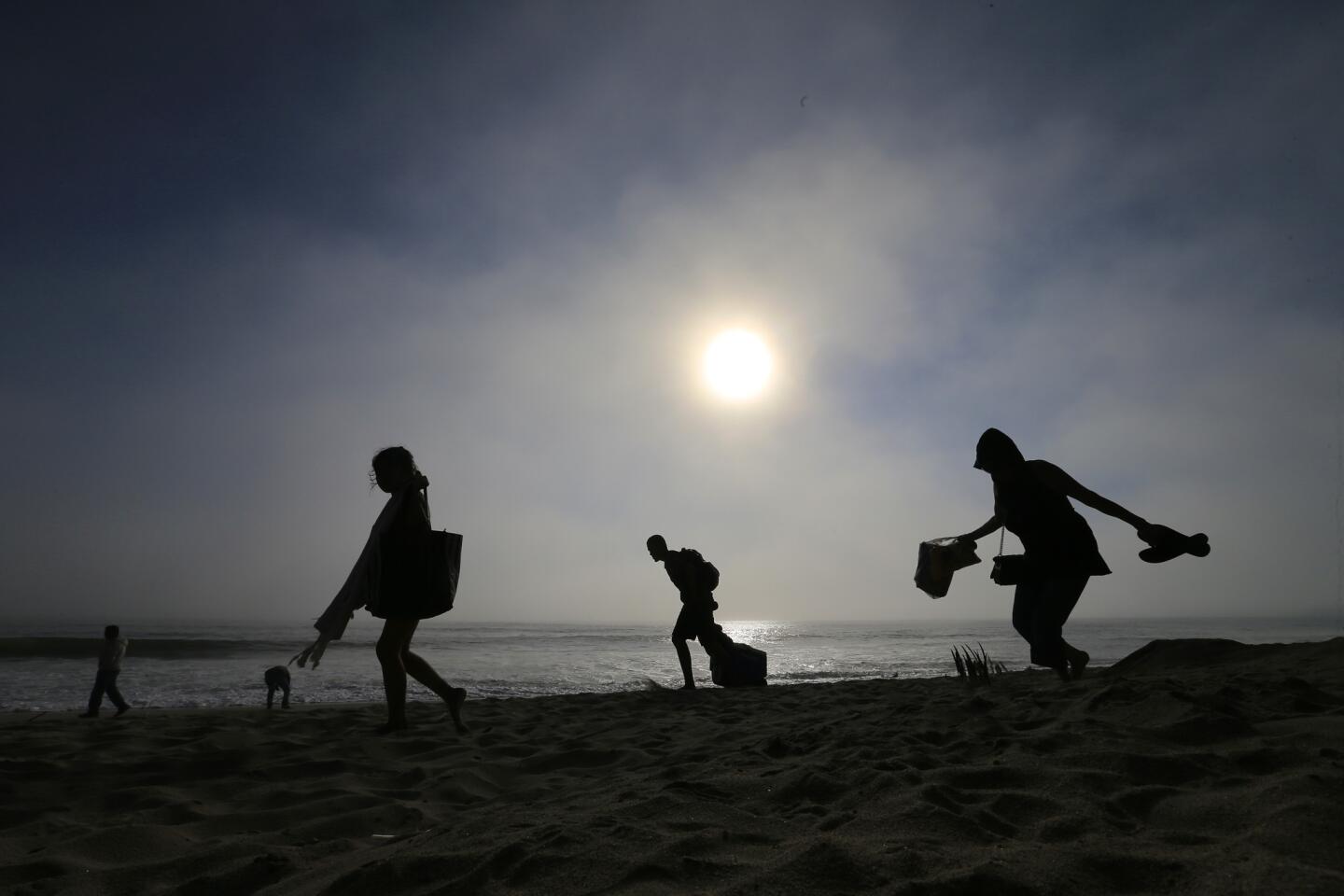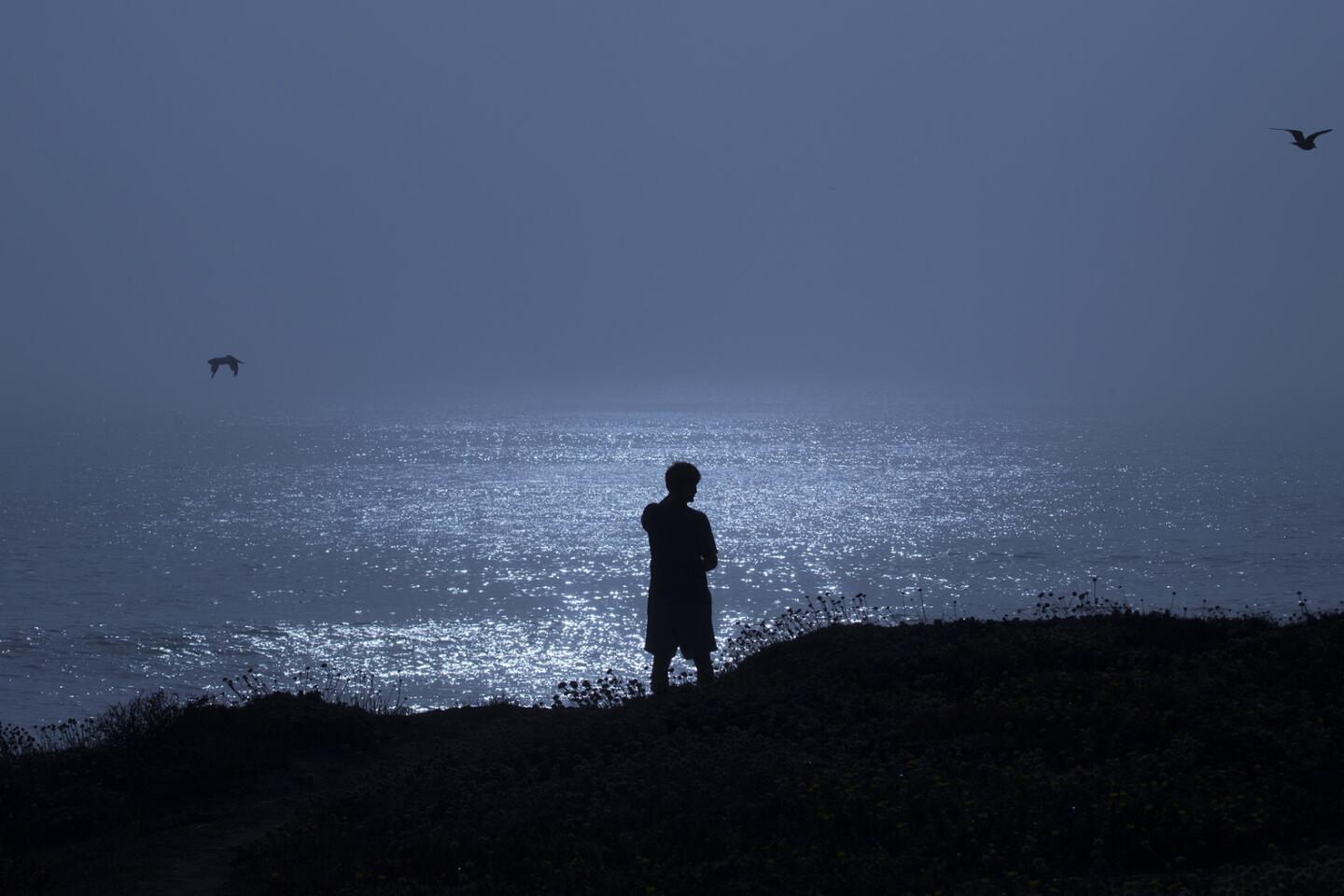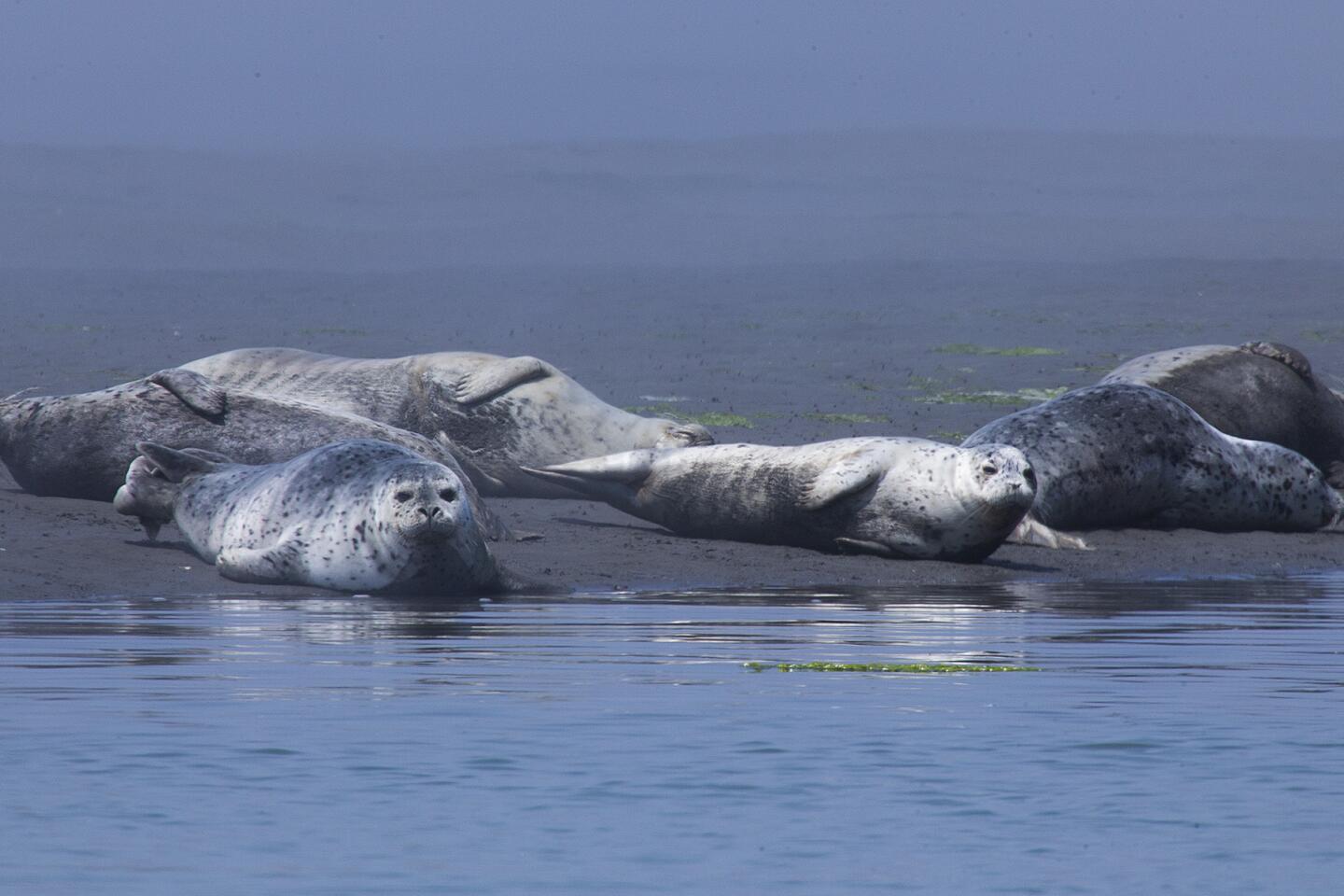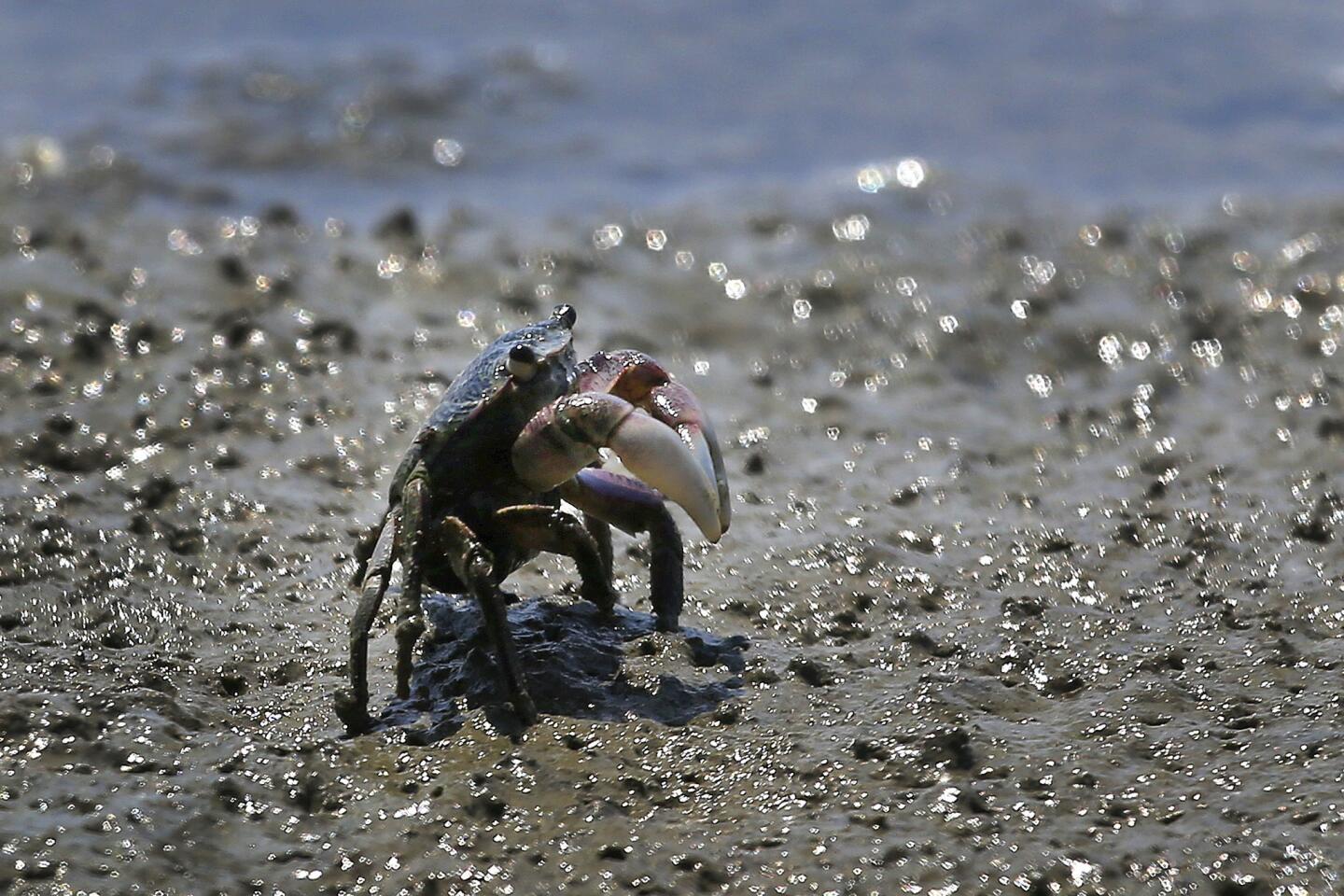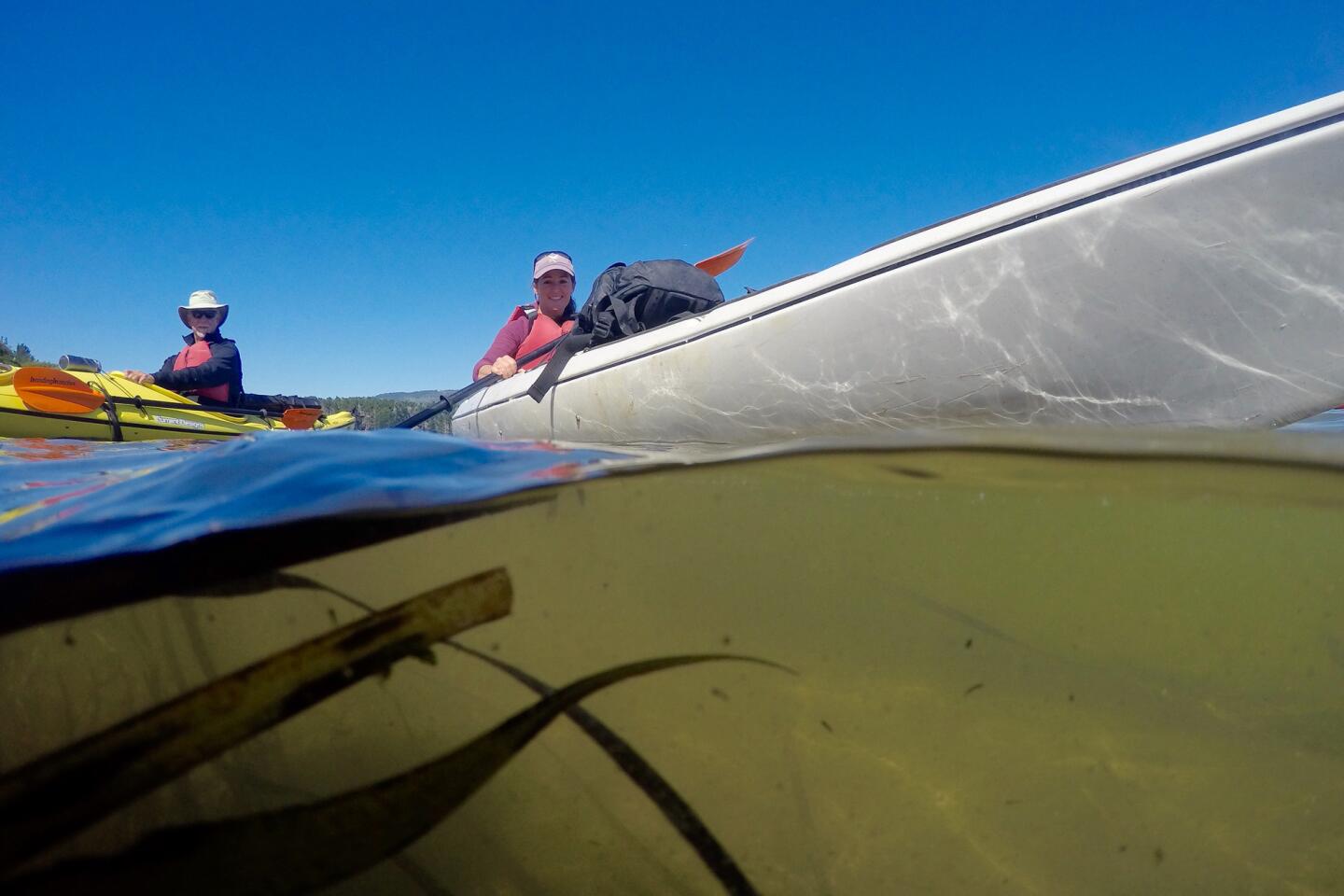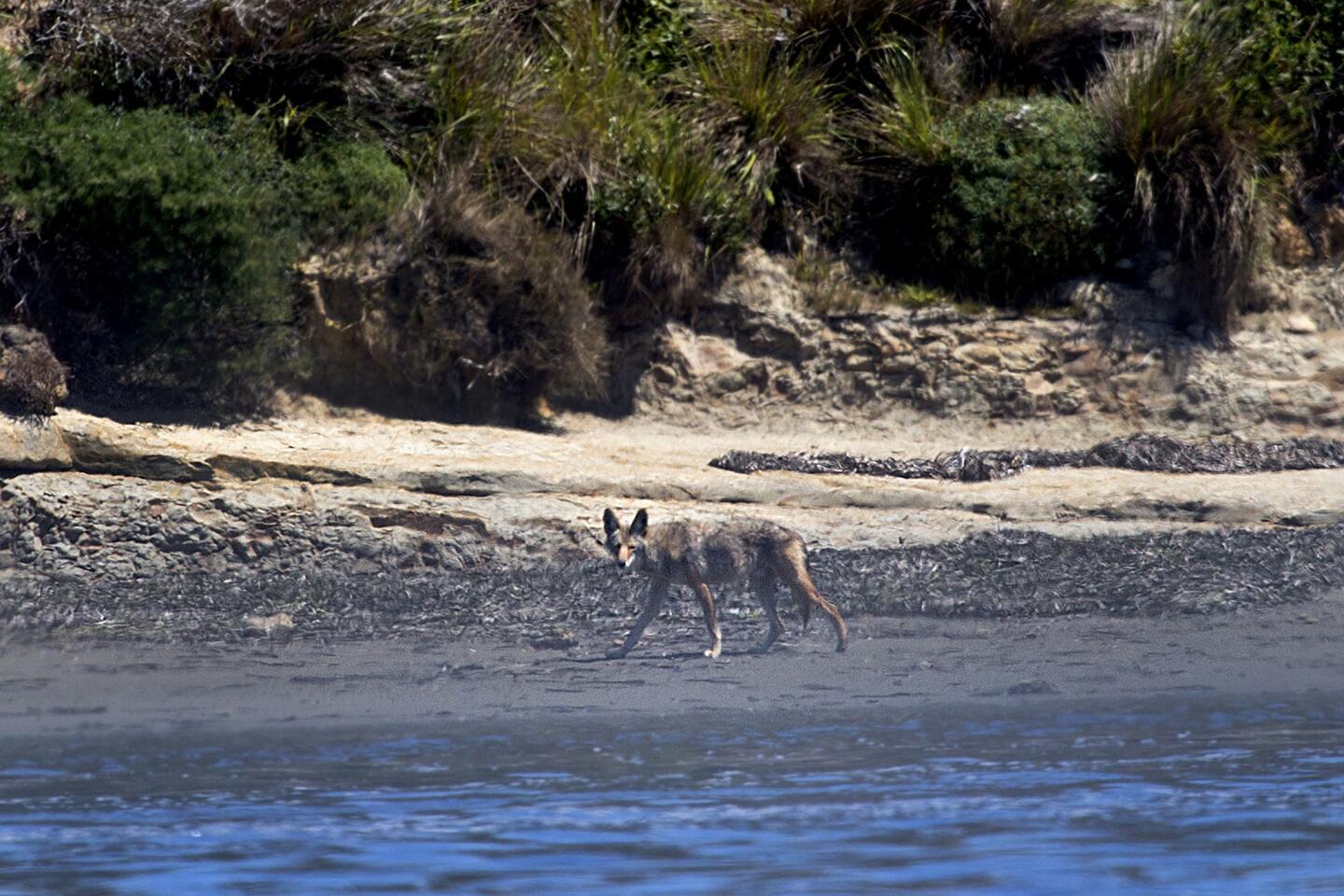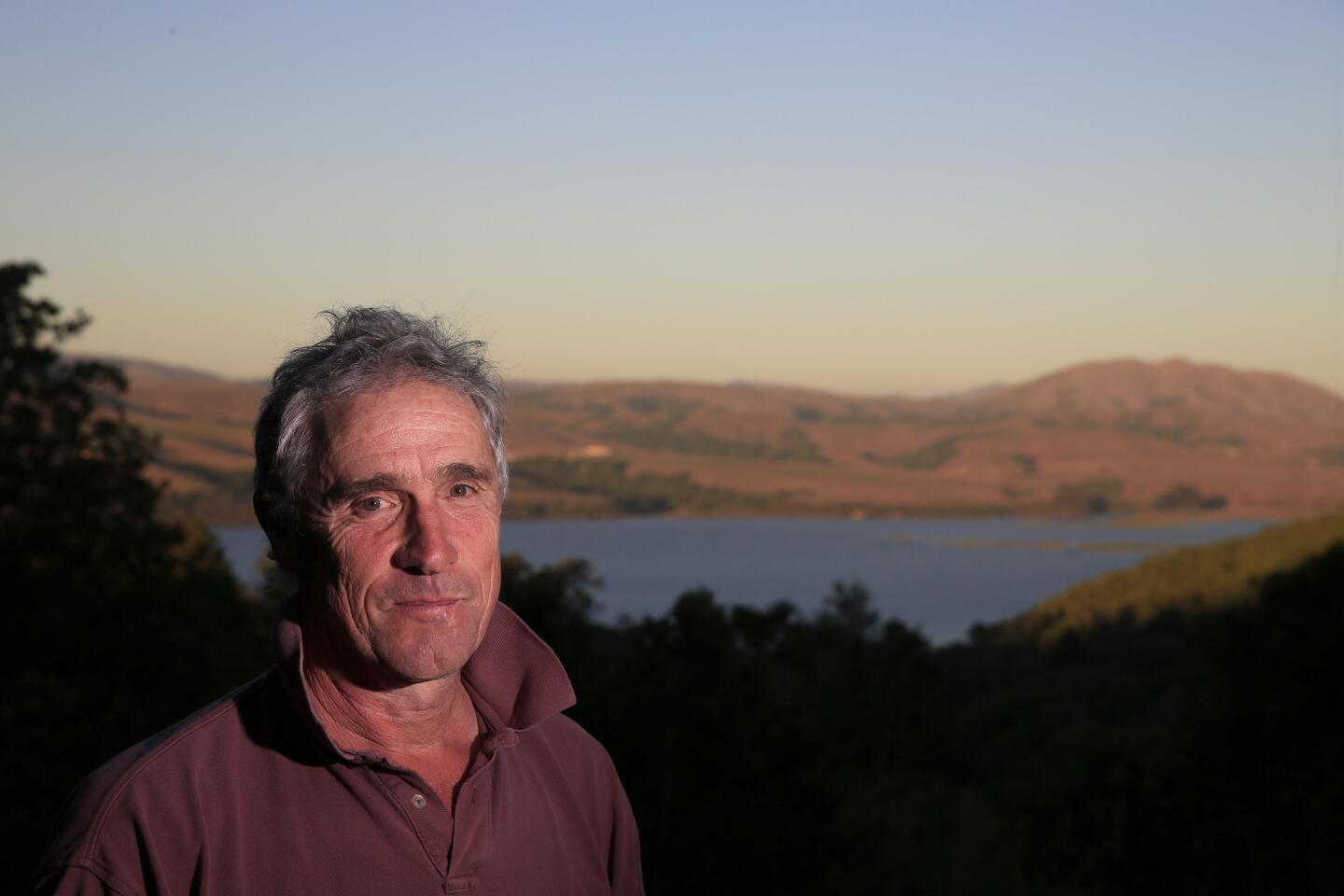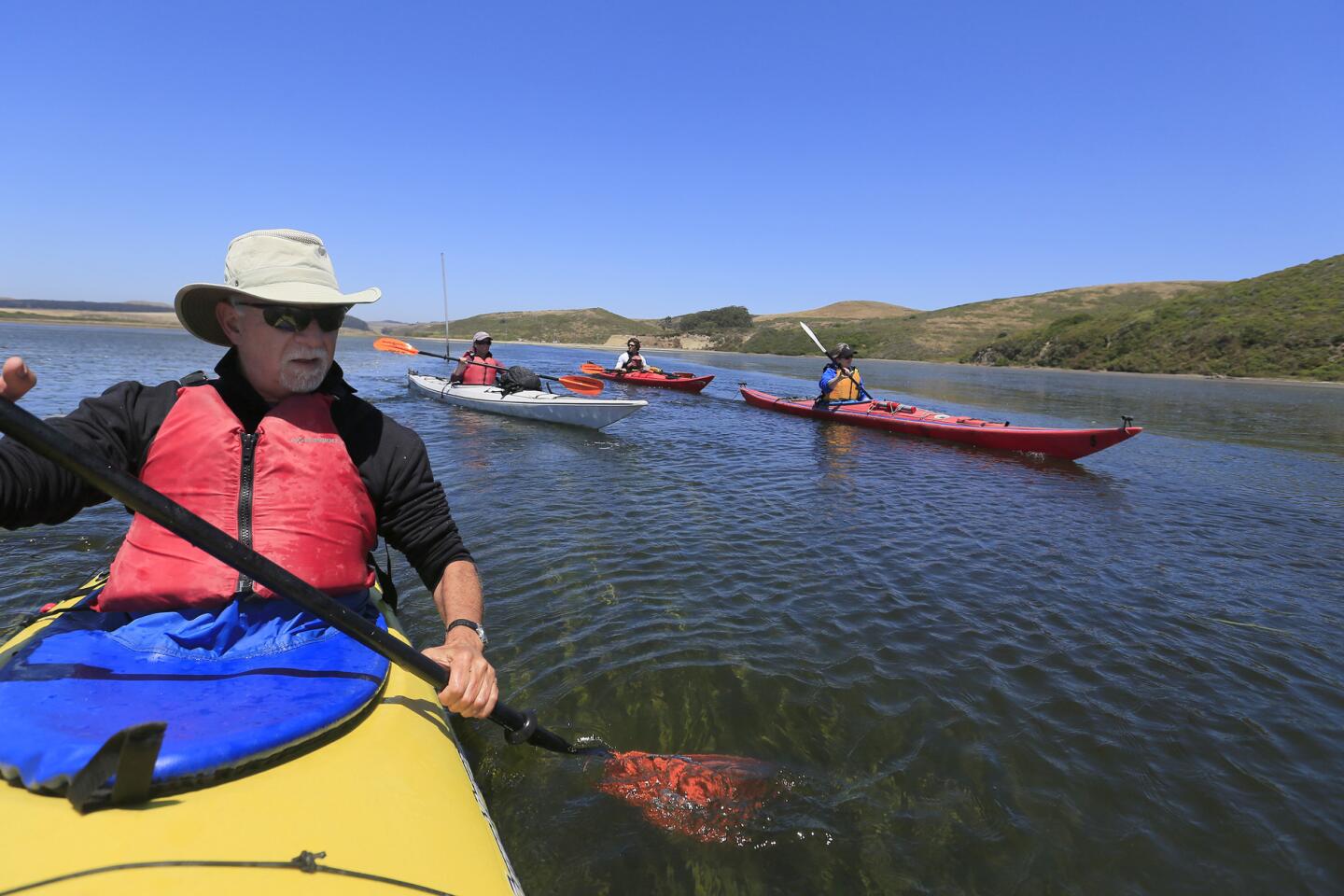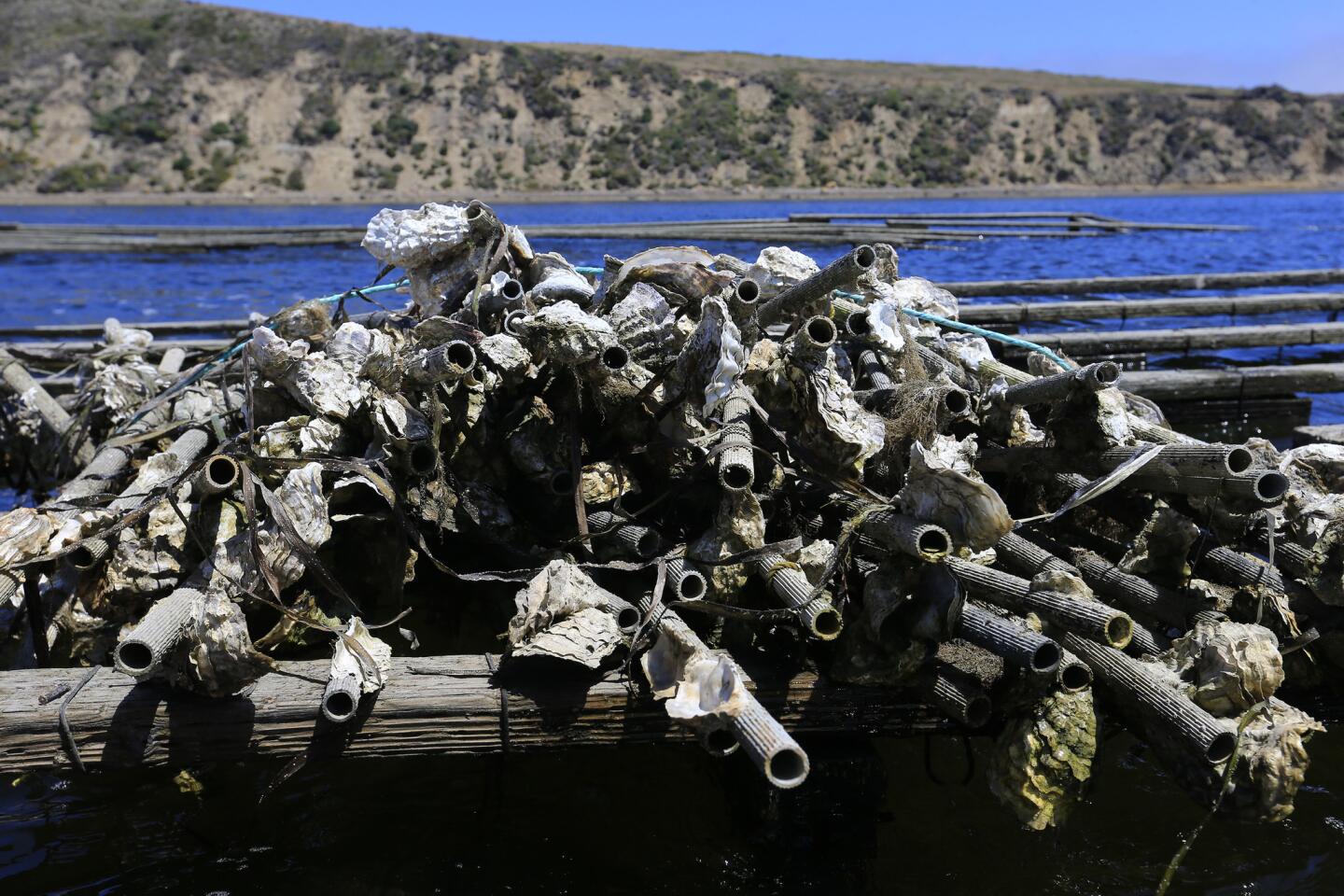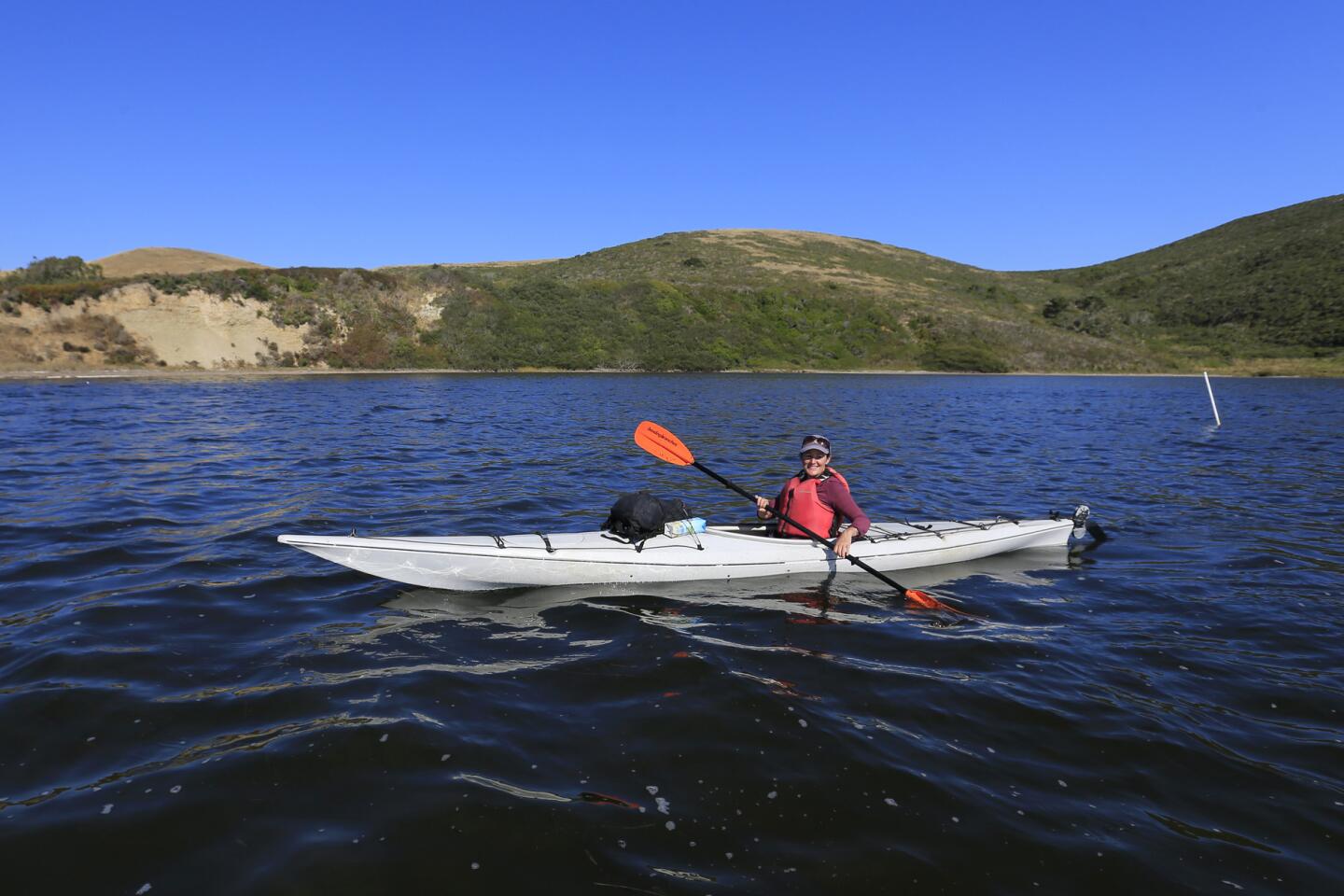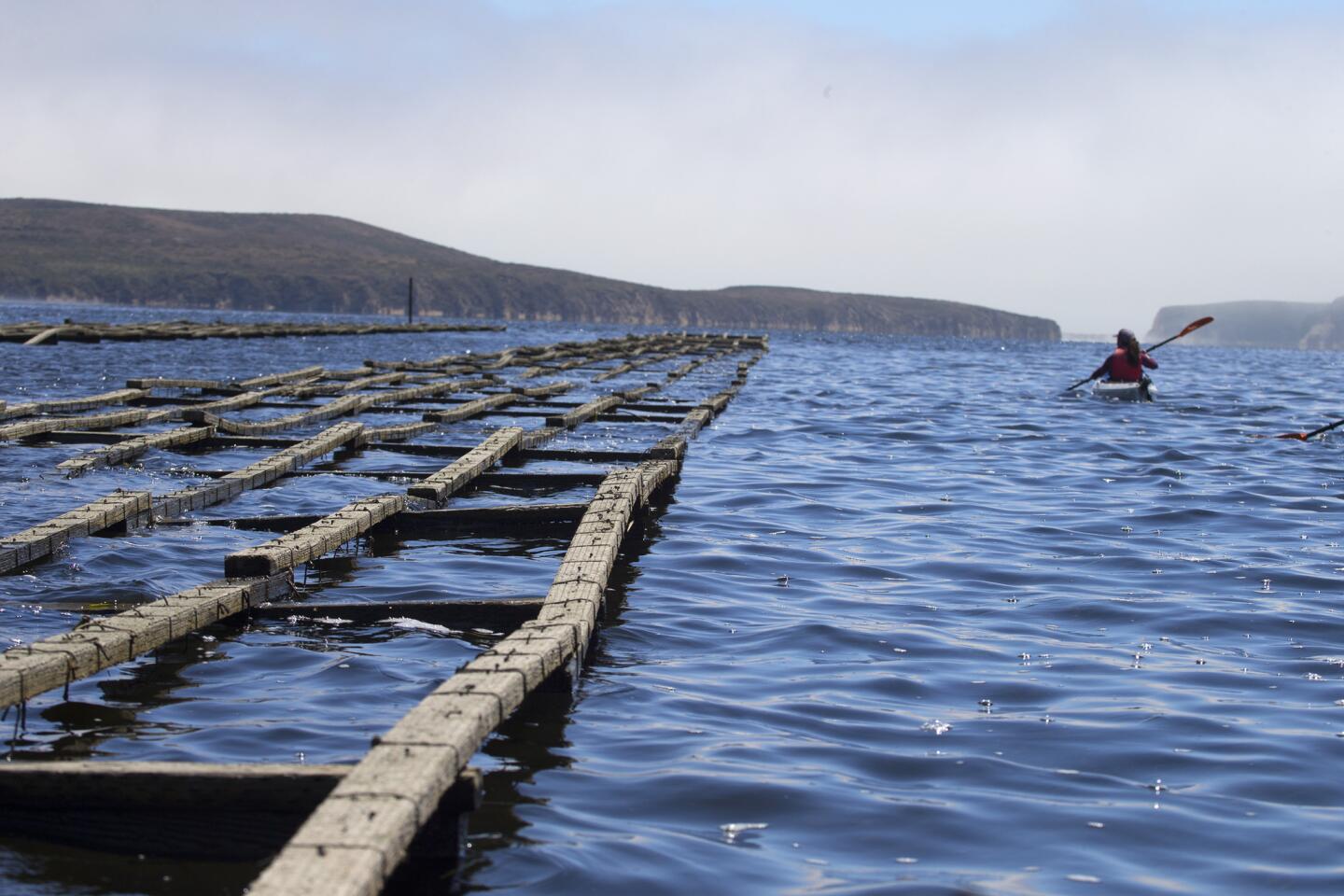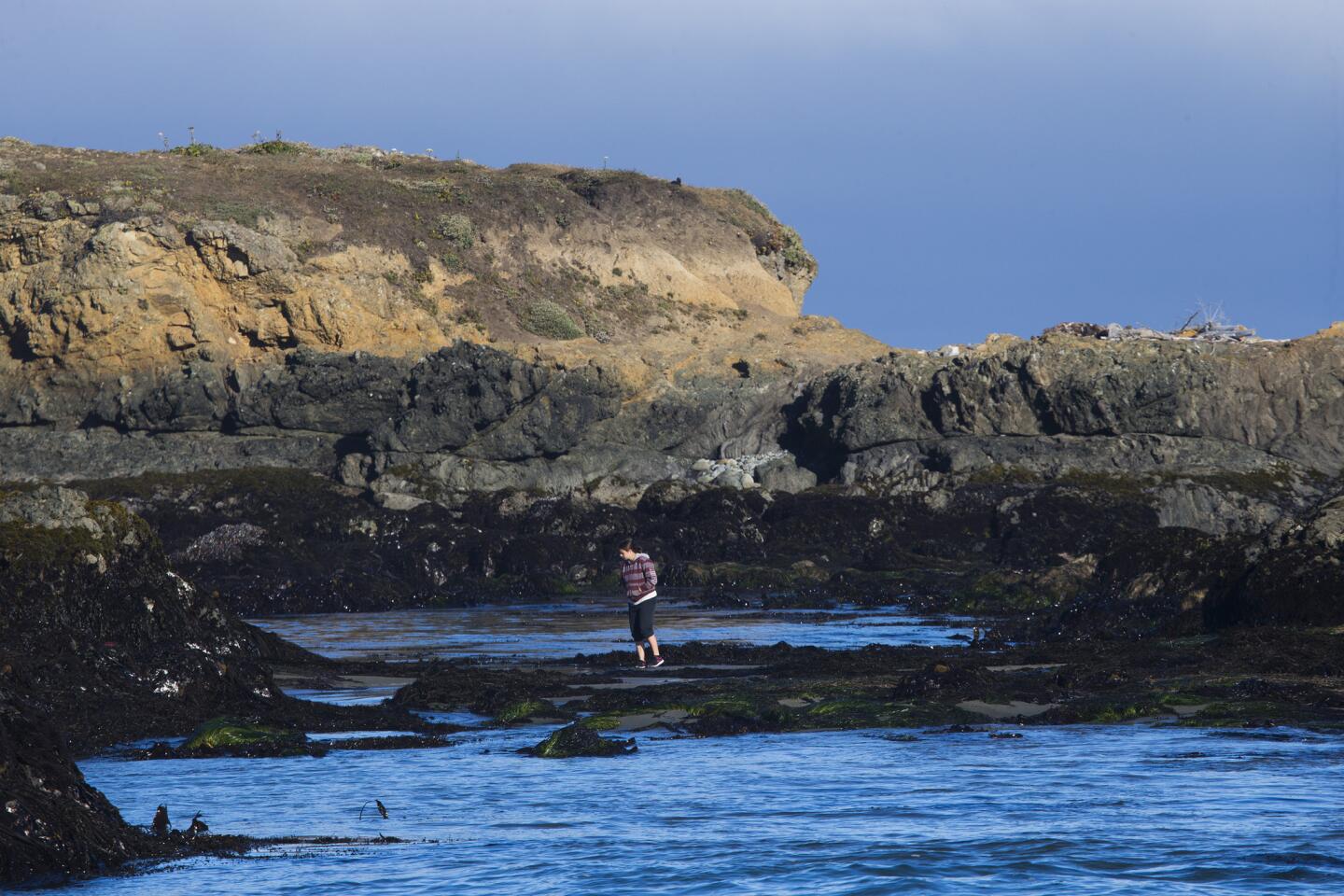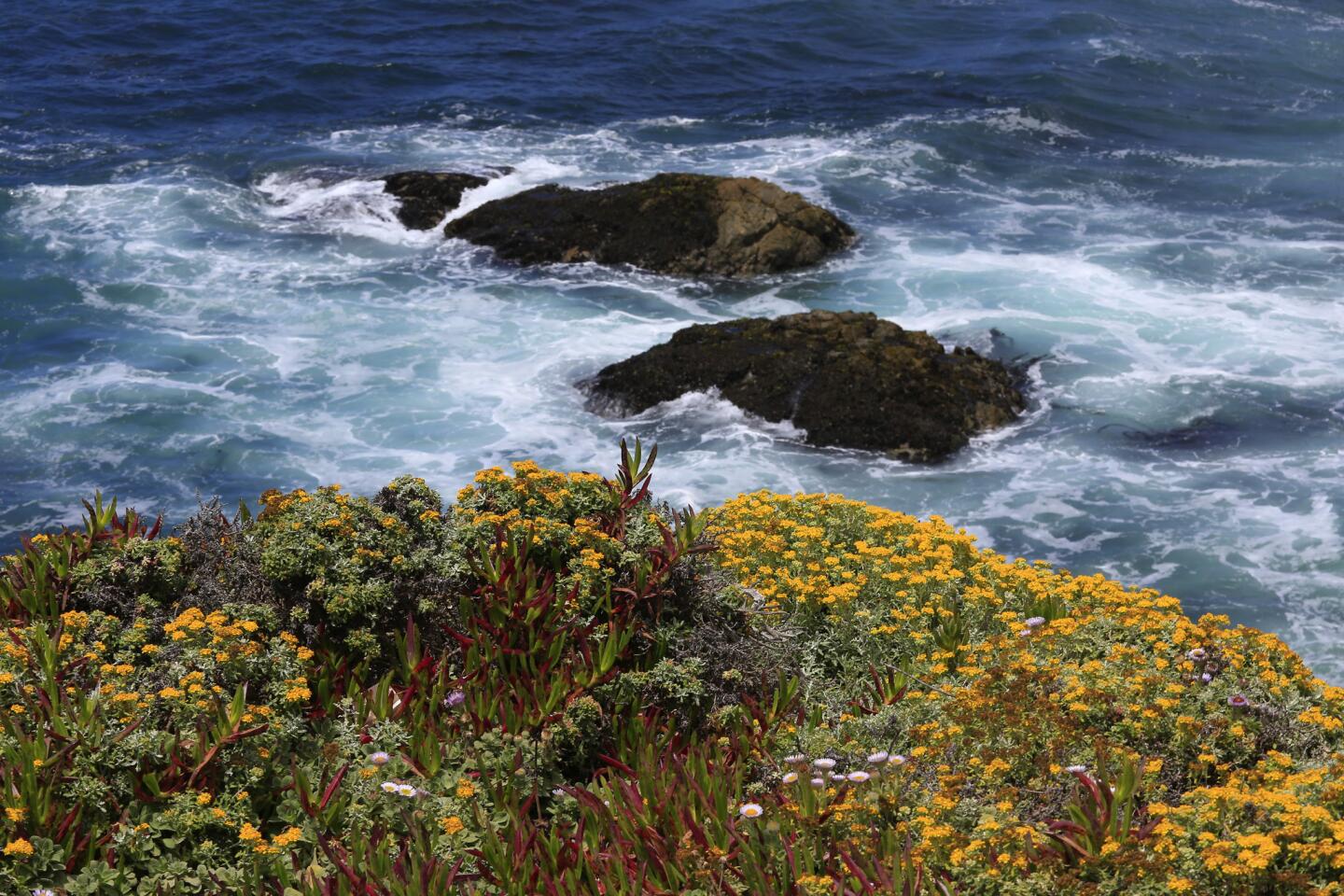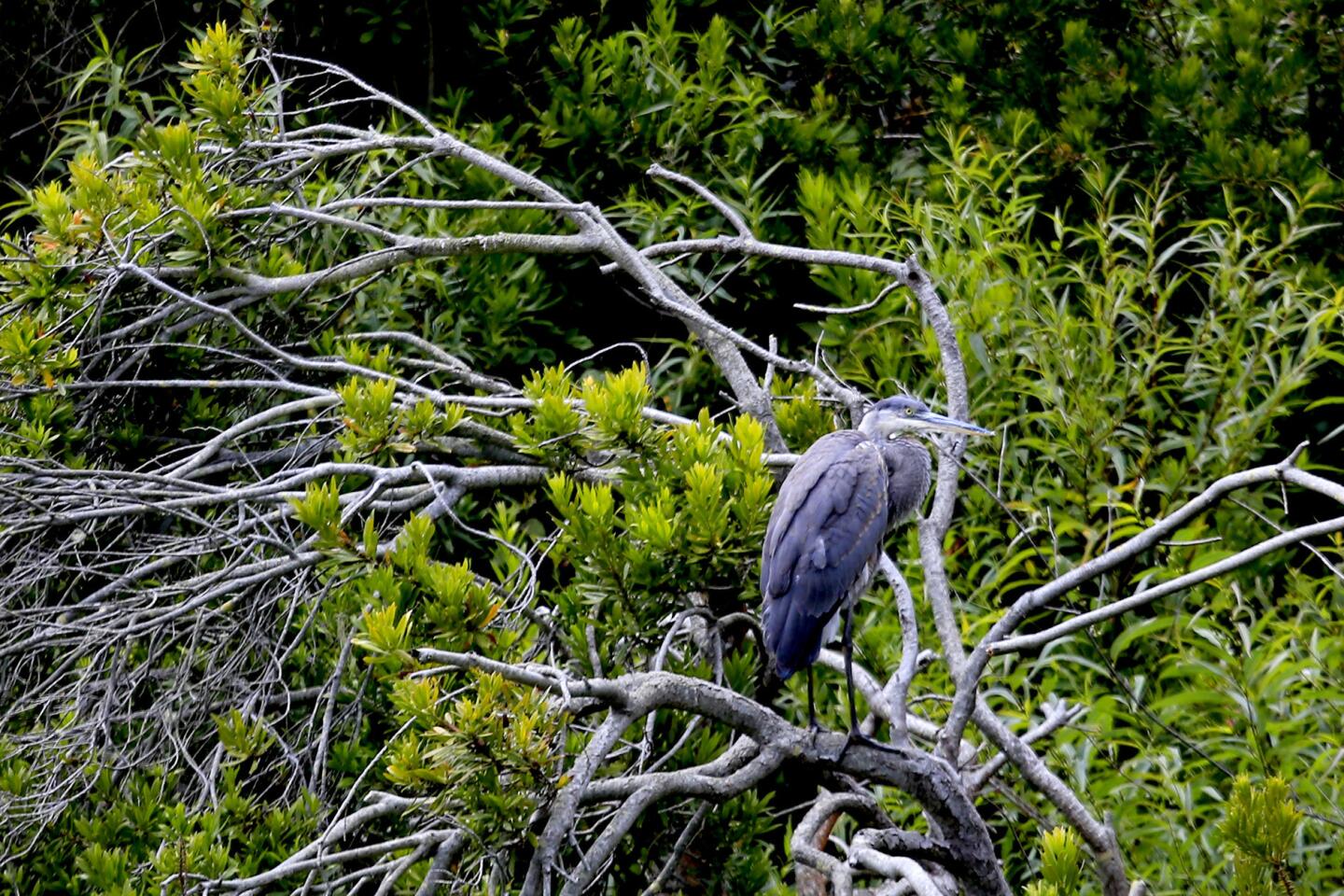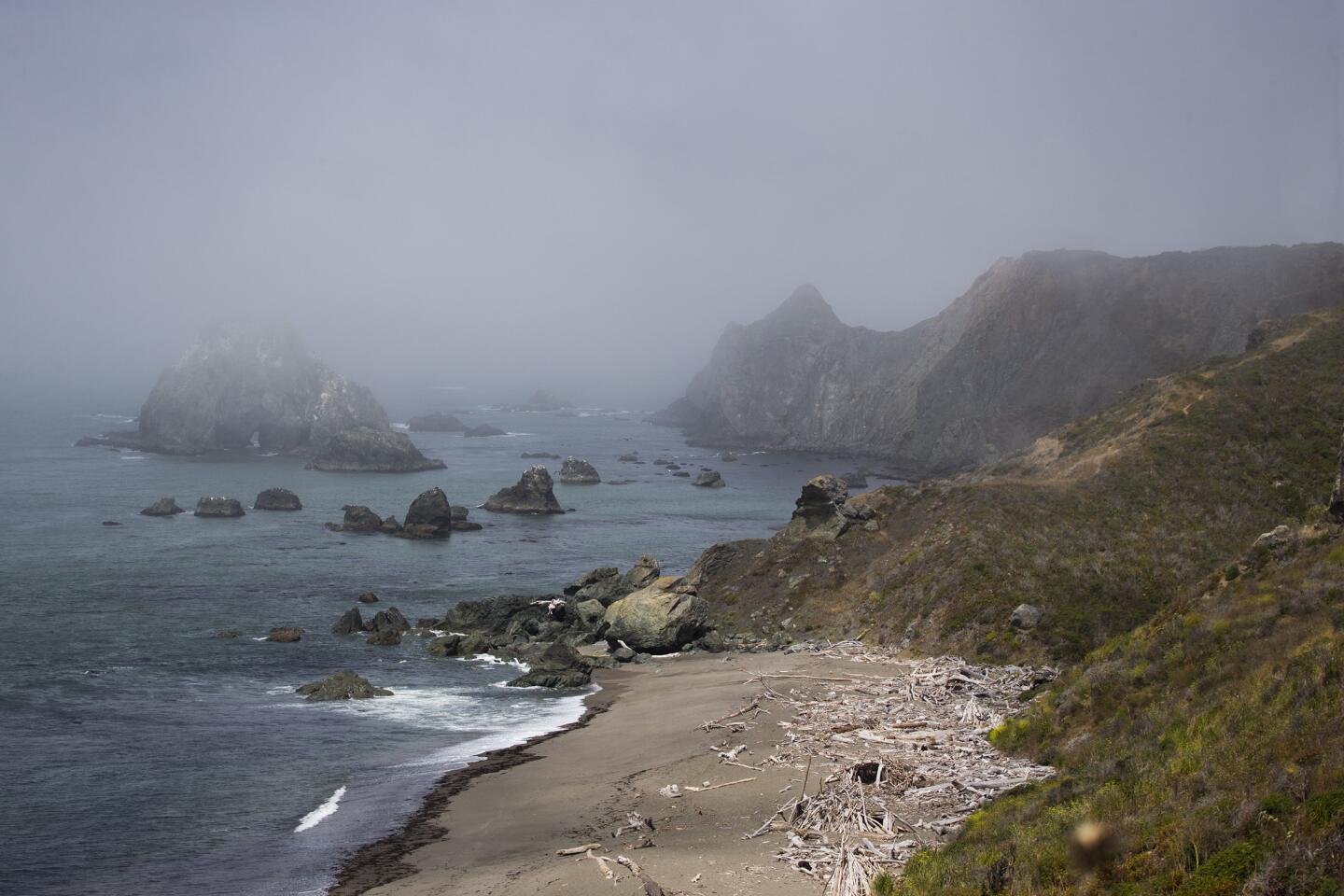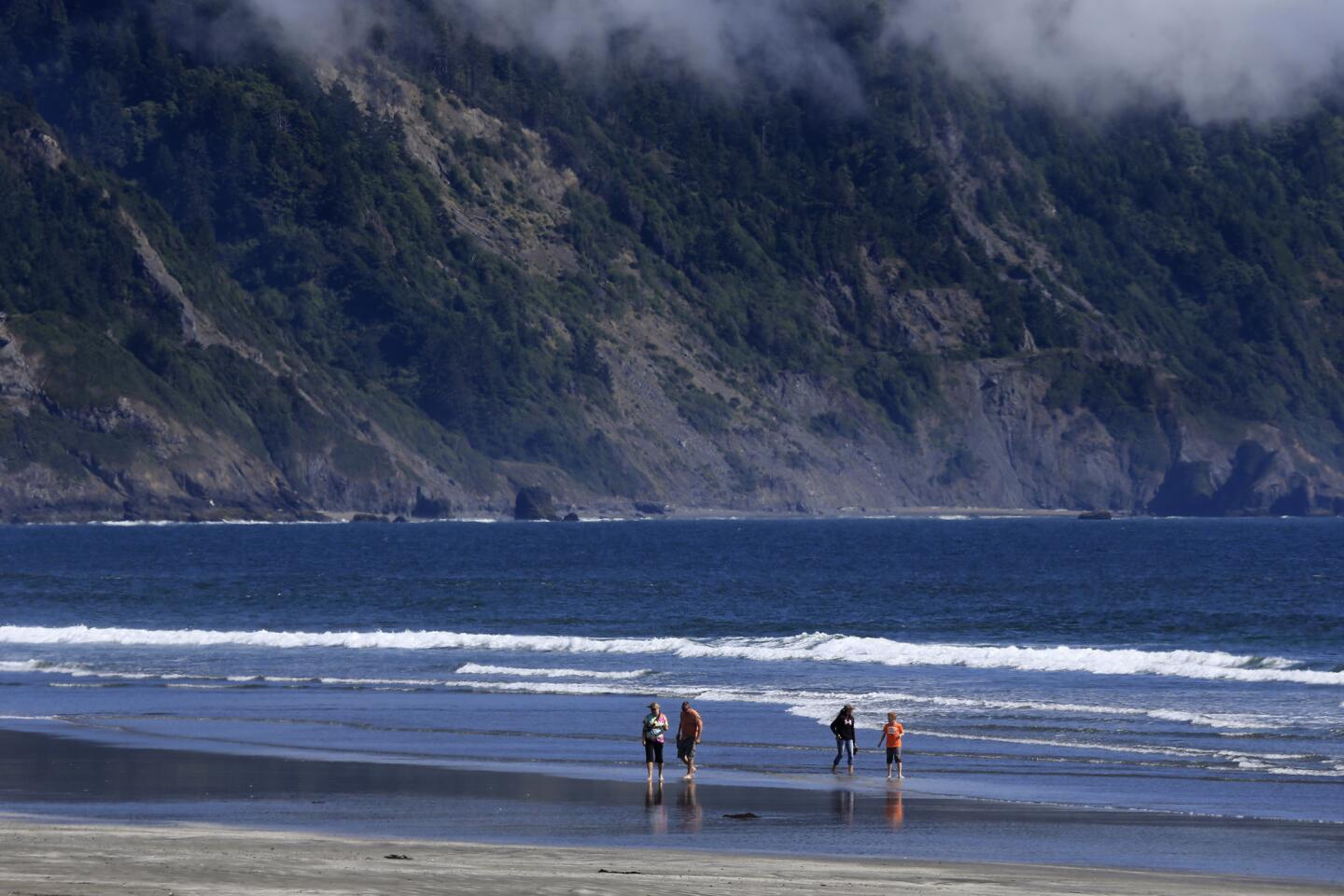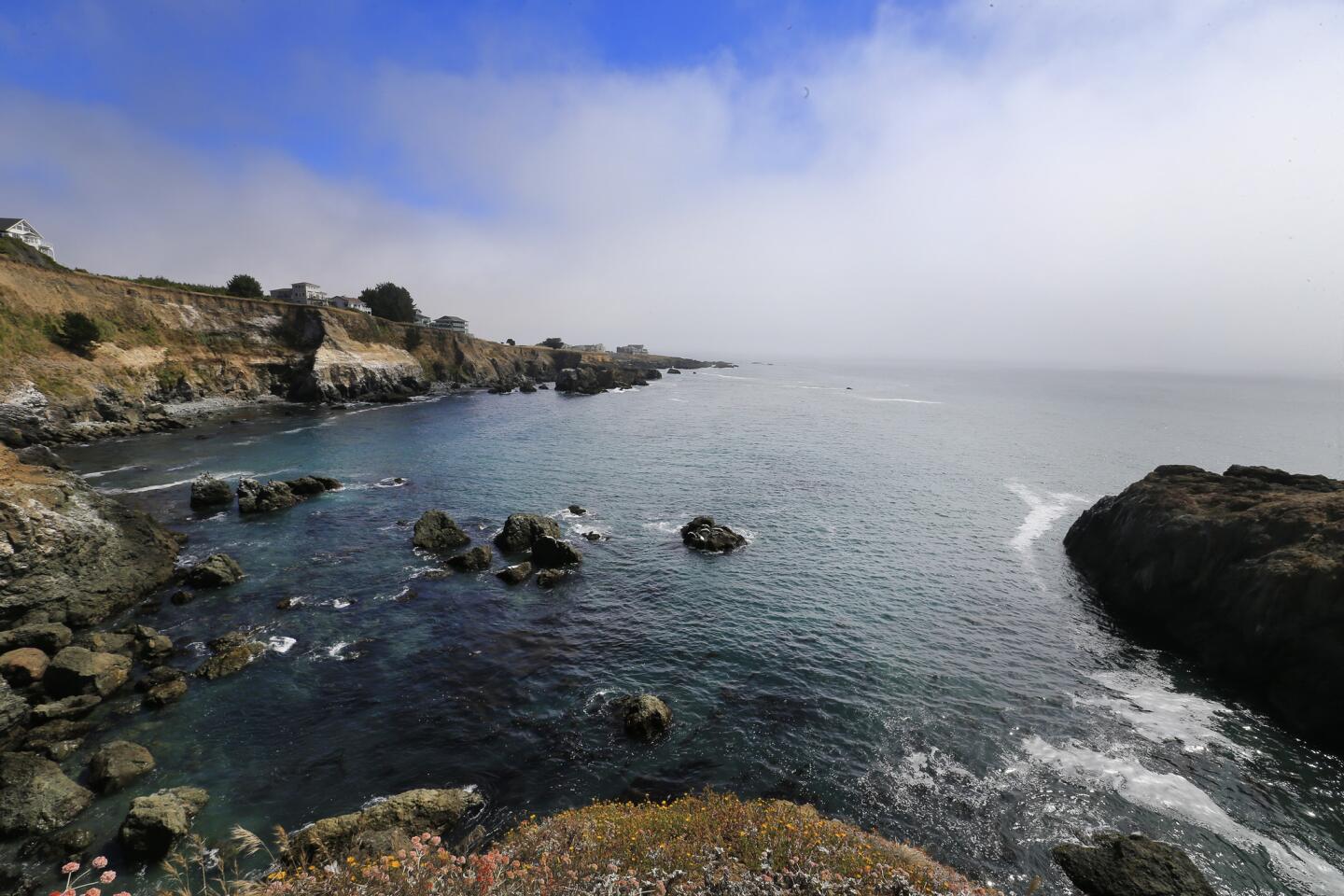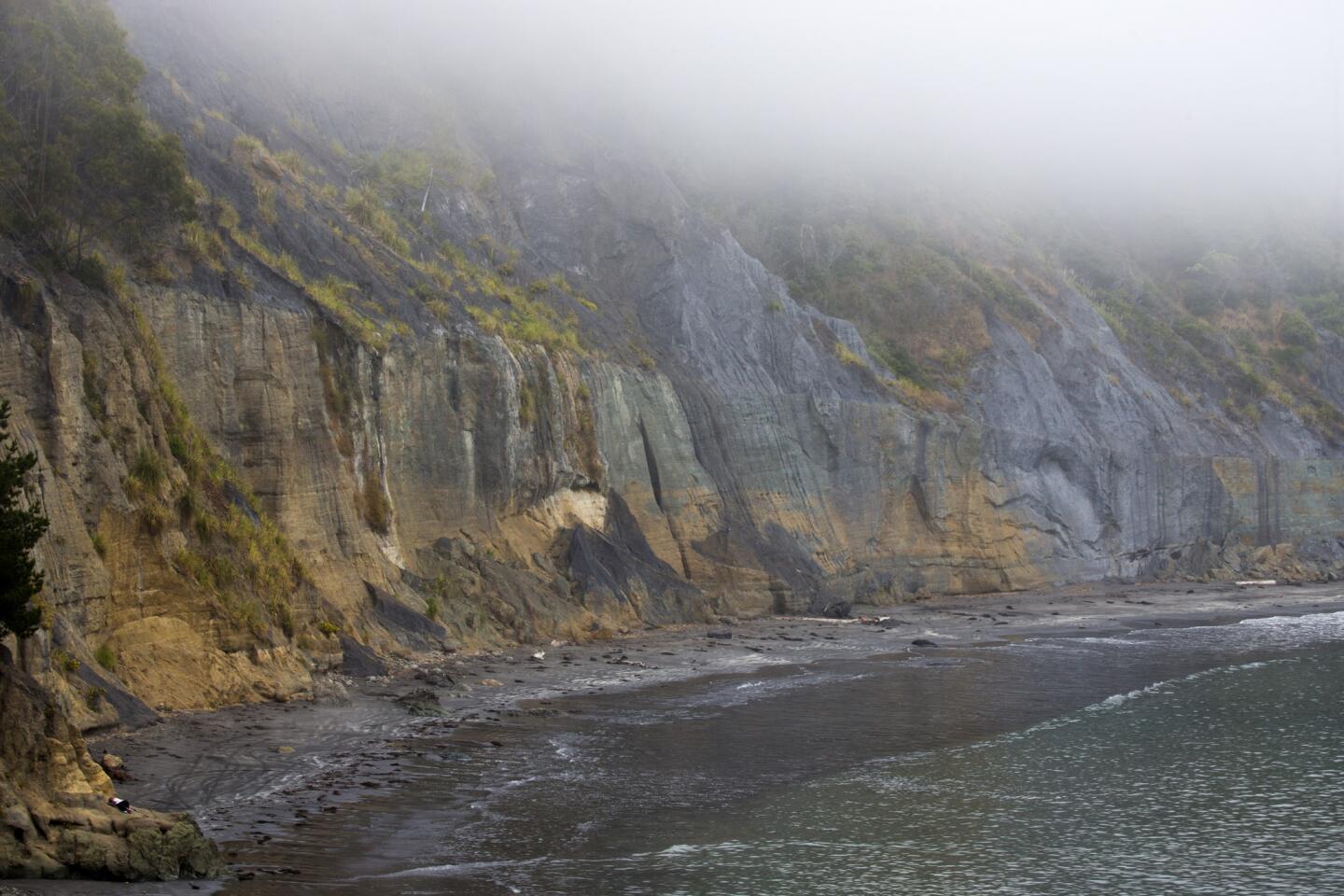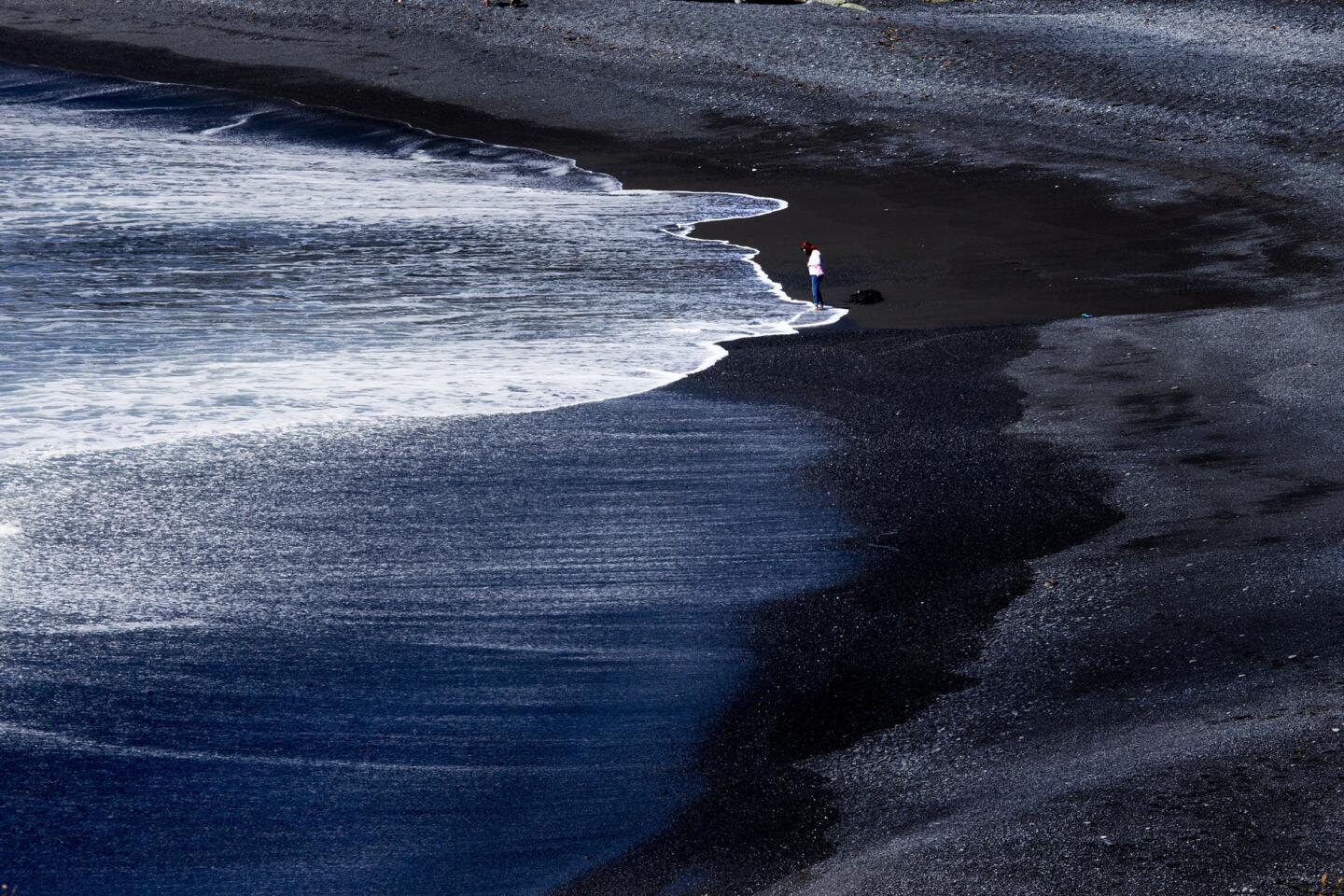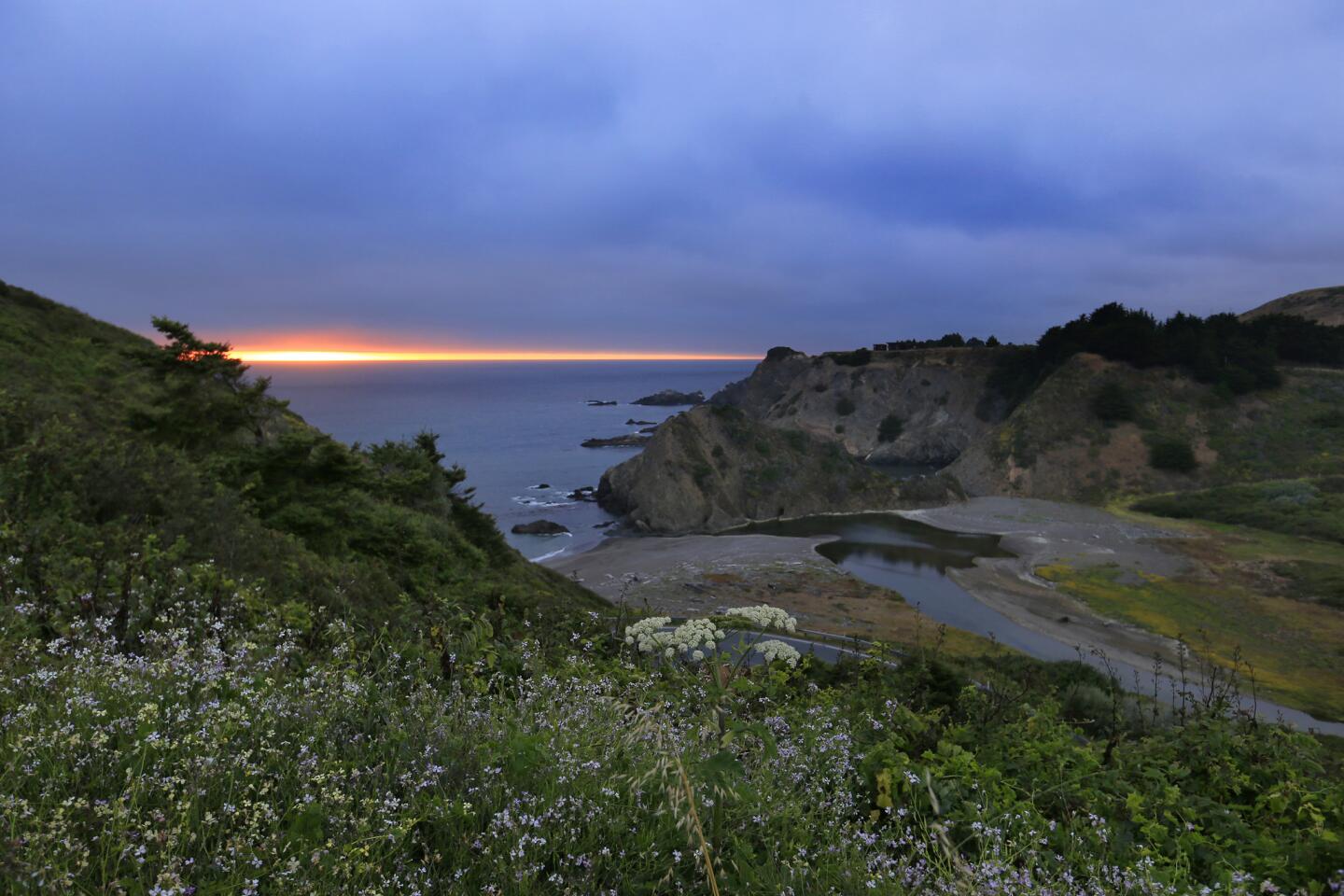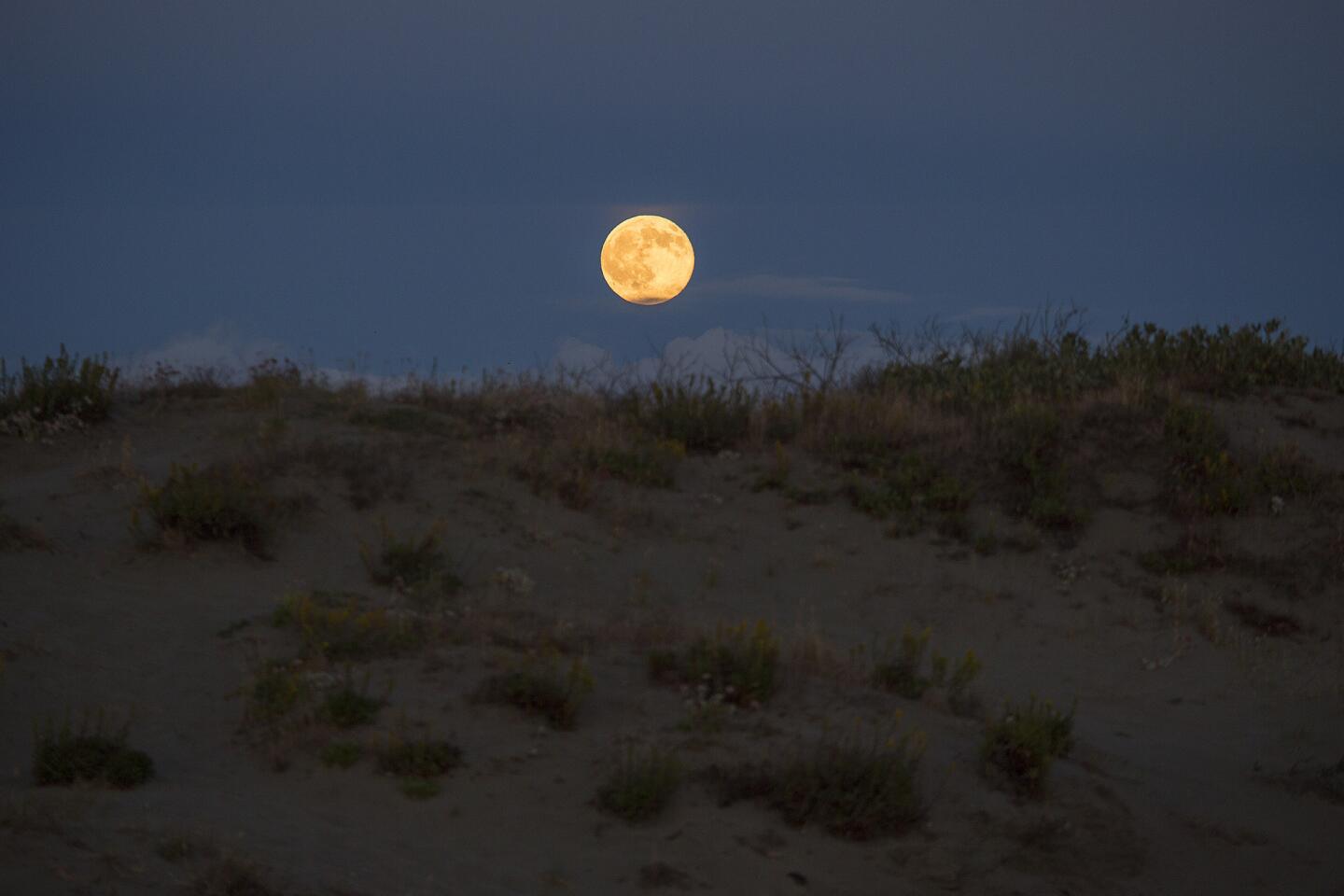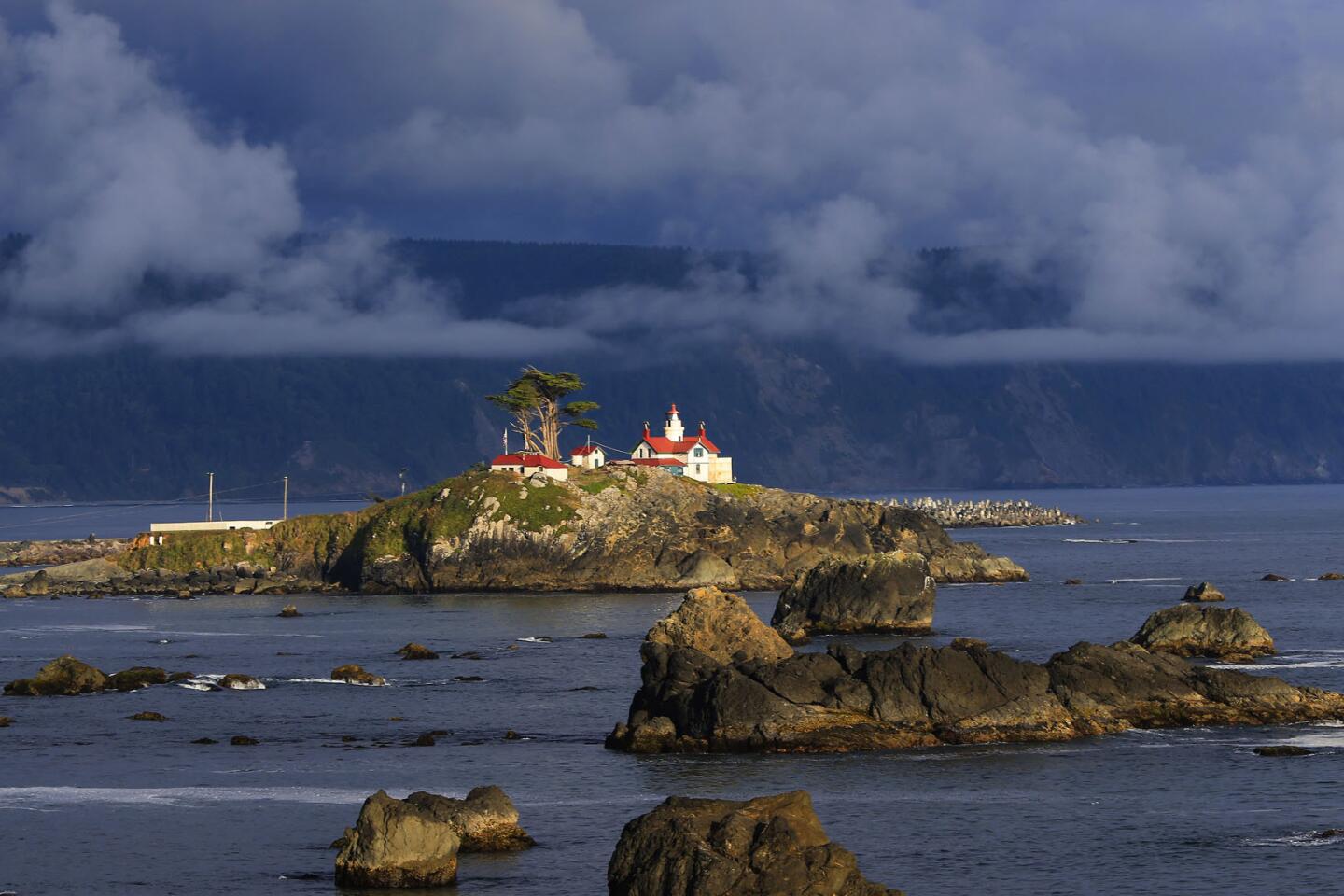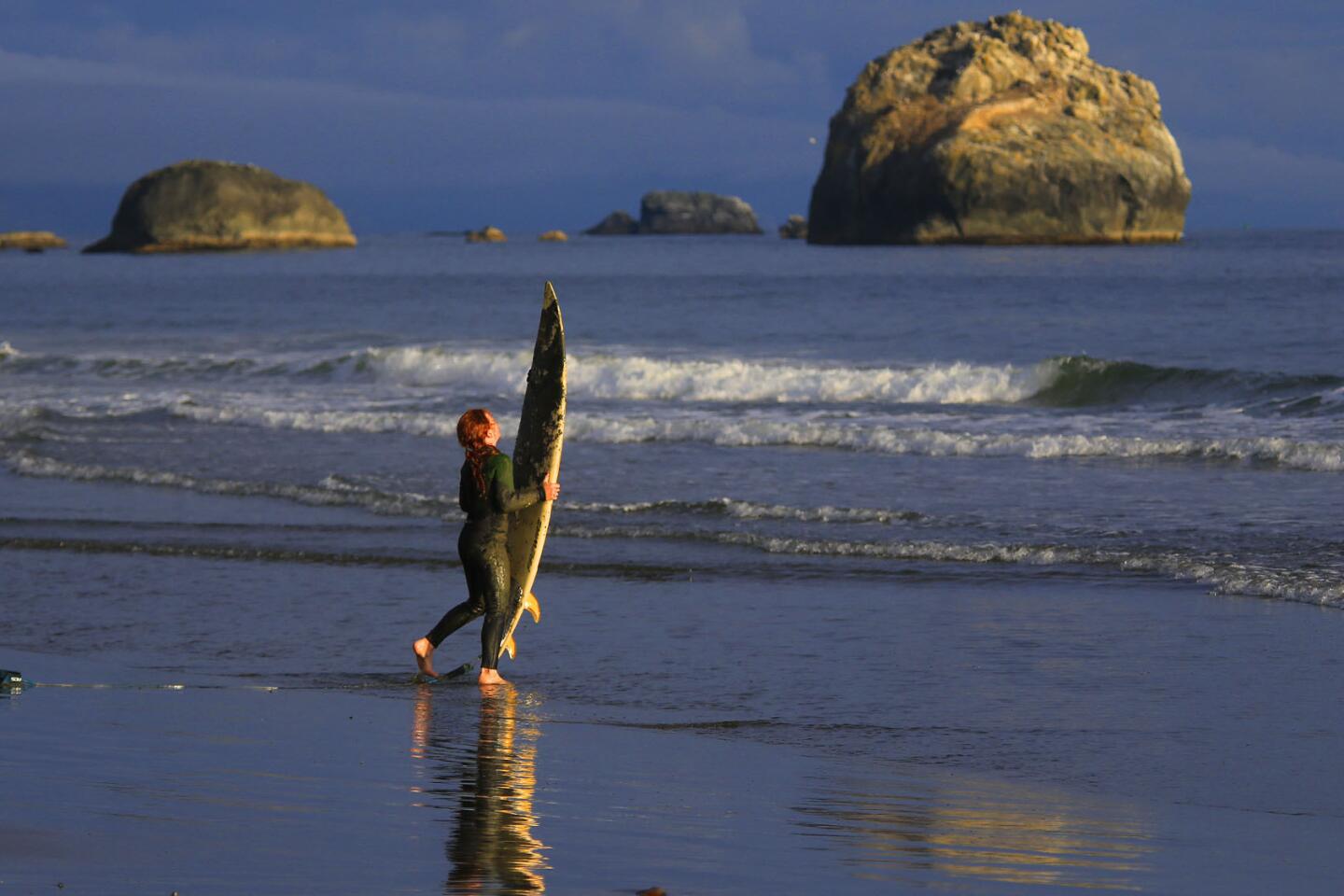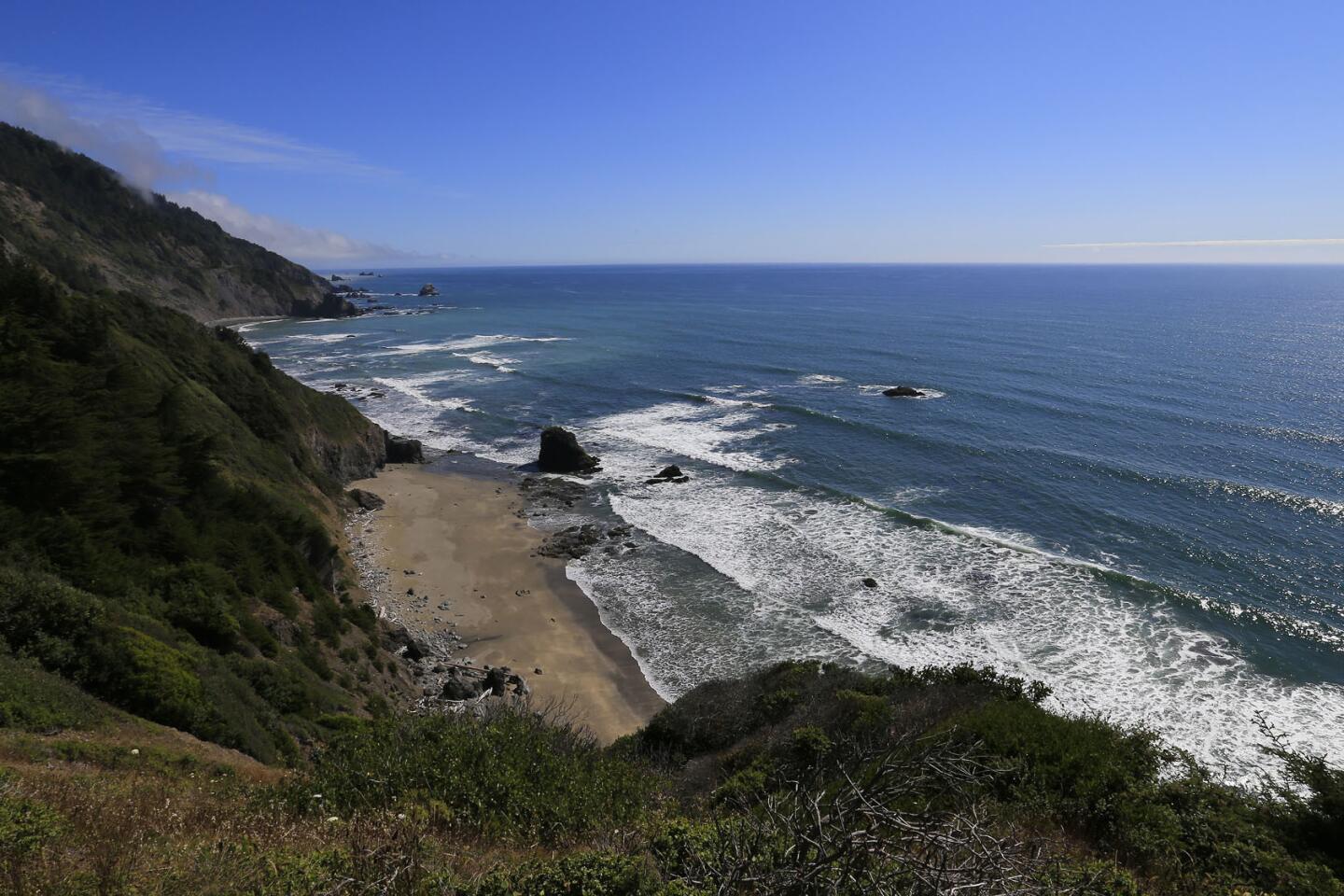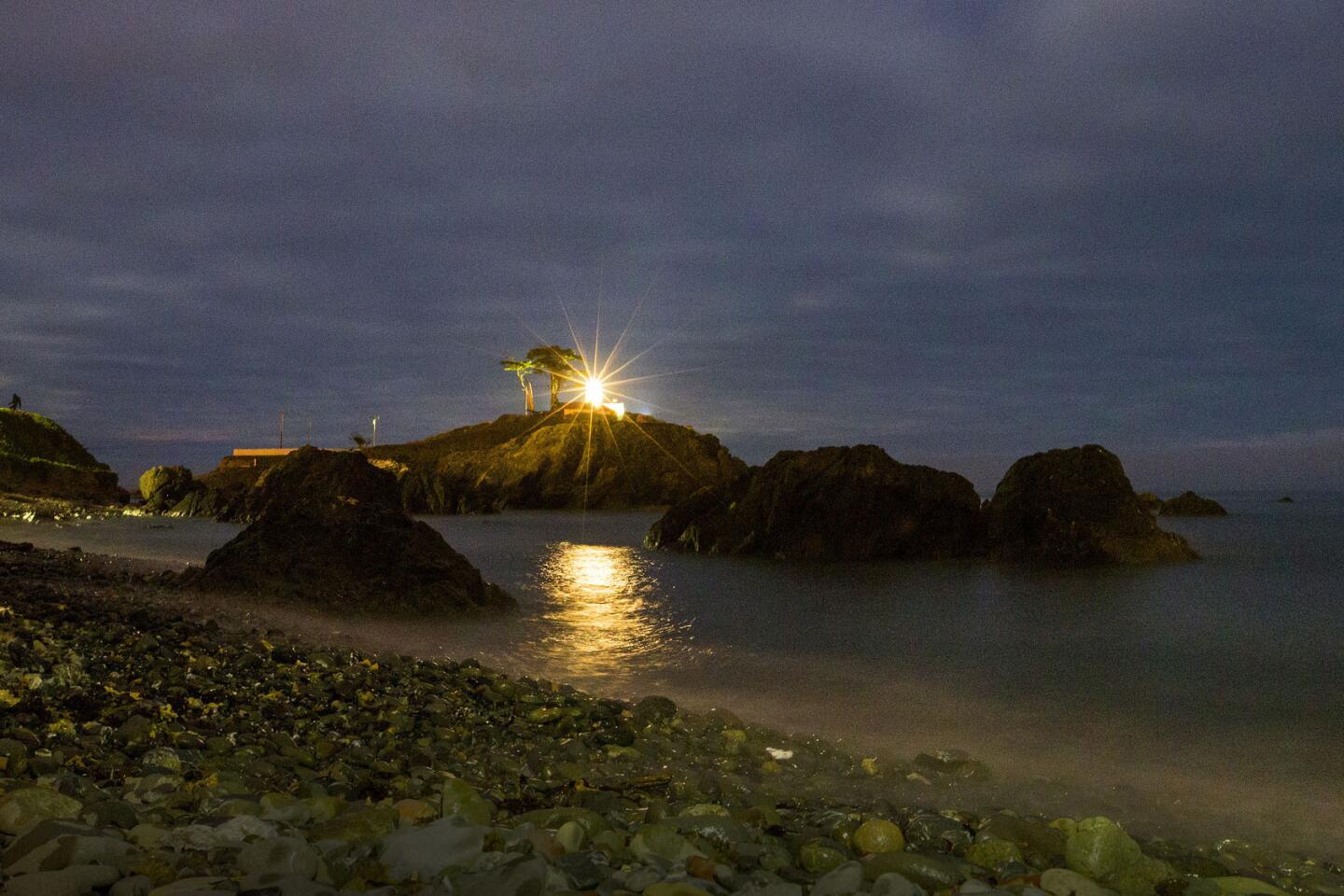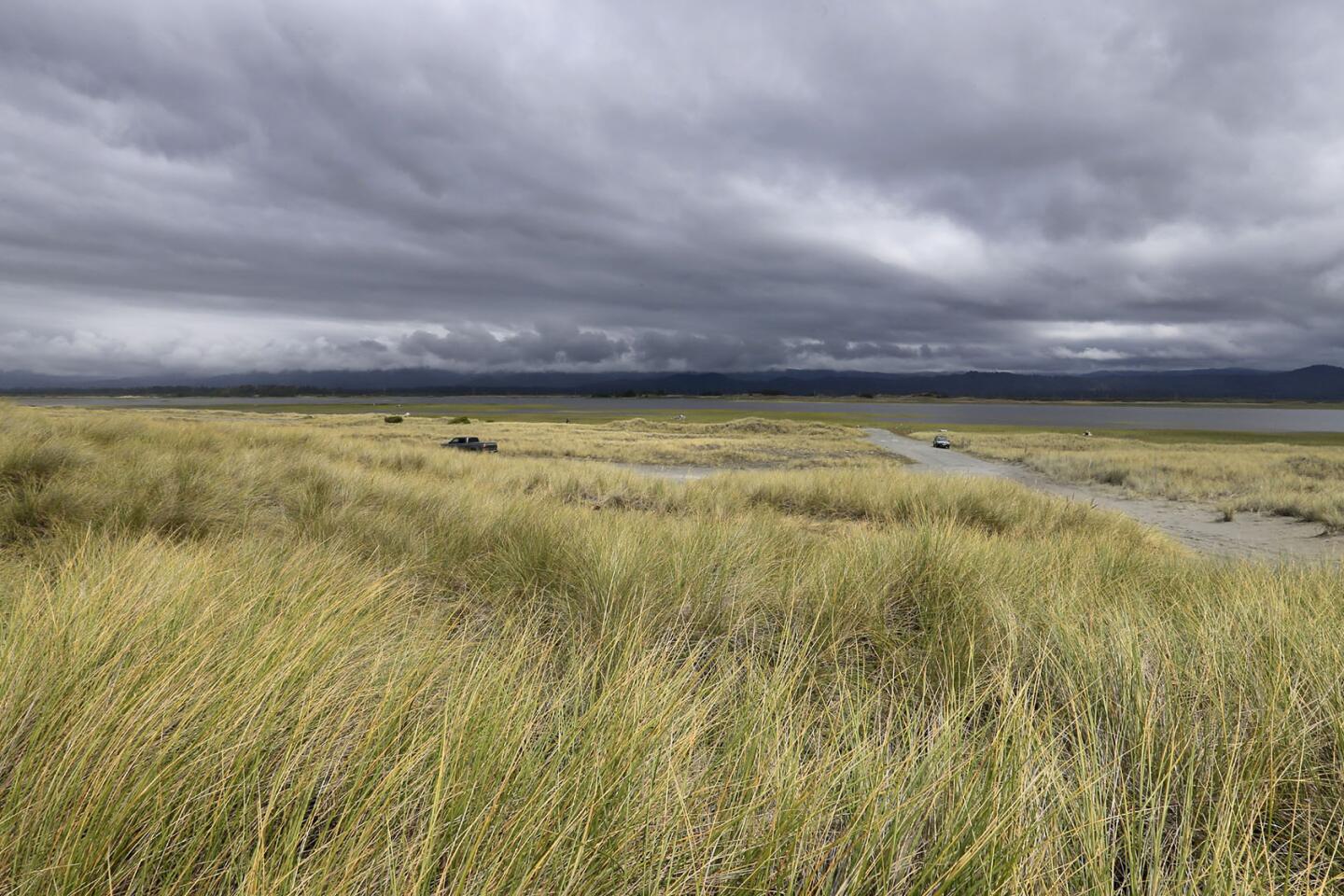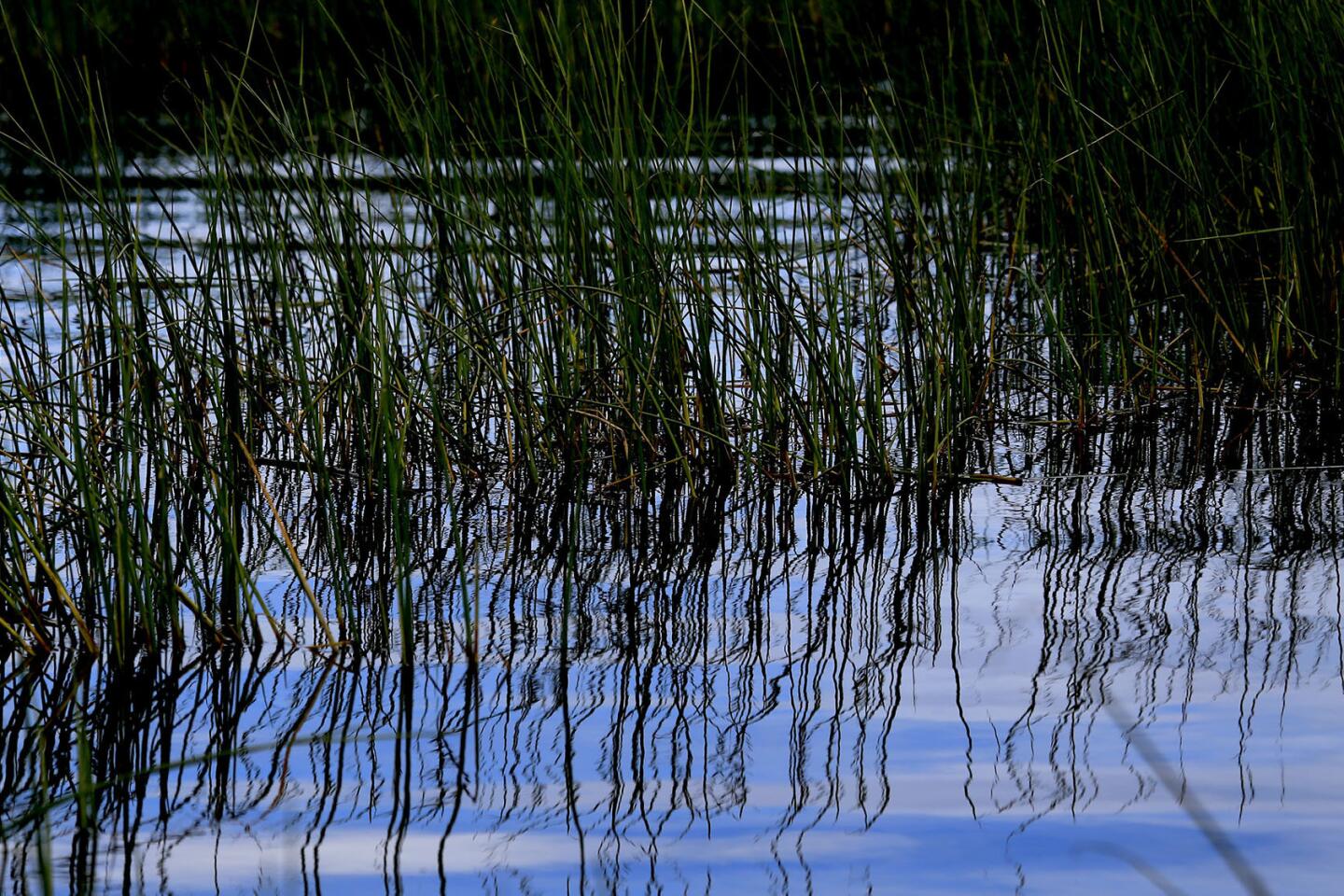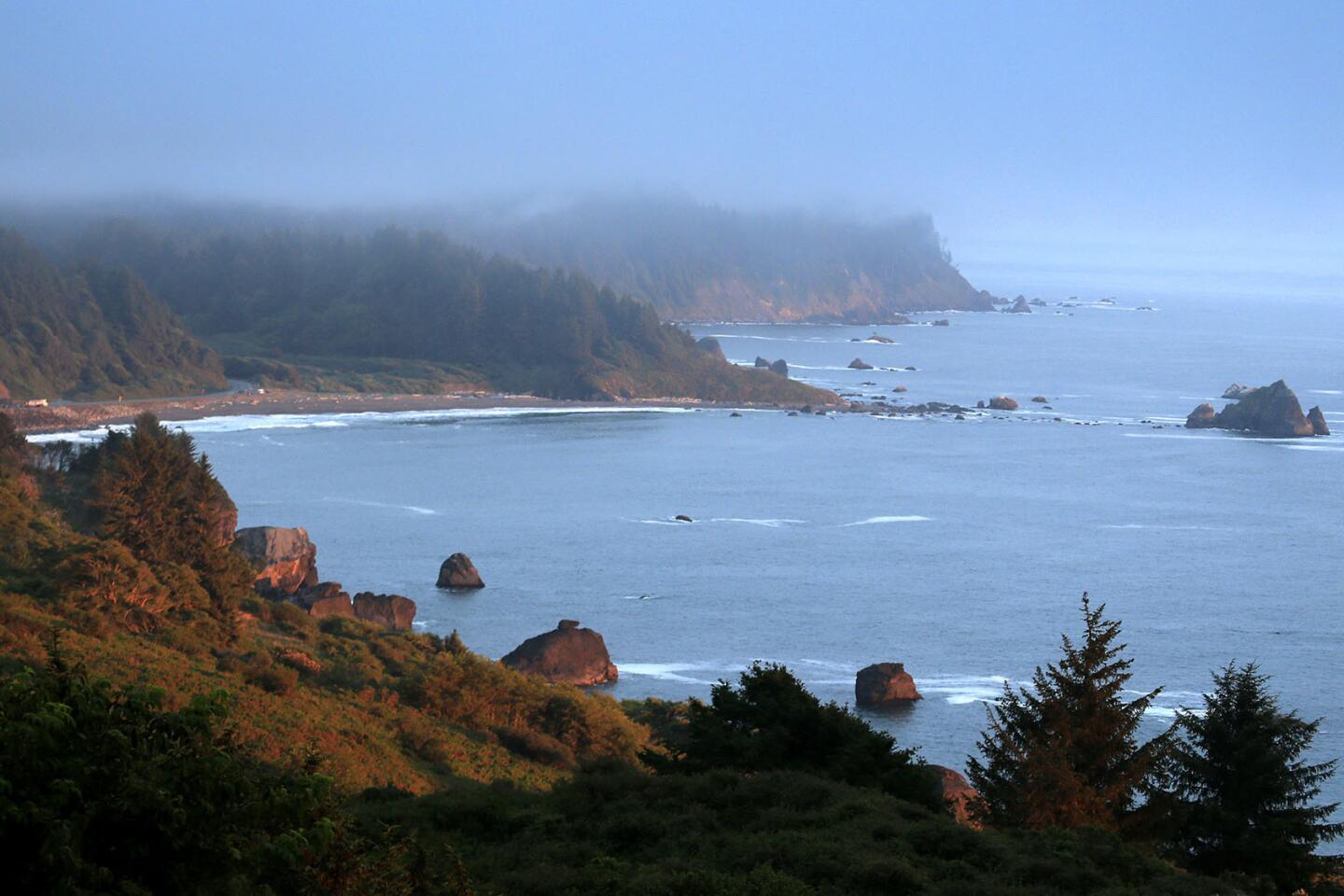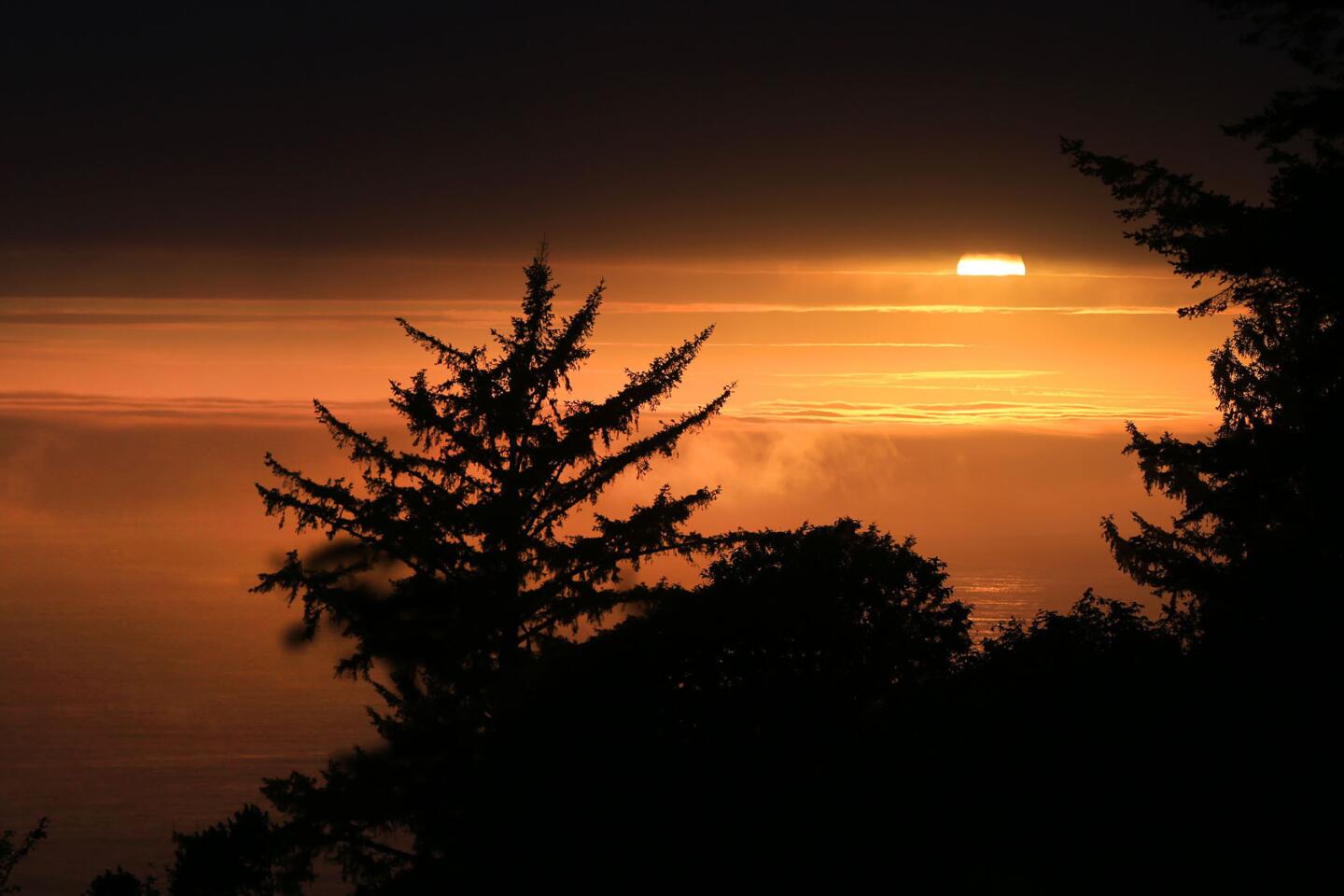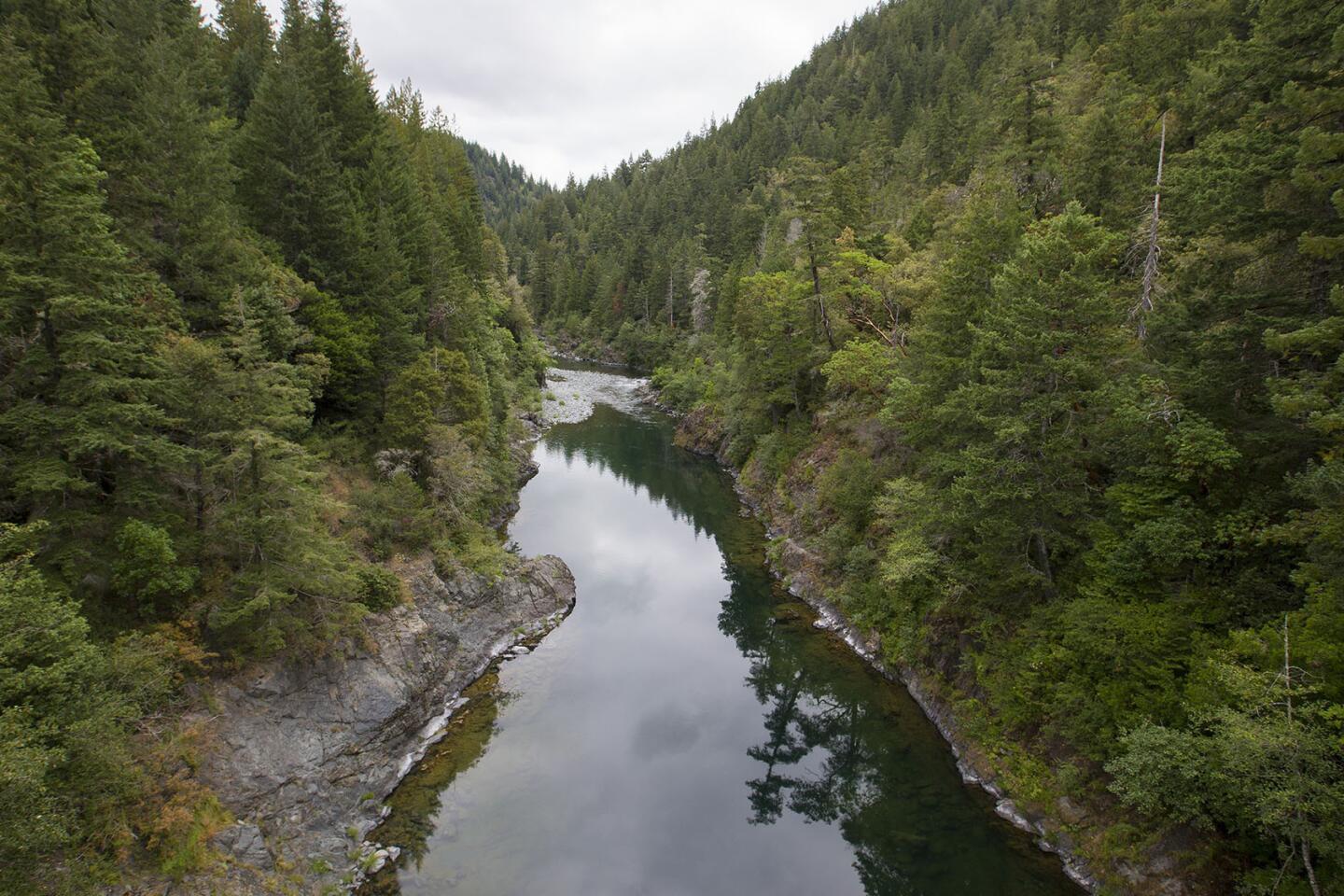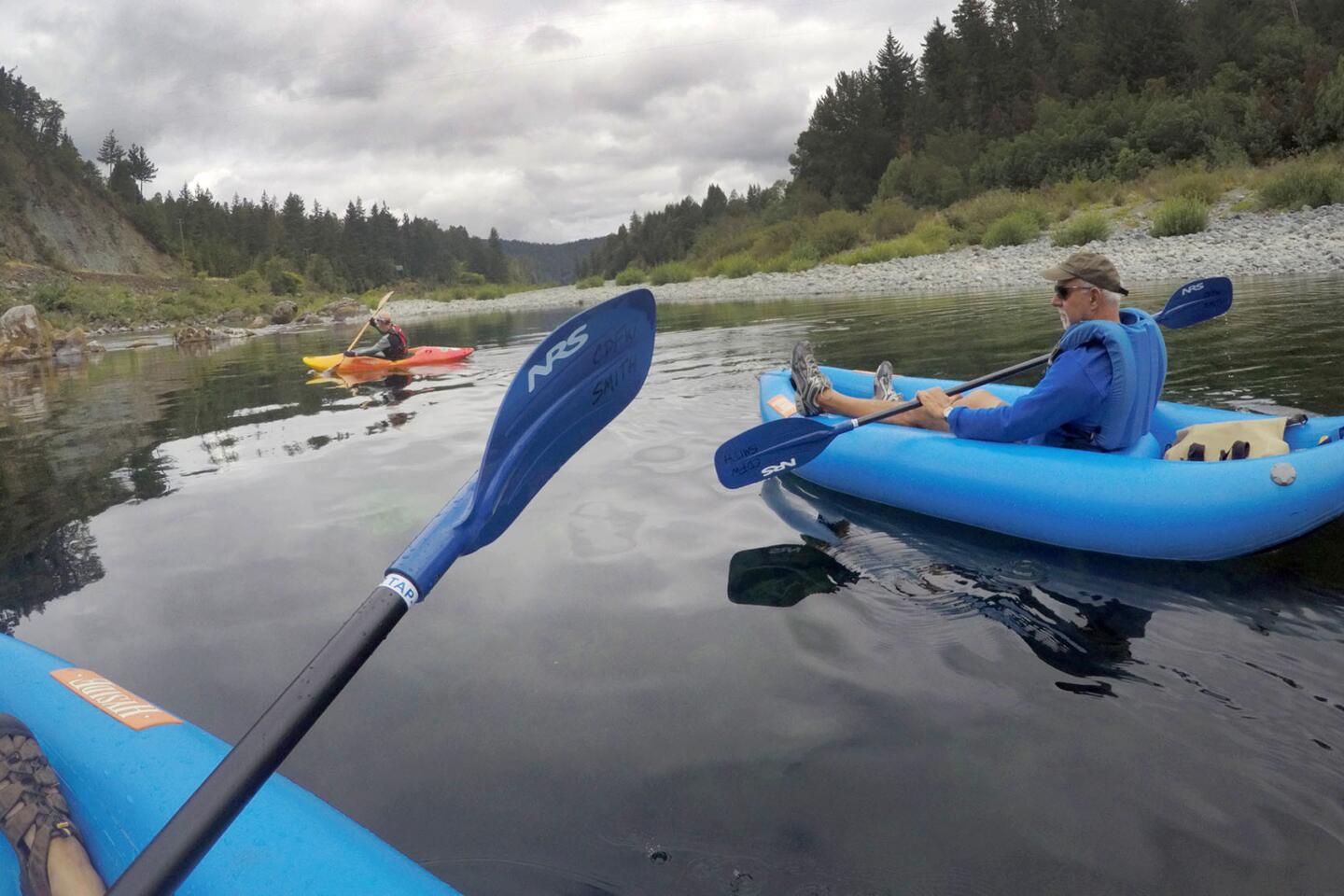The 1,100-mile California road trip that reminds: ‘The coast is never saved; it’s always being saved.’
- Share via
Once upon a time, the California coast was up for grabs.
Really up for grabs.
Industry took what it could, erecting mills, oil refineries and power plants. Mega-hotels squatted on beaches. Subdivisions sprouted by the dozens. People of means built homes with backyard oceans, blocking public access and views.
And then, in the 1960s, something extraordinary happened. People began demanding a halt to unregulated development, and began fighting to save what was left.
On Monday morning, I stood with one foot in Oregon and one in California.
Then I began the first leg of my 1,100-mile trek to the Mexican border, a summer trip along the length of the state to study coastal preservation. Along the way I’ll be reviewing past victories and disappointments with an eye toward understanding what Californians might do to make sure today’s infants’ grandkids can still enjoy this glorious landscape.
The timing is right for two reasons.
First, this is the 40th anniversary of the California Coastal Act that resulted from all the activism of the 1960s and early ’70s.
Second, developers are warming up bulldozers along several stretches of the coast at a moment when the state Coastal Commission has stirred up a troubling little political drama.
Commissioners fired Executive Director Charles Lester in February for reasons that don’t add up. Some have challenged the science of experts as if they’re carrying water for developers. And Gov. Jerry Brown has been invisible, leaving reasonable people to assume he likes the way business at one of the nation’s most powerful regulatory agencies is being conducted.
But two ethics investigations are underway involving campaign donations from an executive with the most powerful coastal lobbying firm, and two legislative reform efforts are in play, one of which would put an end to private confabs between commissioners and those who want to build something on the coast.
When my plane landed in Arcata, my first visit was with former California Coastal Commission Chief Counsel Ralph Faust, who reminded me of the words of former agency Executive Director Peter Douglas:
“The coast is never saved. It’s always being saved.”
The coast is never saved. It’s always being saved
— Peter Douglas, former Coastal Commission executive director
Douglas was right. It’s a constant battle to save the coast, not just from big industrial projects, but from hundreds of little ones where someone wants to build or expand a house that could impinge on the public’s right to access or views.
But like I said, the victories are many, and they offer lessons and inspiration going forward.
An hour after talking to Faust, I hiked the Ma-le’l Dunes on Humboldt Bay with Jen Kalt of Humboldt Baykeeper. This 160-acre treasure has been called one of the most pristine dune systems on the West Coast, a place where forest meets sea and both the landscape and vegetation are unlike anything I’ve seen. The dunes go on forever, then rise up and over a berm to miles of crashing waves.
And yet it was in danger of being destroyed.
“You’d be walking in the dunes and see a motorcycle track,” Kalt said.
The land was privately owned by a dune buggy club with big plans to transform a gift from Mother Nature into an off-road vehicle playground — at least until conservationists and local officials began a battle to turn the environmentally sensitive habitat over to the Humboldt Bay National Wildlife Refuge.
In the early 1990s, the California Coastal Commission approved an amendment to the area’s local plan, banning off-road vehicles.
“Those are shore pine, this is Sitka spruce, these are bearberries and that’s reindeer lichen,” Kalt, a botanist, said as we walked past marshland, through forest, on our way to the lunar landscape of the dunes.
We passed signs saying motorized vehicles are prohibited.
In places the California coast is cold and gray and wet, and the sea-misted red hues on beach-strewn driftwood is brilliant.
At the Oregon border, I saw no swimmers, no surfers, no flip-flops.
The coast is different here, much wilder than the Southern California shore, and if you haven’t seen it, you should, if only for the rocky crests and curtain of giant redwoods that rise in full majesty from the edge of the continent.
One early stop, just north of Crescent City, was the scene of another California Coastal Commission victory.
Pacific Shores was sold in the 1960s as a dream community in the making. For as little as $1,800, a half-acre parcel could be had, and with it, the possibility of one day building an affordable vacation getaway or retirement home.
More than 1,500 dreamers were easily hooked, many of them sending checks from Southern California and even Hawaii. It all sounded too good to be true.
And it was.
Streets were paved and remain to this day in the ghostly seaside expanse, but when it came time to build sewer systems and other utilities, the Coastal Act was firmly in place and it forbade this very type of development.
The Coastal Commission’s Douglas, traveling north with zoologist Bill Kier, the state Senate’s natural resources guru, identified Pacific Shores and surrounding privately owned land as coastal habitats crucial to bird and marine life.
To them, these were treasures, not commodities, and the public had a duty to reclaim and refurbish them for current and future generations.
“The Coastal Act gave us a long time to work on it, “ said Patty McCleary of the nonprofit Smith River Alliance, which facilitated the state’s purchase of many of those parcels.
Today more than half the land is in public hands, and McCleary, along with husband and business partner Grant Werschkull, hopes to one day complete the purchase of the remaining parcels.
On a tour of the surrounding land, I saw what might have been lost if Pacific Shores had been built. A wildlife paradise abounds between mountains and sea. Werschkull spotted and identified dozens of birds as they chirped a symphony with the whisper of waves in the distance.
“I don’t think you can appreciate the Coastal Act until you go to other states, where the beaches are private,” McCleary said. “It’s different here, where we have this California experiment.”
My next stops are Shelter Cove, Sea Ranch and Bodega Bay, where I will meet with some of the pioneers who gathered signatures in 1972 for Proposition 20, which changed everything.
Four years after that, the Coastal Act became law.
Forty years later, the coast is still being saved.
ALSO
He admitted to shooting his decades-long friend in the back of his head — as a favor, he says
Court commissioner calls Venice boardwalk cleanups ‘troubling,’ refuses to punish homeless advocate
In Westlake, homeless people take cues from immigrant street vendors
More to Read
Sign up for Essential California
The most important California stories and recommendations in your inbox every morning.
You may occasionally receive promotional content from the Los Angeles Times.
